
Himalaya Discovery Adventures

Nar Phu Valley Trek
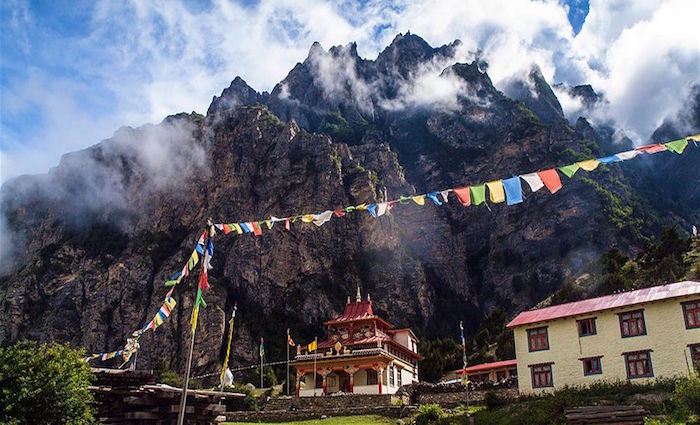
The Nar Phu Valley trek is located within the Annapurna Conservation Area i n the northwest of Nepal.
The valley is surrendered by unspoiled mountain valleys and mountains, combining pure Himalayan nature with ancient Buddhist traditions.
The language and culture are similar to Tibet, and the area is bordering Tibet through the high Himalayan passes. In 2002, this region was opened to foreign visitors, but it only became popular when visitors started to be accommodated by local home-stay in 2010. Camping was the only choice before that.
It remains today one of Nepal’s best-touched trekking areas. The Annapurna Circuit is very crowded with too many tourists during each season, lying next to the Nar Phu Valley trek region. Next door in the Annapurna region, Nar Phu Valley is considered to be one of the best remote and off the beaten trails.
The Nar Phu Valley trek is the ultimate option for trekkers looking to avoid the crowds.
Nar Phu Valley Trek – Highlights
- Nar Phu Valley–a hidden gem in the mountains of the Himalayas
- No motorway on 95 percent of the hiking trail
- Opportunity to camp in Buddhist monasteries or to visit nearby homestay.
- Discover unspoiled mountain valleys with a mixture of raw Himalayan nature and ancient Buddhist culture
- Nar Phu Valley is situated in the Himalayan rain shadow, making it a great destination for monsoon trek.
Nar Phu Valley Trek Permits & Required Documents
Anyone traveling to Nar Phu Valley must have two different types of permits. Since the Valley is part of the restricted area, you must be accompanied by a licensed guide in a group of at least two trekkers.
Your trekking company will then arrange for your permit to travel through this unseen land.
Nar Phu Valley Trek Permit Costs
- Annapurna Conservation Area Project permit cost USD 30 per person
- Restricted Area Permit (September – November) USD 100 per person/per week
- Restricted Area Permit (December – August) USD 75 per person/week
You need a copy of your passport, a passport-sized photograph, and the original passport with the visa stamp to obtain the Nar Phu area trek permit.
Except public holidays, it will take 3-4 hours to get the permit from Sunday to Friday (opening hour from 10:00 am to 5 pm). If you don’t have the time yourself, this can be done for you by your trek agent.
Regulations also specify that in order to get the permits, at least two trekkers should be in one group.
Guide and Porter Hiring for Nar Phu Valley Trek
For the Nar Phu Valley trek, a guide is required. Although Nepal has some trekking trails where without a guide tourist can hike, this does not apply to the Nar Phu Trek.
- Sherpa Guide cost: USD 33 to 35 per day
- Guide Porter cost: USD 22 to 25 per day
- Porter cost: USD 18 to 20 per day
Getting Nar Phu Valley Trek
The Nar Phu Valley trek begins from Koto. The trail follows a circuit route via the Kang La pass (5.240 m) during the trek. The trail ends at the same point that you started making a loop.
You travel by bus from Kathmandu to Besisahar and then to Manang to get to the trailhead. There are local buses and mini minibuses available on the Kathmandu-Besisahar-Kathmandu route. But you have to share a local jeep to Koto from Besisahar.
Transportation Costs for Nar Phu Valley Trek
- Hotel to bus station by taxi: USD 4 to 6 USD
- Kathmandu to Besisahar by local bus USD 5 to 8 USD p.p.
- Kathmandu to Besisahar a private car (3 people and luggage) USD 120-150
- From Besisahar to Koto a local sharing jeep USD 25 to 30 USD p.p.
Nar Phu Valley trek begins with a scenic drive from Kathmandu to Besisahar vai Prithivi highway. It is about 175 km long and the condition of the road is generally good. However, the road between Besisahar and Koto is muddy and dusty.
This is an off-road journey. The travel time between Koto and Kathmandu is about 9 to 10 hours; if there is no delay. Some trekkers choose to stay overnight in Besisahar (most likely from Kathmandu you will arrive early in the afternoon) and start the next morning fresh for a bumpy ride to Koto!
Meals Costs During the Nar Phu Valley Trek
The Nar Phu Valley is a remote region of Nepal, so the food costs on the Nar Phu trail are generally more expensive than in the Annapurna Circuit area. This remoteness also includes more restricted menu choices.
As anyone knows who has been on other high-altitude treks in Nepal, the higher you go the more expensive food items are (due to having to be carried up there and in this area, by mules).
You should have a budget of around 5-7 USD per meal. For three meals, about USD 25-30 a day. This does not include alcohol (if any)! It also depends, of course, on your appetite! But even if you don’t feel hungry, remember you have to eat for trekking. Drinking water will strongly push up your spending.
On average, 1-liter of water will cost about USD 1,5 to 2 USD at lower altitudes and USD 4 at higher altitudes. To save money, bring purification tablets or a water filter!
What Kind of Food to Expect in the Nar Phu Valley?
- Each guesthouse/homestay provides a menu of basic food.
- All vegetables served in tea houses or homes are produced from their garden. So, it’s organic!
- Not all villages provide meat (chicken, mutton and pork). Beef is almost non-existent here, please note. Yak meat may be available in some areas, though. Ask your guide which meat is on the menu to find out if the meat is fresh or not. It is difficult to raise animals for consumption and it is difficult to store meat over the winter.
- Every time you’re hungry, you won’t find tea houses. Bringing energy bars or chocolate will give you that extra boost!
- “24-hour dal-bhat power.” Nepali’s most popular dish helps you to eat as much rice as you can, at no extra cost. Rice is perfect because the trek needs carbohydrates!
Drinking Water
Relatively clean and drinkable fresh streams off the mountain. You’ll see local people drinking this water and your guide. BUT, it’s used to them.
You should use purifying tablets or drops or carry a portable water filter to avoid any upsets that ruin your trek. Always, it’s safe than sorry.
In every village, bottled water is available for purchase, at lower elevations approx. USD 1,5 and higher altitude USD 3 to 4 USD. Many trekkers use drops / tablets or water filters for water purification to save money. Water sources are typically available on the trail everywhere/stop points.
Drinks Cost During the Nar Phu Valley Trek
In the Nar Phu Valley, the cost of tea and coffee is nearly the same as in other mountain regions, slightly cheaper than in the Everest region
A cup of tea – USD 1.5 to 3 USD A cup of coffee – USD 2 to 4 USD A bottle of beer – USD 5 to 7 USD
- Bottled water can be bought at about USD 2 at the lower elevation and USD 4 at higher altitudes in each camp.
- Many trekkers use drops / tablets or water filters to save money. Drops / tablets for water purification are the best in practice.
- You don’t have to carry more than two liters of water during the day. Normally there is a water source on the trail where you can fill up every one to two hours. Please ask your water sources guide to be found every day along the way.
- Carry at least one bottle (1-liter).
- At this elevation, your body needs plenty of water. It is recommended to drink at least 3 liters per day. To avoid dehydration, please drink as much as you can. It also helps to properly acclimatize and filter the blood.
Accommodation Facilities on the Nar Phu Valley Trek
Basic accommodation in the Nar Phu Valley is not a problem at all, as tea houses have begun to spring up in every settlement area that serves visitors. It’s not an issue for a small group of up to 6 to 10 trekkers.
On a sharing basis, the cost of one twin room is about USD 5 to USD 7 per person per night. The cost will be USD 5-7 twice, if you want the entire room to yourself.
Please note that if it is extremely busy, you may have to share a room, as with other trekking areas, even if you are able to pay for the extra bed on your own.
What to expect Accommodations During the Nar Phu Valley Trek?
Where are you going to sleep? What to expect accommodations during the Nar Phu Valley Trek? Home-stays are typically very common, with the family sharing the same room. You’re going to sleep in a Buddhist temple in Nar Phedi, sharing space with a monk.
- There is a basic private room with a shared toilet available throughout the trek. Please, however, expect a couple of nights in very basic accommodation where you may need to sleep and share a room with other trekkers. Living in a group again!
- Bring with you a sleeping bag and a mat (you can hire or buy in Kathmandu). While it may be possible to provide beds, blankets, pillows, etc., you may want your own cleaner version. Often, at night the weather might be cold, so sleeping bags are must.
- Extra blankets are provided at no additional cost in each camp. Except the night in a Nar Phedi monastery. Sheets are limited and only the bottom sheets are normally provided.
- In the common areas, but only in a few places and only during dinner time, room heaters or open fire will be provided. Here you can enjoy the time to interact with local Nepalis and other travelers. The sleeping rooms do not have heating, or sometimes in a shared room other than dinner.
- The toilets are very simple, usually located outside the house. If you go out at night, please take a torch with you, particularly if it’s near to the jungle with the possibility of wildlife. Bring with you enough tissues or toilet paper. Toilet paper can be bought at the teahouse.
- Do not negotiate. The price of the menu is fixed!
- Unless permitted, do not enter the kitchen.
- Usually, tea houses charge hot water for bathing. And there’s a charge for mobile phones, cameras, and so on. You may want to bring with you a power bank or a solar battery.
How Difficult is the Nar Phu Valley Trek?
The Nar Phu trek is rated for the Himalayas as a moderate trek. For example, the itinerary for this trek will take you from Kathmandu (1400 m) to Koto (2,600 m) on the first day.
Which is less than an altitude gains in one day when flying in from Kathmandu compared to Lukla (2,860 m) in the Everest Region. We have never experience people getting sick at Namche Bazaar (3,440 m) in the Everest region during our guiding in the Himalayas.
If we had to compare the Nar Phu trek elevation with the Namche elevation, we would say that you will only reach this height in 4 to 5 days. Although there are high passes, there is a lower altitude sickness ratio compared to other Nepal trekking areas.
This comparison shows that the region of Nar Phu is much better than the Khumbu region of the Everest Base Camp Trek. However, we cannot tell who is going to suffer from altitude sickness.
It’s not about age or health. Yet our route itinerary gives you plenty of time to acclimatize. And the trick is going slowly, stay hydrated, and take note of what your body tells you.
Nar Phu Valley Trek Itinerary
- Day 1: Arrive in Kathmandu, 1400m.
- Day 2: Preparation day and gear check.
- Day 3: Drive from Kathmandu via Besisahar to Koto, 2,600m; approx. 9-10 hrs.
- Day 4: Trek to Meta, 3,560m; approx. 7 hrs.
- Day 5: Trek to Phu, 4,080m; approx. 7 hrs
- Day 6: Acclimatization day in Phu with a side trip to Himlung Base Camp (4,800m)
- Day 7: Trek to Nar Phedi, overnight stay at monastery, 3,490m; approx. 6 hrs.
- Day 8: Trek to Nar Village, 4,110m; approx. 3 hrs
- Day 9: Trek via Kang La Pass (5,240m) to Ngawal, 3,650m; approx. 8 hrs
- Day 10: Ngawal to Hunde (3,350m) and local jeep to Besishar: approx. 8-9 hours hike down
- Day 11: From Besishar to Kathmandu by Mini-HiAce bus approx. 6 – 7 drive
- Day 12: Fly to home
Telecommunications on the Nar Phu Valley Trek
In case of an emergency, many telecommunications booths (small offices) are available. Local networks only operate in about 35% of this trekking area, whereas each village has an emergency contact VHF phone for any emergency, your guide will be able to contact the relevant people.
Nar Phu Valley Trek Packing List
Pack your clothes according to the hiking season. You’ll need warm gears for the cold. You’ll need a rain gear for the monsoon. Wear layers to remove the outer layer when feeling hot and sweaty.
- Hiking boot (ankle support boot recommended)
- Sleeping bag
- Sleeping mat
- Down jacket
- Sunscreen & Lip guard
- Ear Plug & Eye Mask
- A woolen cap
- A pair of hiking sandals
- Under wears
- Comfortable Sports Bras (for girls)
- Sanitary pads (for girls)
- Thermal vest and long johns to keep the heat in
- Pair of comfortable (quick-dry) hiking pants
- Hiking socks (woolen socks are recommended)
- Hiking bag (minimum 50l+10)
- Climbing shoe or crampon may require if the trail has thick ice, especially for late autumn. (Crampons can be bought or rented in Kathmandu)
Miscellaneous Costs
It’s well known that if something needs extra effort, don’t expect it to be cheap! You will be charged in the mountains for anything extra! The following are additional costs that you may want to consider when trekking in Nepal in addition to your budget:
Charging your gadgets : It certainly costs you a few dollars such as a camera, mobile phone, etc. It is necessary to pay the extra costs due to the high investment in the community for the small local hydropower station.
As you’re going to be in the mountains for many days, you will definitely need to charge at least your phone or camera (as you’d like to capture the landscapes!). You could also invest in a portable solar battery charger or a portable power bank It will also help with additional batteries for your camera.
Bucket hot shower: Water is heated by gas or firewood and every time it may cost you a few dollars. Please don’t expect a shower every day in the mountains. Yes, it’s just not practical and economical as much as we want to do that.
And if it’s cold, you may not want to get all your clothes off! So, for several days you should be prepared to smell the same as yesterday. And note that we’re all going to smell the same!
Another alternative would be to pack some wet wipes rather than a bucket of water and use them instead. As they are not biodegradable, please bring the used wet wipes back to Kathmandu for disposal.
Donations : If you’re visiting monasteries, gumba or stupa, even if it’s not mandatory, they’re expecting some small contributions to the premises.
Tips for the staffs: Your guide and porter are also expecting some tips from you after each trek. This will usually reflect on your experience during the trek, of course.
Generally, for a 12-day trek, USD 50 to USD 100 is an average, USD 5 to USD 7 a day. This is shared among the group’s trekkers. So, if you’re 10, expect to pay around USD 10 to USD 12 each for a 12-day trek.
How Much Does the Nar Phu Valley Trek Cost?
The local tour company can charge from USD 1000 to USD 2000 depending on the trek duration. The western operator can charge between approximately USD 2000 and 3500.
However, it makes more sense to choose a local tour operator because Nepali is the one with the most understand-how in Nepal. It’s as simple as that.
A licensed guide, a porter, basic food and accommodation, permit, local jeep / local bus to and from Kathmandu are included in the price The cost can vary slightly depending on the group size and the company you go with.
When is the Best Time to Trek the Nar Phu Valley?
The best trekking seasons in Nepal are September-November and March-May. The temperature in the lowland is pleasantly warm and at high altitude moderates.
Interestingly, this trek is in the Himalayan rain shadow. The Nar Phu Valley trek is thus one of Nepal’s best monsoon treks. This trek can be done without any difficulties between June to August.
And there will be a wider choice of accommodation in Kathmandu and Pokhara during the monsoon, and the cost will be cheaper.
Nar Phu Valley Trek Map
The Nar Phu Valley trek is a great alternative trekking trail in Annapurna region. It will be an exhausting off-road journey on the bumpy road from Besisahar to Koto as the road condition is not so smooth, but it’s worth all the effort when you reach your destination.
This trek combines visits to Natural Annapurna and high altitude trekking in the famous Annapurna region. If you have any questions regarding Nar Phu Valley trek or any other treks in Nepal, please contact us .
Do you have any question about trip to Nepal?
- Solo Traveller
- Number of child (if you have child in your family/group) (Optional)
- When will you be traveling?* * Day 1 2 3 4 5 6 7 8 9 10 11 12 13 14 15 16 17 18 19 20 21 22 23 24 25 26 27 28 29 30 31 Month 1 2 3 4 5 6 7 8 9 10 11 12 Year 2025 2024 2023 2022 2021 2020 2019 2018 2017 2016 2015 2014 2013 2012 2011 2010 2009 2008 2007 2006 2005 2004 2003 2002 2001 2000 1999 1998 1997 1996 1995 1994 1993 1992 1991 1990 1989 1988 1987 1986 1985 1984 1983 1982 1981 1980 1979 1978 1977 1976 1975 1974 1973 1972 1971 1970 1969 1968 1967 1966 1965 1964 1963 1962 1961 1960 1959 1958 1957 1956 1955 1954 1953 1952 1951 1950 1949 1948 1947 1946 1945 1944 1943 1942 1941 1940 1939 1938 1937 1936 1935 1934 1933 1932 1931 1930 1929 1928 1927 1926 1925 1924 1923 1922 1921 1920
- How many days do you have?* *
- Give your trip a short title* *
- Private Trip
- Bellow 200$
- 200$ - 500$
- 500$ - 800$
- 800$ - 1200$
- 1200$- 2000$
- 2000$ and above
- Describe your trip* *
- Full Name* *
- Your Email* *
- Country* * Afghanistan Albania Algeria American Samoa Andorra Angola Anguilla Antarctica Antigua and Barbuda Argentina Armenia Aruba Australia Austria Azerbaijan Bahamas Bahrain Bangladesh Barbados Belarus Belgium Belize Benin Bermuda Bhutan Bolivia Bonaire, Sint Eustatius and Saba Bosnia and Herzegovina Botswana Bouvet Island Brazil British Indian Ocean Territory Brunei Darussalam Bulgaria Burkina Faso Burundi Cabo Verde Cambodia Cameroon Canada Cayman Islands Central African Republic Chad Chile China Christmas Island Cocos Islands Colombia Comoros Congo Congo, Democratic Republic of the Cook Islands Costa Rica Croatia Cuba Curaçao Cyprus Czechia Côte d'Ivoire Denmark Djibouti Dominica Dominican Republic Ecuador Egypt El Salvador Equatorial Guinea Eritrea Estonia Eswatini Ethiopia Falkland Islands Faroe Islands Fiji Finland France French Guiana French Polynesia French Southern Territories Gabon Gambia Georgia Germany Ghana Gibraltar Greece Greenland Grenada Guadeloupe Guam Guatemala Guernsey Guinea Guinea-Bissau Guyana Haiti Heard Island and McDonald Islands Holy See Honduras Hong Kong Hungary Iceland India Indonesia Iran Iraq Ireland Isle of Man Israel Italy Jamaica Japan Jersey Jordan Kazakhstan Kenya Kiribati Korea, Democratic People's Republic of Korea, Republic of Kuwait Kyrgyzstan Lao People's Democratic Republic Latvia Lebanon Lesotho Liberia Libya Liechtenstein Lithuania Luxembourg Macao Madagascar Malawi Malaysia Maldives Mali Malta Marshall Islands Martinique Mauritania Mauritius Mayotte Mexico Micronesia Moldova Monaco Mongolia Montenegro Montserrat Morocco Mozambique Myanmar Namibia Nauru Nepal Netherlands New Caledonia New Zealand Nicaragua Niger Nigeria Niue Norfolk Island North Macedonia Northern Mariana Islands Norway Oman Pakistan Palau Palestine, State of Panama Papua New Guinea Paraguay Peru Philippines Pitcairn Poland Portugal Puerto Rico Qatar Romania Russian Federation Rwanda Réunion Saint Barthélemy Saint Helena, Ascension and Tristan da Cunha Saint Kitts and Nevis Saint Lucia Saint Martin Saint Pierre and Miquelon Saint Vincent and the Grenadines Samoa San Marino Sao Tome and Principe Saudi Arabia Senegal Serbia Seychelles Sierra Leone Singapore Sint Maarten Slovakia Slovenia Solomon Islands Somalia South Africa South Georgia and the South Sandwich Islands South Sudan Spain Sri Lanka Sudan Suriname Svalbard and Jan Mayen Sweden Switzerland Syria Arab Republic Taiwan Tajikistan Tanzania, the United Republic of Thailand Timor-Leste Togo Tokelau Tonga Trinidad and Tobago Tunisia Turkmenistan Turks and Caicos Islands Tuvalu Türkiye US Minor Outlying Islands Uganda Ukraine United Arab Emirates United Kingdom United States Uruguay Uzbekistan Vanuatu Venezuela Viet Nam Virgin Islands, British Virgin Islands, U.S. Wallis and Futuna Western Sahara Yemen Zambia Zimbabwe Åland Islands Country
- Phone Number (Optional)
You May Also Like...
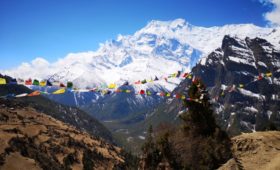
Best Time To Trek Annapurna Circuit

How Difficult is it Trek to Annapurna Base Camp
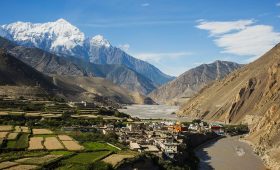
Upper Mustang Trek Map
Leave a reply cancel reply.
Your email address will not be published. Required fields are marked *

“I was born and raised in Nepal, nearby Everest region. I am proud to be a native Sherpa, and I have been a Mountain guide over a decade now. Following my passion, I decided to start helping travelers with their travel plans! I think life is a journey, a trip where you collect experiences when you share with other people and with nature.”
Privacy Overview

Nar Phu Valley Trek Permit- How to Get on 2024?
Want to know how to get Nar Phu Valley Trek Permit in 2024? Lets know how to get it. The Nar Phu Valley Trek shows the remote and cultural region of Nepal which offers amazing views of the himalayas and highlights of the traditional Tibetan cultures. However , due to its restricted location , there is now the need for a Nar Phu Valley Trek Permit in 2024. Here’s what you need to know about Nar Phu Valley Trekking Permit in 2024
Highlights:
1. Types of Nar Phu Valley Trek Permits 2. Important Tips while getting Nar Phu Valley Trek Permit 3. Some Additional Information 4. Regulations and Restrictions of Nar Phu Valley Trekking 5. FAQ related Nar Phu Valley Trekking Permit
Types of Nar Phu Valley Trek Permits
A. mandatory permits:, nar phu restricted area permit (nprap): .
This permit is the main procedure to access the Nar Phu Valley which can only be obtained through immigration office in kathmandu. But this can be depend on the season like: September -November : USD 100 Per Person for seven days. Note: USD 15 per additional day December -August : USD 75 per person for seven days. Note : USD 10 per additional day
Annapurna Conservation Area Project (ACAP)Permit:
This permit is required for trekking in the Annapurna Conservation Area which includes parts of the Nar Phu Valley Trek . It costs around NPR 3K per person which will be 25 USD.
B. Additional Permits ( Not Mandatory)
Trekking information management system (tims ) card:.
This card is optional for the Nar Phu Valley Trek. But it is recommended if you have plans to add Annapurna Circuit Trek and Cross Thorong La Pass too. The cost will be USD 10 for Groups and USD 20 for individual trekkers.
Getting Permits
Nprap : .
As I mentioned earlier , you can only get the NPRAP at the Immigration Office in Kathmandu . The office will open from 10:00 Am to 4:00 Pm from Sunday to Thursday and on Friday it will be 10:00 Am to 2:00 Pm . To obtain the permits: 1. A completed application form which is provided by the office. 2 Passport sized photos 3. Passport copy of yours 4. Detail Trekking Itinerary 5. The Name and contact details of the trekking guide. (If Possible)
ACAP:
This ACAP permit can be purchased at various locations in Nepal like Nepal Tourism Board office in Kathmandu or Pokhara and if you need district headquarters you can find out at Manang. To obtain ACAP Permit you will need: 1. Application form 2. One passport size photo 3. A copy of your passport
Important Tips while getting Nar Phu Valley Trek Permit
Book in advance should be high priority:.
The number of nar phu valley trekking permits are issued daily in a limited number so it will be good to book your trek and obtain permits well in advance which is especially during hype season like September to November.
Be ready for Changes:
You have to be prepared for the changes of permit fees and regulations . So , it will be good to check the latest information from Nepal Tourism Board or a reputable trekking agency .
Hiring a Trekking Agency:
Trekking agencies can guide for the application process of Nar phu valley trekking permits. You can relax because they will arrange transportation, provide a guide which is mandatory for the Nar Phu Valley.
Some Additional Information
- The Nar Phu Valley is only flexible for those trekkers who are part of an organized group led by a government licensed trekking guide.
- The trek will be moderately challenging with high altitudes.
- Best time to trek Nar Phu Valley is during the Spring (March -May) or autumn (September to November ) but when the weather is good.
Regulations and Restrictions of Nar Phu Valley Trekking
The Nar Phu Valley Trek offers stunning scenery and a glimpse of traditional Tibetan culture . But having a restricted location you have to know regulations and restrictions that trekkers must follow. Here are some: 1. While going off trail is banded for safety and conservation reasons. 2. You should respect local customs and traditions where you have to dress modestly and avoid offensive behavior. Always take permission before photographing local and other places. 3. Pack all the trash and throw it at disposal points because it is restricted to throw trash. 4. It is strictly prohibited to camp at sensitive areas . Always have camping on campsites. 5. Make sure that you do not disturb wildlife and their habitats. 6. By understanding and respecting these rules and regulations , you can have a safe and enjoyable Nar Phu Valley Trek . 7. Always remember that you have to be responsible trekkers and respect their environment.
SEE THE PACKAGE OF NAR PHU VALLEY TREK
Challenges for Nar Phu Valley Trek
1. language barriers.
Language barriers can be created while you are in remote areas. So, it will be good to learn basic local phrases or hire a guide who is expert in both English and the local language. This will make better communication with locals and guides.
2. Permits for solo trekkers
Some areas may be restricted for solo trekkers or if there is no restriction then there will be requirements for solo trekkers. So, plan in advance and check the rules and regulations for Nar phu valley trek permit .
3. Delaying on permit processing:
It might be delayed for processing on the permit so it may disturb your trekking schedule. So apply for the permits in advance and stay informed about any changes .
4. Facing Altitude Sickness
Nar Phu valley involves high altitude while trekking so there might be the risk of altitude sickness. To minimize this risk you have to take rest,staying hydrated regularly. And you have to be aware of symptoms of altitude sickness so always carry medication and consult healthcare before trek.
5. Facing weather Challenges:
There will always be unpredictable weather conditions , mainly in high altitude . So, you have to check weather forecasts before the trek and be prepared for various conditions. Packing warm clothes and waterproof gear can be the best option for you.
6. Limited Accommodation facilities:
You can get tea houses and other facilities in a limited area. And if you get one , they may be basic. So, it will be good to be mentally prepared for basic amenities. Carrying important items like camping gear if necessary.
So, having well prepared , informed and flexible , you can overcome the challenges and make the trekking experience better.
FAQ related Nar Phu Valley Trekking Permit
What is the level of nar phu valley trek .
The level of Nar Phu Valley Trek is moderately difficult. It is best suited for physically fit and experienced trekkers who are comfortable with high altitudes , challenging terrain and limited amenities. But through the preparation and hiring a reputable guide can make the trip more safe and enjoyable.
How expensive is Nar Phu Valley Trek?
The cost of Nar Phu Valley Trek can be dependent upon several factors like permits and fees , trekking agency, and independent trekking.
Where can I obtain a Nar Phu Valley Trekking Permit ?
Nar Phu Valley Trek permit can be obtained from the immigration office of Kathmandu which is situated in kalikasthan.
Is a TIMS permit required for the Nar phu valley ?
TIMS permit is not mandatory unless you have plans to add annapurna circuit trek with nar phu valley .
Do I need a guide for the Nar Phu Valley Trek?
Yes, you need a registered trekking guide or porter for Nar phu valley trek because there is a restricted area of the Annapurna Region.
More Tour Packages
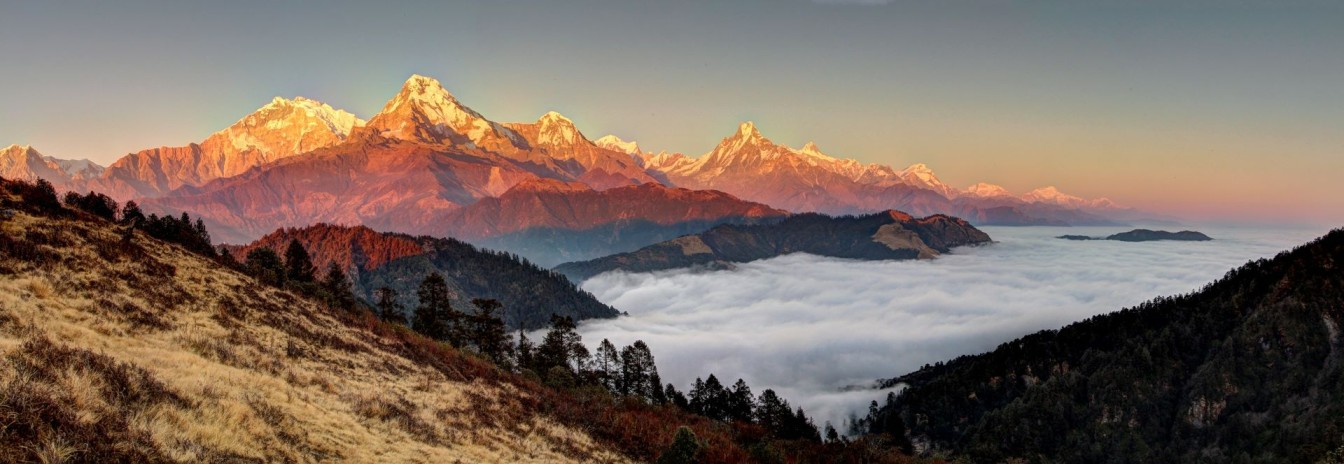
Mulde Hill Trek

Mohare Danda Trek
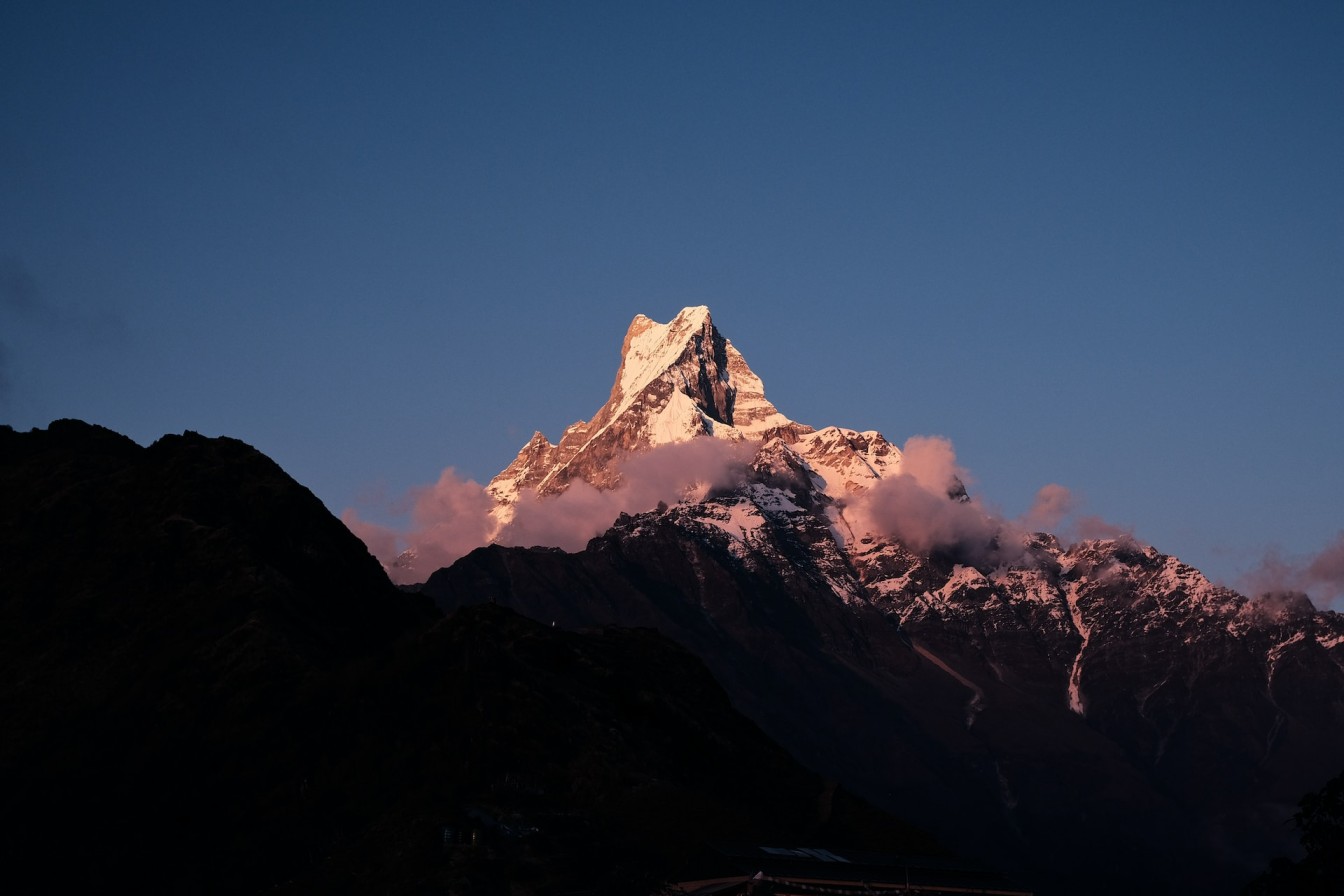
Mardi Himal Trek
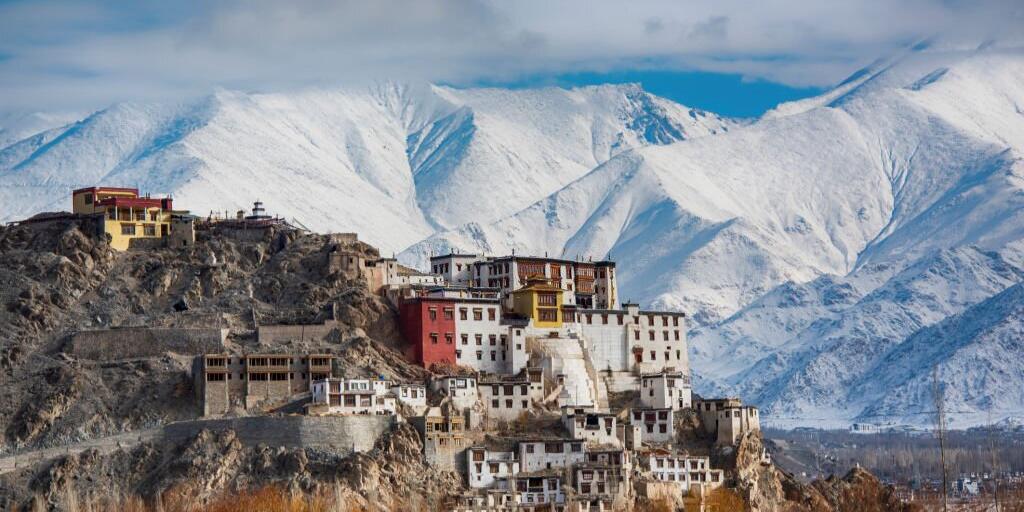
Places to Visit in Mustang on a Budget
Are you looking for Places to visit in Mustang? Don’t worry you will find it here! Mustang is an incredibly unique and beautiful regi..
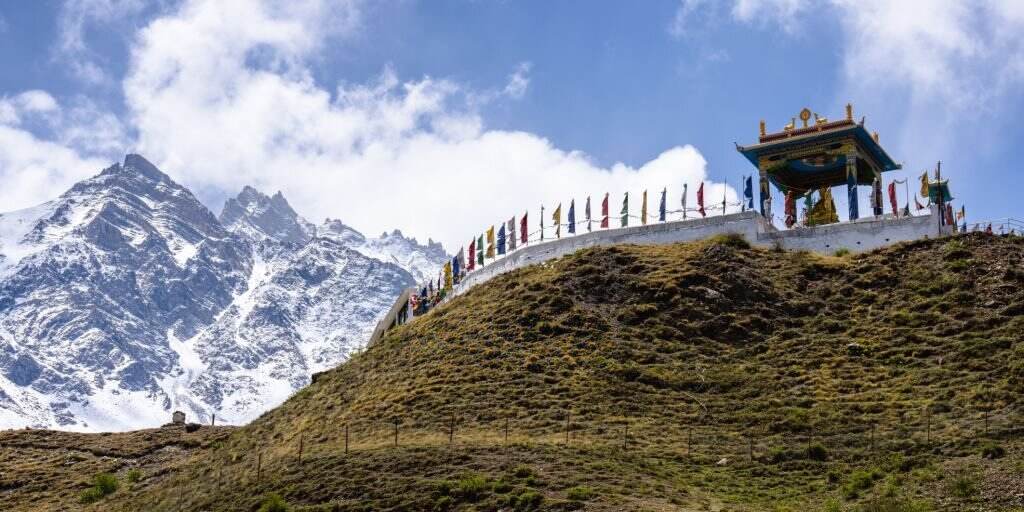
Best Time to Visit Mustang Nepal on 2024
Best time to visit mustang Nepal is during the spring March to May) and autumn (September to November) seasons. But why? You will know ..

Is Nepal safe for female travelers?
Is Nepal safe for female travelers? Obviously Yes !!. In the United States, 65% of women travel alone, according to a Booking.com surv..
- [email protected]
- +977 9841161593
- +977 9851149890

- You are here:
- Trekking and Hiking
Required Permit for Nar Phu Valley Trekking
a sublime trail for isolation in the Himalayas...
- Updated on Dec 24, 2023
Notice: Nepal bans solo trekking for foreigners, which came into effect on 1st April 2023
Nar Phu Valley is one of the exotic off-the-beaten trails of the entire Annapurna region hidden between the two most popular eight-thousander mountain ranges of Manaslu and Annapurna. The trail to Nar Phu will take one to the ancient civilization of the Tibetan settlement.
Its beauty cannot be uttered until you experience it. With a limited flow of trekkers, Nar Phu Valley has been able to maintain its uniqueness and beauty, as the valley falls under the restricted area of Nepal.
Table of Contents
The Government of Nepal has declared 15 different areas as restricted zones to control the flow of travelers and Nar Phu Valley is one of them.
You will need a special restricted area permit to hike to Nar Phu Valley and this can only be obtained from the immigration department of Nepal, situated in Kathmandu but to obtain this restricted permit you need to follow the strict provisions of the government of Nepal.
Solo travelers are prohibited from entering Nar Phu Valley which means at least two foreign travelers must meet to obtain the restricted area permit for Nar Phu Valley.
Apart from this, you must apply for the restricted permit through the authorized agency of Nepal and must have a guide or porter (license holder) to accompany you throughout the trek of the restricted zone.
When all these requirements are met, you will be able to trek to one of the popular restricted zones of the Annapurna region which is, without doubt, the Nar Phu Valley.
Moreover, to enter Nar-Phu Valley you must have two different permits, which are a Special Restricted Area Permit (RAP) and Annapurna Conservation Area Project (ACAP) Permit but if you want to extend your trek, or merge the trip to Annapurna Circuit Trek then an additional of TIMS Permit is required.
Here in this article, we try to figure out the required permits for the Nar-Phu Valley trek and how this trip can be merged into different trails of the Annapurna region. This is solemnly through my personal touch sharing my experience.
Special Restricted Area Permit for Nar-Phu Valley Trek
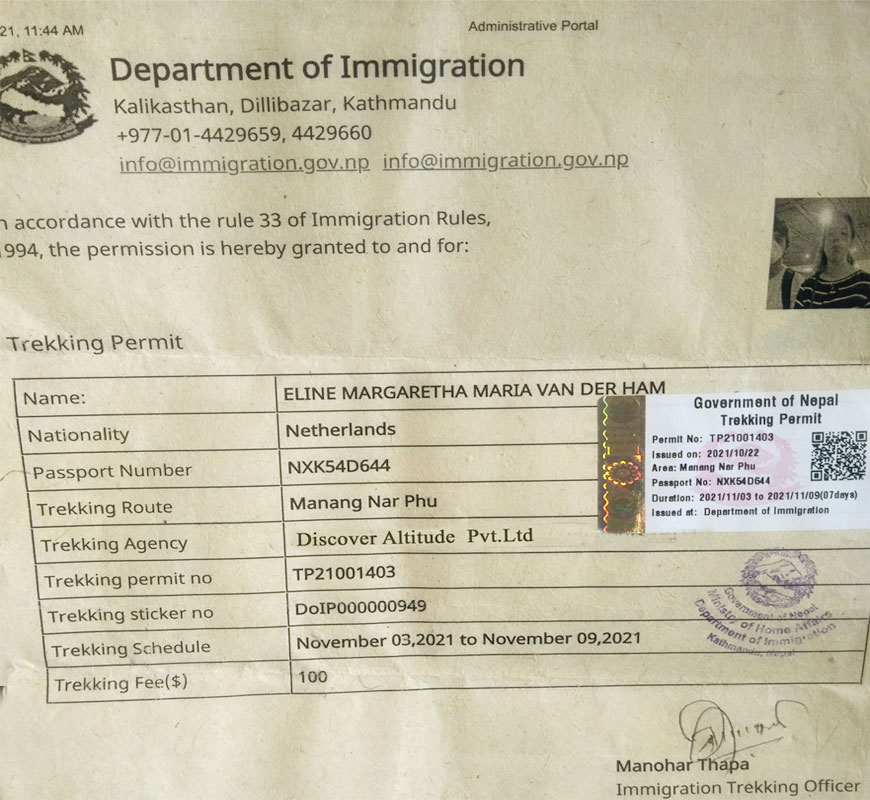
15 different areas in Nepal have been declared restricted zones by the Government of Nepal to control the flow of foreign tourists and Nar Phu Valley is one of them.
But you can enter the restricted zone through a special permit which can only be obtained from the Department of Immigration in Kathmandu, Nepal.
For this, you need to follow a special provision; which includes that at least two trekkers must meet for the permit and this permit can only be obtained through the authorized trekking agency of Nepal.
Apart from this, you need to have an authorized government license holder guide to accompany you at least throughout the restricted area.
Permit Cost:
→ December to August: USD 75 per person for the first seven days and USD 15 additional charge from the eight days onwards per person for each day, if being in the restricted zone only.
→ September to November: USD 100 per person for the first seven days and USD 15 additional charge from the eight days onwards per person for each day, if being in the restricted zone only.
Annapurna Conservation Area Project (ACAP) Permit
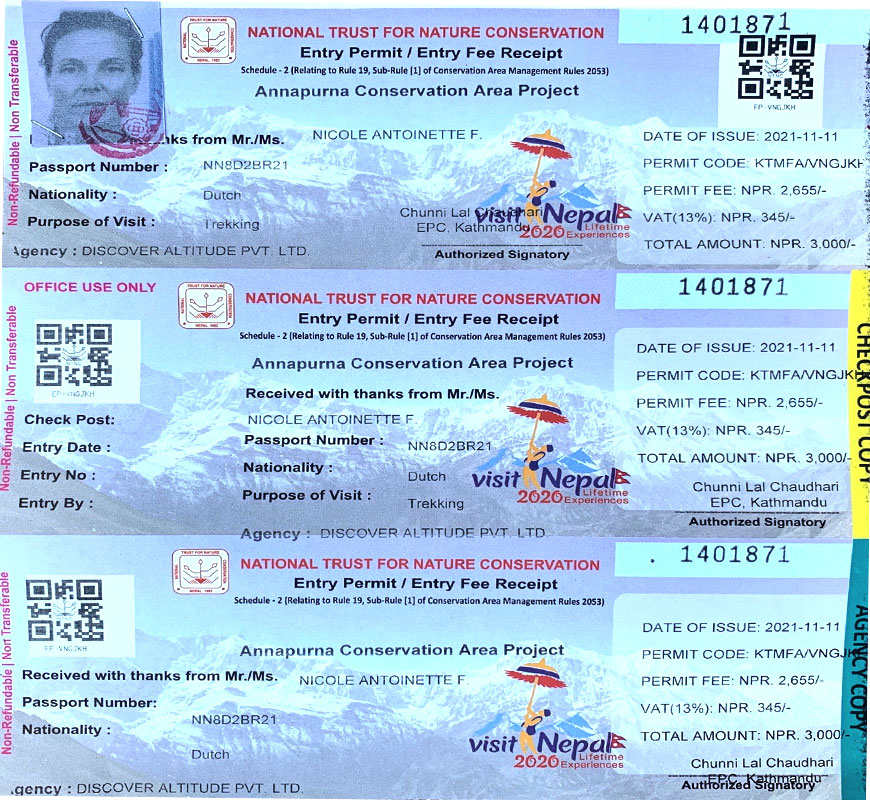
Annapurna Conservation Area Project (ACAP) Permit is the other permit required for the Nar Phu Valley trek. This is so because Nar Phu Valley comes under the Annapurna Conservation Area.
This ACAP permit can be used for an unlimited number of days if you are planning to merge your trek into the different trails of the Annapurna region which also includes the Annapurna Circuit trek.
ACAP permit fees cost USD 30 per person for a single entry for an unlimited number of days and remain the same throughout the year.
Trekkers’ Information Management System (TIMS) Permit
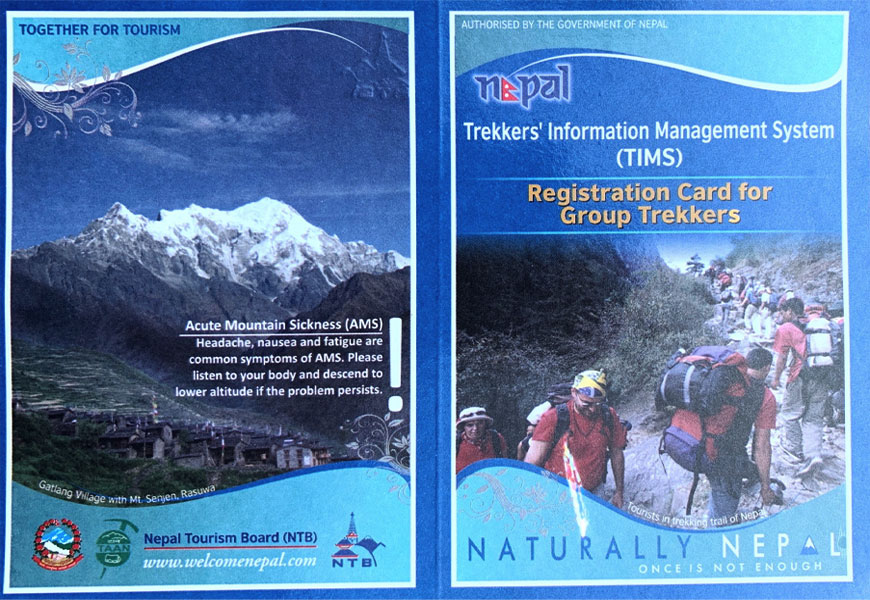
TIMS is not a mandatory permit for the Nar Phu Valley trek but if you are planning to extend your trip towards Annapurna Circuit trek, then a TIMS permit will be mandatory.
TIMS permits cost USD 20 for independent trekkers and if obtained through a registered agency in Nepal for an unlimited number of days.
How Can Nar Phu Valley Trek be diverted into different regions of the Annapurna region?
Nar Phu Valley Trail lies in the Annapurna region of Nepal and the valley is surrounded by two different Himalayan regions Annapurna and Manaslu regions. This makes the valley hidden in between the two giant Himalayas.
As Nar Phu Valley is a restricted area of the Annapurna region which starts from across the town of Koto and until Kang La passes then you can merge the trail towards the Annapurna circuit. This can be extended into a couple of days or a couple of weeks, this depends upon your time frame.
When you divert your trail into other areas of the Annapurna region through the same ACAP permit. You will be able to explore Tilicho Lake, Thorung La Pass, Muktinath, Jomsom, Marpha Village, Tatopani, Ghorepani-Poonhil , Ghandruk, Mardi Himal Base Camp , Annapurna Base Camp , and many more.
Annapurna is one of the diverse regions of Nepal and you can extend your trail into different directions according to your interest and time limit, but the Annapurna region is limitless in terms of the trial.
For further details regarding the Annapurna region trail, please let us know , we will assist you to give ample view to make your journey magical.
Frequently Asked Questions for Nar-Phu Valley Trekking:
Do I need a guide for the Nar Phu Valley Trek?
Yes, a registered trekking guide or porter is mandatory for the Nar Phu Valley trek because this falls under a restricted area of the Annapurna region, where solo trekkers are forbidden to enter.
Is it mandatory to have an agency (to) obtain a restricted area permit for Nar Phu Trek?
Yes, solo or group trekkers are prohibited from obtaining restricted area permits in Nepal by themselves. To make it easy going with the permits of the restricted area, you need to have an authorized trekking agency in Nepal, who on your behalf can arrange permits and take responsibility for the entire trip.
How expensive is the Nar Phu Valley Trek?
The price of the Nar Phu Valley trek mainly depends upon your starting point of the trek. If you centered Kathmandu as your starting point and ending point for the entire trek then the price is USD 75 (December-August) and USD 100 (September-November).
This price is only for the first 7 days, from the date you enter the restricted area. An additional USD 15 will be charged per day if you cross the number of days in the restricted area.
Trekking in Nepal for any gender is a safe destination. Nar Phu Valley is a remote area trek of the restricted region and it is mandatory to have at least two trekkers to obtain a special permit with a registered guide (mandatory).
This makes trekking in the Nar Phu Valley a safe destination, your guide will communicate with the locals arrange lodges, and lead you through the trail.
Can we obtain a Nar Phu Valley restricted area permit before we arrive in Nepal?
Yes, this is possible only in the case that you have a valid visa for Nepal which can be obtained from the embassy or diplomatic mission of Nepal in your home country.
If you obtain a visa before you arrive in Nepal, you can contact your travel agency in Kathmandu and send them your visa details and printed color photocopy through the mail.
On your behalf, they will arrange a special restricted permit to save you an extra day in Nepal for the official process of the permit.
When can we obtain the Nar Phu Valley restricted area permit?
Restricted area permits for Nar Phu can be obtained through the immigration office in Kathmandu only. This office is open from 10 Am to 4 PM from Sunday to Thursday and 10 AM to 2 PM on Friday.
And make sure Saturday is the weekend in Nepal and offices will also remain closed on other official holidays declared by the government. So, keep an eye open to save your extra day/days in Kathmandu, or contact your agency.
How long does it take to issue a Nar Phu Valley restricted area permit?
Obtaining a restricted area permit for Nar Phu is an easy process, but time mainly is used in uploading all documents of trekkers and the agency which has to be done at the immigration office.
However, it will not exceed more than 2-3 hours to complete this process and hold the permit in your hand.
Where can I obtain a Nar Phu restricted area permit?
Nar Phu Valley restricted permit can only be obtained through the immigration office of Kathmandu, situated at Kalikasthan.
Do I need to have a TIMS Permit for the Nar Phu Valley Trek?
TIMS permit is not mandatory for the Nar Phu Valley trek unless you plan to merge Nar Phu with the Annapurna Circuit trek descending through Thorung La Pass.
Do children need to have separate permits in Nepal?
In Nepal, children below 10 years are waived with any form of permit requirement but make sure you hold the legal documents of your children below 10 years. This includes passport or travel documents etc. as officials will try to figure out to verify the age through the documents.
For more information or assistance WhatsApp: +977-9841161593 or Email: [email protected]
- Special Restricted Area Permit
- ACAP Permit
- National Park Fee
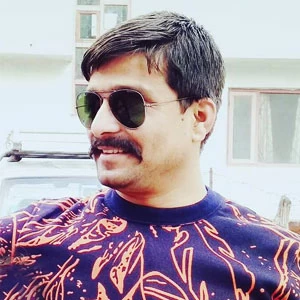
Kumar Lamsal
Kumar is one of the Co-founders and Managing directors of Discover Altitude holding 18 years of experience in the tourism sector of Nepal. He has trekked to almost all the popular regions of Nepal and is an authorized trekking and tour guide.
Started his career as a porter to support his study, now holds MPhil and LLB degree, and is doing his Ph.D. in religious studies. He loves traveling to the Himalayas and has deep knowledge about religion, culture, and history.
Kumar is also involved in the teaching sector as a part-timer to deliver his research related to the cultural and religious diversity of Nepal and is the one who mostly answers your queries giving them his personal touch through his decade-long experience.
Send us your feedback
Recent posts.
- Everest Base Camp Trek for Indian Citizens Cost and Itinerary
- Ghorepani Poonhill Trek Distance, Elevation and Weather
- Everest Base Camp Trek in February 2024-2025
- Everest Base Camp Trek Altitude With Oxygen Level | Know your minimum Oxygen Level during EBC Trek
- Hire a Trekking Guide and Porter in Nepal | Guide and Porter Cost 2024-2025
- Nepal Trekking Company and Tour Operator
Related Posts
- A Complete Visa Guide to Nepal and Fees
- Muktinath Darshan Tour Package
- Lukla Airport: A gate-way to Everest region in a fastest way
- When and where will Mount Everest Base Camp be shifted | Nepal to Relocate Everest Base Camp
- Best 10 Luxury Tours and Holiday Package in Nepal
- Festivals in Nepal
- News and Events
- Places to See
We use cookies to ensure that we give you the best experience on our website.
You are using an outdated browser. Please upgrade your browser to improve your experience.

Nar Phu Valley Trek
- Trekking in Nepal
- Annapurna Region
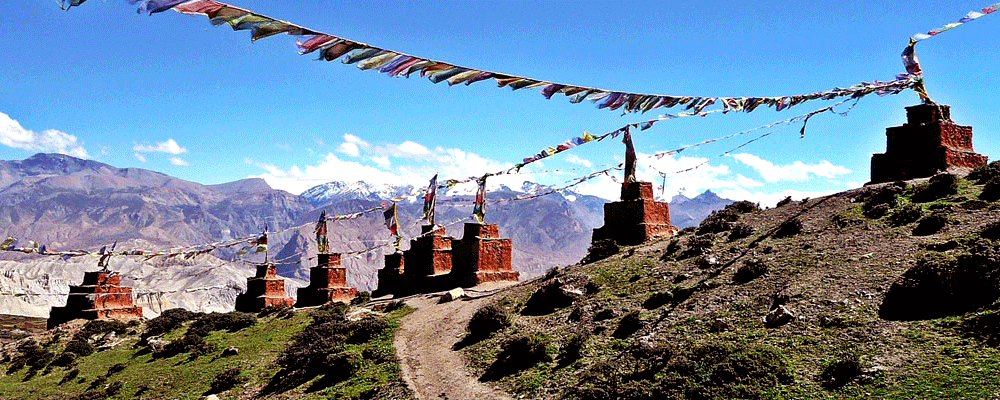
Since the terrain can be hard and the days long, hikers on these treks should be in good physical condition and have some previous mountain walking experience. Steep climbing may be involved, although it is never necessary to use ropes. Treks at this level can he arranged for periods of 16 to 21 days. Typically, a gradual ascent through a green river valley will lead you up to a number of high passes, where you will reach the altitude of 5416m. Often times, you will get a close insight into the Tibetan culture. Participants should expect to trek above 5416m/17872ft.
Group Price
Number of Travellers
- Detail itinerary
- Cost Includes/Excludes
- Fixed Departures
- Reviews (2)
Nar Phu Valley Trek 13-Day Itinerary Package
The Nar Phu Valley Trek is a hidden gem in the Annapurna region, providing adventurers with a unique and unforgettable experience in the remote corners of the Himalayas. This relatively new trekking route unveils breathtaking landscapes and takes you off the beaten path, allowing you to explore less-traveled areas that are teeming with natural beauty and cultural richness. Get ready for an extraordinary adventure that will leave you with memories to cherish for a lifetime.
Unveiling the Enchantment: Nar and Phu
Nestled on the Tibetan border , Nar and Phu are two ancient villages nestled amidst the breathtaking Annapurna Himalayas. The valley boasts lush forests and high-altitude grazing settlements, boasting an array of diverse flora and fauna. As one of Nepal’s most beautiful and untouched regions, it promises to captivate your senses.
A Journey of Contrasts
As you embark on this incredible Nar phu trek , you’ll witness the contrasting lifestyles of the Khampas – Tibetan refugees residing in Nar and Phu. These villages are not only geographically distinct but also boast unique cultural identities. Marvel at the grandeur of Chortens and observe herds of rare blue sheep, adding a touch of wilderness to your expedition.
Conquer the Heights
The Nar Phu Valley Trek offers an exciting and challenging journey for adventure seekers . Surrounded by dramatic peaks and snow-capped summits, this isolated region is a sanctuary of natural beauty. Your heart will race as you conquer the high alpine valleys above Phu, with the option to venture to the Himlung base camp for those seeking even greater thrills. Crossing the Kang La pass at 5300 meters will leave you with an indelible sense of accomplishment.
Rich Tibetan Culture
The Nar Phu Valley is a treasure trove of ancient Buddhist monasteries, some dating back over a thousand years. Immerse yourself in the spiritual and social activities centered around these revered monastic sites. Witness the locals donning traditional woolen chubas and intricate Topi hats, showcasing their distinct cultural identity. Throughout the year, vibrant festivals like the Mani Rimdu festival breathe life into the valley, offering a mesmerizing glimpse into their rich traditions.
Nar Phu trek distance
The Nar Phu Valley trek is a stunning and less-traveled route in the Annapurna region of Nepal. The distance of the trek can vary depending on the specific itinerary chosen and any side trips taken along the way. Typically, the Nar Phu Valley trek covers around 75-80 kilometers (around 47-50 miles) in total, taking about 10-12 days to complete. However, this can vary depending on factors such as starting point, hiking speed, and side excursions.
Nar Phu Valley Exploring Without a Guide?
Trekking the Nar Phu Valley route without a guide is prohibited due to the area’s restricted status in Nepal. Permits for accessing Nar Phu Valley are typically obtained through licensed guides from authorized trekking agencies. Attempting the trek independently is not allowed as it violates the regulations governing restricted regions. Guides play a crucial role in ensuring compliance with permit requirements, navigation assistance, and overall safety. Choosing to trek with a guide not only ensures adherence to regulations but also enhances the trekking experience through local insights and support.
Choose Your Path: Tailored for You
Whether you’re a seasoned trekker or a first-time adventurer our site has only 13 days, however, Nar phu trek itineraries cater to your preferences and time frame. Our experienced Sherpa guide team and porters are committed to promoting rural harmony in the remote villages along the northern shore of the Annapurna region. English and local language-speaking guides ensure that every step of your journey is enriched with cultural insights.
Experience the Nar Phu Valley Trek Difference
Experience the unique charm of the Nar Phu Valley trek with Nepal Wilderness Trekking Pvt. Ltd. As a local company, we pride ourselves on offering competitive rates while ensuring your utmost satisfaction. By choosing us, you not only embark on an unforgettable journey but also contribute directly to the local community, making a positive impact on their livelihoods. Discover the beauty of Nar Phu Valley with us and leave a lasting imprint on both your heart and the lives of the people you encounter along the way.
Nar Phu trek price
The price for the Nar Phu trek can vary depending on several factors such as the duration of the trek, the services included (such as guide, porter, accommodation, meals, transportation), and the trekking agency chosen. On average, trekkers can expect to budget anywhere from USD 1200 to USD 1500 per person for the Nar Phu trek, excluding international flights and personal expenses. Choosing a local trekking agency like Nepal Wilderness Trekking Pvt. Ltd. can often provide competitive rates without compromising on quality.
Best Time to Plan Your Adventure
The Nar Phu Valley Trek is open year-round. While the peak tourist seasons of March to May and September to November are ideal for most trekkers, adventurous souls can also explore the valley during the monsoon season (June to August). Experience the charm of this untouched landscape, though access to Besisahar may be affected by mud and landslides during the monsoon.
A Journey of Challenges and Rewards
The Nar Phu Valley Trek is a journey of challenges and rewards, allowing you to discover hidden valleys, meet hospitable locals, and witness awe-inspiring landscapes. This is an experience that will leave an indelible mark on your heart and soul.
Contact Us: Start Your Nar Phu Trip Adventure Today
Contact us to arrange your Nar Phu Valley Trek at a competitive package rate. Our Nepal Wilderness trekking team is available to address any questions and help tailor a personalized itinerary for you. Allow us to assist you in experiencing a once-in-a-lifetime adventure trek in the stunning Annapurna region.
Permits costs
- To access the Nar Phu Valley, you will need Nar Phu Valley Restricted Area (NRA) Permits, priced at U$D100 per week per person. These permits are specifically required due to the restricted nature of the area.
- In addition to the NRA permits, you will also need Annapurna Conservation Area Project (ACAP) permits, which cost U$D30 per person. These permits contribute to the conservation efforts in the Annapurna region, ensuring the preservation of its natural resources.
- Trekking Information Management System (TIMS) Permits are also mandatory for the trek and are priced at U$D20 per person. These permits help in managing trekking activities and ensuring the safety of trekkers.
Please note that single trekkers cannot obtain permits for the Nar Phu Valley Trek due to the Restricted Area regulations. It’s important to be aware of this restriction and plan accordingly.

Detail Itinerary
- Day 01: Begin the journey with a local bus from Kathmandu to Besishahar, followed by a shared jeep from Besisahar to Chamje (1310 meters, 9 hours of driving).
- Day 02: Embark on a trek from Chamje to Dharapani (1920 meters, 6 hours of walking).
- Day 03: Continue the trek from Dharapani to Koto (2600 meters, 5 hours of walking).
- Day 04: Trek from Koto to Meta (3570 meters, 7-8 hours of walking).
- Day 05: Trek from Meta to Upper Chyaku (3720 meters, 3-4 hours of walking).
- Day 06: Progress from Upper Chyaku to Phu Village (4050 meters, 4-5 hours of walking).
- Day 07: Trek from Phu Village to Nar Phedi (3500 meters, 6-7 hours of walking).
- Day 08: Continue the journey from Nar Phedi to Nar Village (4120 meters, 3-4 hours of walking).
- Day 09: Explore the monasteries in Nar Village.
- Day 10: Trek from Nar to Kang La Pass (5320 meters) and then to Ngawal (3675 meters, 8-9 hours).
- Day 11: Trek from Ngawal to Chame (2650 meters, 6 hours of walking).
- Day 12: Conclude the trek and return to Besi Sahar by jeep, overnight stay at Besi Sahar.
- Day 13: Head back to Kathmandu from Besishahar by local bus, approximately 6 hours of travel.
Cost Included
- Nar and Phu Restricted Area (NRA) Permits.
- Annapurna Conservation Area Permit.
- Trekker's Information Management System (TIMS) Card.
- One English-speaking experienced guide and required porters (1 porter for every 2 pax; note that if a single pax, then additional cost for the porter).
- Local bus from Kathmandu to Besi Sahar and sharing jeep from Besi Sahar to Chamje.
- Sharing jeep from Chame to Besi Sahar and public bus from Besi Sahar to Kathmandu.
- All meals (breakfast, lunch, and dinner).
- Seasonal fresh fruits are provided after dinner.
- Lodge accommodation during the trek.
- Staff, equipment, meals, salary, insurance, etc.
- First aid kit.
- Kitbag for storing your belongings.
- Sleeping bag for a comfortable night's sleep during the trek in temperatures as low as minus 25 degrees.
- Necessary paperwork, including all government and local taxes.
- A certificate of appreciation from Nepal Wilderness Trekking upon the successful completion of the trek.
Cost Excluded
- Airfare for international flights.
- Upon arrival at Tribhuvan International Airport, Nepal, entry visa fees vary by duration (15 days - $25-30, 30 days - $40, 90 days - $100).
- Accommodations and meals in Kathmandu and Pokhara before and after our journey.
- Personal equipment is suitable for high and cold temperatures.
- Emergency high-altitude rescue and evacuation are covered by travel insurance.
- Exclusion of all beverages, soft and caffeinated drinks such as coke, beer, drinking water/mineral water, dessert, etc. Also, hot shower and laundry expenses.
- Tips for the guide and porter.
- Excluded are all costs and expenses not listed under "cost includes."
- Inclusion of costs or delays beyond the control of the management, such as landslides, weather conditions, itinerary modifications due to safety concerns, illness, changes in government policies, strikes, etc.

Nar & Phu Trekking
Thank you so much for organizing our trip Nar And Phu Valley, we had the perfect time with our guide Bir Gurung, and I will recommend Nepal Wilderness trekking and guide Bir Gurung.
see you Himal next time

Gyalen Ebol
Nar Phu Trek is lovely Trekking,
Our Guide Lal Gurung and Porter Dev Raj lead us Nar Phu Trek, it was beautiful, fantastic hidden valley trek of Annapurna area, we have been almost every trekking region in Nepal, but we love so much Nar Phu Trek less crowded, it is similar to Tibet and people are amiable.
Nar Village is beautiful, and Phu is also lovely and historical Buddhism monastery and typical old Gompa, we enjoy so much doing this trekking, Nepal Wilderness Trekking agency is well organize trekking agency and fast response, we already finalized for our next trip with Nepal Wilderness Trekking, Mr. Himal Ghale.
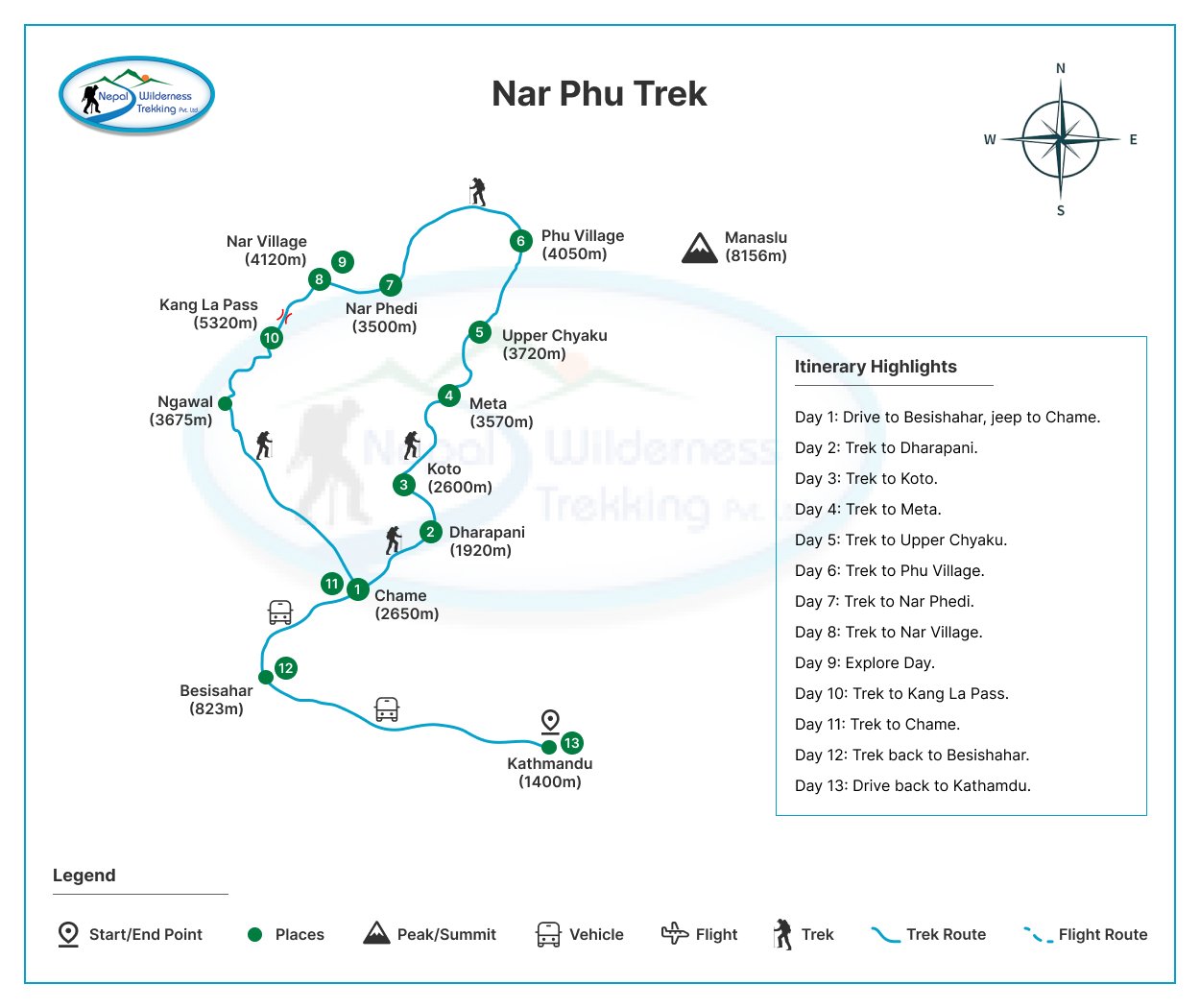
Frequently Asked Questions
How difficulty is nar phu valley trek, how many hours walk per day, what is the accommodation type, what is the network service in this trekking area, what happen if there is an emergency, when is the best time to do the trek, which permit we need, is this trek a restricted area, what i can especially explore on this trek, what time we have to prepare to leave hotel on the kangla pass day, altitude chart, similar packages, mesokanto la pass, annapurna circuit and base camp trek, khumai danda trek, poon hill trek 2 days, classic mardi himal – poon hill trek, mardi himal vs annapurna base camp, we are recommended on.
Nepal Wilderness Trekking Pvt. Ltd.
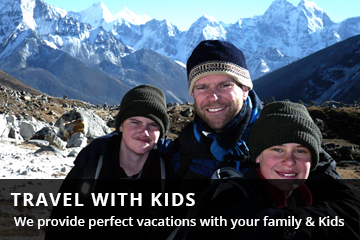
Nepal Traveller's Information
- Nepal Information
- Nepal Visa Information
- Entry Procedure to nepal
- Altitude Mountain Sickness

Trip Advisor Awards

Email Support

24/7 Phone Support
Nar phu valley trek permit.

How much is the cost of the Nar Phu Valley Trek permit? table.tableizer-table { font-size: 18px; border: 2px solid #CCC; font-family: Avenir LT Std; } .tableizer-table td { padding: 4px; margin: 3px; border: 2px solid #CCC; } .tableizer-table th { background-color: #104E8B; color: #FFF; font-weight: bold; }
Note: Only Nar Phu Valley requires two permits, ACAP, and restricted area permit. Unless you want to continue Annapurna Circuit Trek after then you should bring ACAP, and TIMS card As well.
Nar Phu Trekking permit cost for the child under 10 years old
My previous customers frequently asked me this question. If you are trekking in Nepal with a child under 10 years old and wondering how much would be the trekking permit cost ? The Trekking permit fee, including restricted area permit, ACAP, and TIMS, are free! However, you still need to go through all the permit application process and submit a necessary document of the child and get the child permit, but the cost is free.
Do I need a TIMS card for Nar Phu Trek?
TIMS card (Trekking Information Management System) is not necessary for a Nar Phu. As long as you hold a special trekking permit, TIMS card isn’t required in any restricted trekking region in Nepal. But it is always advisable to check in advance with your local company (Contact Us). For example, if you have a connecting trip after Nar Phu, such as Annapurna Circuit, or Annapurna Base Camp Trek, then the TIMS card is compulsory.
Most of my customers like to continue to Annapurna Circuit Trek after Nar Phu Valley Trek . Especially after Nar Phu, if you still want to keep your journey to Annapurna Circuit and would like to trek further Jomsom Muktinath and end up at Pokhara, then you must be required to have TIMS card. But the good news is you don’t have to repurchase an ACAP permit. The same permit you bought for Nar Phu will remain valid for Annapurna Circuit too.
Where can I get the permit for Nar Phu?
All restricted trekking permits, including Nar Phu trek permit, will be issued in the trekking department of the Nepal immigration office in Maitighar, Kathmandu. For your information, Nepal Tourism Board and TAAN don’t issue restricted trekking permits. Still, other trekking permits such as ACAP, MCAP, TIMS, and Everest base camp permits are issued in Nepal Tourism Board.
Can I apply to permit myself?
This is a fundamental question that every traveler should know. Please note that individual trekkers are not allowed in Nar Phu. As long as you are with anyone authorized person or local agency permit issue process can be done. You must meet the following requirements by the Nepal government to file your permit:
- You must hire at least one authorized person from the local trekking agency in Nepal, either a professional guide or license holder porter/guide.
- You must be at least two people in one group (not including the guide or porter).
- You must file your special permit through an authorized local trekking agency.
- Ghost permit It allows for a single hiker, but you must check with a local agency if they are capable of doing this.
What document required for the permit?
If you can meet the government requirements as discussed above, you should also provide these documents to your local trekking company to apply for your permit.
- Original passport with your Nepal entry visa with the arrival stamp.
- 3 passport size photos (if you have one online passport photo, you will only need 2 printed ID photo)
- Travel Insurance that covers emergency evacuation up to 6,000m.
- Of course, money
Can I request to get the permit in advance?
It entirely depends on the local trekking company you choose and whether they are capable deal with the immigration staff or not. You should check in advance with your company ( contact us) if this is possible. But in our company’s experience, we have done multiple permits in advance without an original passport. However, USD 10 per person will be added to expedite the permit. The documents we require are:
- Clear scanned copy of passport
- A copy of your return flight ticket that clearly shows your arrival and departure date.
- Copy of the passport
Understandably, this might be required due to the traveler’s required time frame. Other reasons could also be that the immigration office opening time and public holidays could affect your application. Note that the immigration office only opens from Sunday to Friday between 9 am to 5 pm. It is also closed during public holidays and Saturdays, so it’s always a good idea to check in advance if you are arriving during holiday time.
If everything is on track and all requirements are complete, the Nar Phu Trek special permit should be ready within a 2 to 3-hour timeframe. As one of the virgin trekking trails of Nepal, Nar Phu becoming more popular each season. Compeer to other treks like Everest, Annapurna, the cost of Nar Phu trek is only expensive to buy a permit, but the food and accommodations are the same as other trekking trails in Nepal. If you need to know anything apart from what we mentioned above, please do not hesitate to contact us. We are happy to give you additional information.
If you enjoyed reading this article share it with your friends and family! This might be the missing exclusive information they were looking for! We would also appreciate it if you could give us a rating below. You can also comment us below.

Rajendra Khanal (Raj)
Born and raised in Gorkha, Nepal, I am proud to call the Manaslu region my home! I have been in the travel business for over a decade from being assistance guide, leader, to being a manager. And finally today I am the founder of NEST Adventure. So you could say I know my way well enough in the Himalayas, especially in some of the off-the-beaten-trails in Nepal like Manaslu, Kanchenjunga and Mustang !
I am passionate about travelling and I strongly believe that seeing the world shouldn't break the bank (at least not too much!). I have backpacked to over 15 countries in Asia, Central America, USA, Canada, one-third of Europe, the Caribbean Islands, and Latin America.
I studied in the UK and moved to the United States. During that period, I had the opportunity of working with multinational companies which taught me how to deliver quality customer service in the business. As a world travelling backpacker myself , and travel expert for the Nepalese Himalayas, I started writing about my own country. Which I would love to share with you. In case you required free information about Nepal or join a group with our existing departure, ( particularly If you are a solo hiker for the restricted area ) please do not hesitate to visit my office in Thamel. We are located in the centre of Kathmandu called Thamel. I am happy to share a cup of Nepali tea and free information .
Our team at NEST has earned 5/5 star ratings on TripAdvisor. Don't forget to visit our customer feedback page on TripAdvisor . If you believe our expert team can be helpful in planning your next trip to Nepal, then please do not hesitate to contact me at [email protected] . I am also available 24x7 on WhatsApp +977- 9851052042 . If you are interested to know more about my travel journey follow me on Facebook , Twitter , and Instagram .
Recommended Articles
Nar phu valley trek highlights.

Nar Phu Valley Trek Solo

How do I get from Kathmandu to Annapurna Base Camp

Leave a Reply Cancel reply
Your email address will not be published. Required fields are marked *
Save my name, email, and website in this browser for the next time I comment.

NEPAL TREKKING AND TRAVEL BLOG
Remamber Us For Annapurna and Everest Base Camp trek Itinerary,Package and Price In Nepal

Nar Phu: How To Get Permits to Trek to this Hidden Valley
Last Updated on August 29, 2022 by Treks Planner Nepal
Nar Phu: How to Get Permits to Trek to this Hidden Valley. A special permit is required to enter the mystical Nar Phu Valley, which is located in the northern part of the area. Only in 2002 was this untouched valley accessible for trekking. Since then, it has been a restricted area that can only be entered with a special permit. Two Nar Phu Valley Trek permissions are required for prospective hikers: the Nar Phu Valley Restricted Area Permit (RAP) and the Annapurna Conservation Area Project Permit (ACAP).
The designated offices in Kathmandu or Besisahar are where the trekker can apply for and get the ACAP. The Restricted Area Permit (RAP) can only be applied for and obtained on behalf of the trekker by a legitimate Nepali trekking agency.
Travelers might wander to the villages of Nar and Phu to experience the authentic Himalayan wildness. Experiencing historical Tibetan culture, prehistoric trade routes, harsh canyons, rock formations, and one of the high passes are the highlights of this hidden valley.

Table of Contents
Nar Phu Valley Trekking Permits and Fees:
The government of Nepal has classified the Nar Phu Valley as a restricted area because it is so close to the Tibetan border. Its restricted stance aids in border security, tourism management, and the preservation of historic culture and heritage.
Because of this, all trekkers must have a Restricted Area Permit to enter this area. The appropriate Restricted Area Permit you obtained covers Narpa Rural Municipality and Nasho Rural Municipality because Nar Phu is located in the Manag area.
It costs US$100 for the first 7 days from September to November (autumn) and then US$15 for each subsequent day spent in the restricted area. Winter, spring, and summer months from December to August: US$ 75 for the first 7 days, plus US$ 15 for each extra day spent in the restricted area.
Annapurna Conservation Area Project (ACAP) Cost
Due to the Nar Phu valley trek’s route through the Annapurna conservation area, which stretches above Manang , an Annapurna Conservation Area Project (ACAP) permit is required. The fee is necessary to build trails and save the local animals and flora in the Annapurna region.
The cost for SAARC nationals is Rs. 1000 ($10 approximately) per person. Other nationals must pay a fee of NRs. 3000 ($30 approximately).
Required paperwork for a trekking permit in Nar Phu Valley
When applying for the Nar Phu Valley trekking permit, you must present the following documents:
- 1 or 2 passport-size pictures (for ACAP permit).
- One scanned image should be submitted with the Nar Phu Valley RAP online form.
- passport photocopies (with at least six months validity)
- Travel insurance documents (includes helicopter evacuation of up to 6000 m)
- Tourist visa for Nepal
- Information on the Nar Phu Valley trek route
Where can I get a permit to trek through the Nar Phu Valley?
The information on where to get permits for trekking in the Nar Phu Valley is listed below: Permits for the Annapurna Conservation Area: Trekkers can obtain this permit in Kathmandu, Pokhara, or Besisahar. Your best possibilities are Kathmandu and Besishar, which you will be passing by.
In Kathmandu, the Nepal Tourism Board is open from 9 a.m. to 5 p.m. on Saturdays and Sundays, excluding public holidays.
Besisahar, Lamjung: The ACAP Entry Permit counter is located at Besisahar and is open every Saturday and Sunday from 10 am to 5 pm, excluding major holidays.
Pokhara: The Nepal Tourism Board’s Lakeside location is open from 10 a.m. to 5 p.m. on Saturday and Sunday, excluding public holidays.
Trekkers can obtain this permit on their own or through an agency in Nepal. However, Trekkers cannot obtain the Nar Phu Valley Restricted Area Permit, hence a legitimate Nepali trekking service should apply for and get the permit on their behalf. The organization will receive all the necessary information and documentation from trekkers and then process an online permit application. The Trekking Department of Nepal Immigration office, located in Kalikasthan, Kathmandu, is where they will pick up the approved permit. Please be aware that neither the Nepal Tourism Board nor TAAN publishes it.
Contact Us for More Details:
Share this:.
- Why Trek With Us
- Legal Documents
- Terms & Condition

Viber/Whats App
Enjoy your trip, nar phu trek with annapurna circuit.
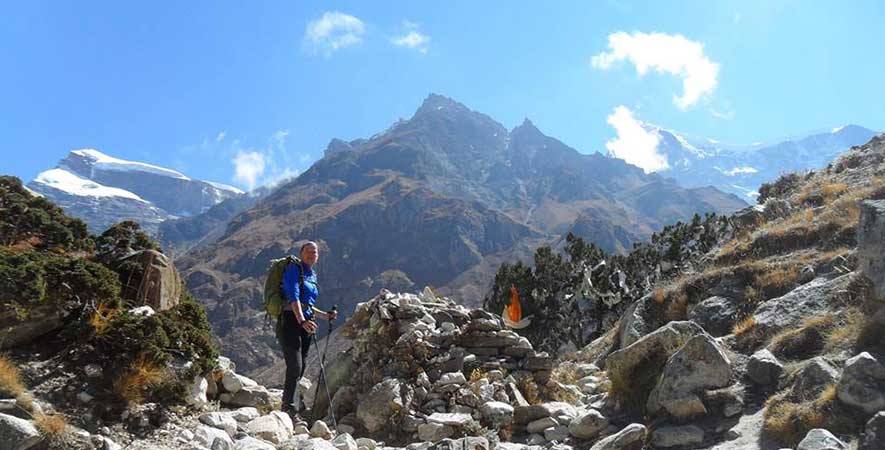
$1499 per Pax
Nar Phu Valley Trek is one of the important restricted areas of Nepal located in the Manang district which is rich in natural and cultural beauty. This valley is wild and unexplored, located north of Annapurna Mountain, and opened for trekkers around the world in 2003. Nar Phu valley is inhabited by Tibetan Buddhist ethnic people so it offers rich Medieval Tibetan culture and festivals. Besides its cultural importance, Narphu valley is also famous for its stunning glimpse of the beautiful mountains such as Annapurna, Dhaulagiri, Manaslu, Tilicho peak, and Lamjung Himal. Nar Phu valley trek is also one of the adventurous treks in Nepal because to reach Narphu valley trekkers need to cross three challenging passes Mesokunda La, Kang La, and Tilicho trekkers who love adventurous treks Nar Phu valley trek are suitable for them.
This trek is important from a natural, cultural, and religious perspective. Nar Phu valley is a naturally decorated hidden valley, its natural gadgets attract all the trekkers. Culturally this valley is rich because Tibetan Buddhist people preserved their ancient culture. This valley remains out of modern contact and many unique things related to their culture are still unexplored so trekkers who are interested in Tibetan Buddhist culture can know and experience their culture. The lifestyle of Tibetan Buddhist people is another attraction of this trek. They followed the traditional lifestyle with their system, rituals, and customs which is different from the lifestyle of modern people. On and on the way to Narphu valley trekkers can see and visit several sacred Monasteries and Gompas which will give them eternal peace.
Nar Phu valley trek starts from Besisahar after a 6/7 hrs bus drive from Kathmandu and follows the Annapurna circuit up to Koto. From Koto trek reach Nar Phu through Chacha, Meta, and Junum. After visiting the hidden Nar Phu valley, trek back to Koto through Nar village and Dharamshala. From Koto trek rejoin the Annapurna circuit and reach Jomsom via Thorung Phedi and Muktinath . Nar Phu Valley is listed in restricted trekking areas of Nepal so a special trekking permit should require before trekking this region. As a government-registered trekking agency, we will manage trek permits for Nar Phu Valley Trek.
- Real Himalayan wilderness, exotic and sparsely populated valleys of Nar and Phu
- Mysterious valleys with alpine forests, rugged landscapes, deep and Narrow River gorges, diverse flora and fauna
- Fascinating medieval Tibetan culture and customs, unique and colorful prayer stones, and monasteries
- Venture into a remote and ancient village in its original form
- Tibetan influenced architecture in the Gompas and monasteries
- Witness surreal large panorama peaks of Annapurna II, Himlung Himal, Gangapurna, and Tilicho Peak right in front of Kang La Pass.
- Hike to Muktinath, Camp in Buddhist monasteries
Short Itinerary
Day 01: Arrival Kathmandu and transfer to hotel Day 02: Permit procedure for Nar Phu, Sightseeing around Kathmandu Day 03: Take a drive to Besisahar by private car and take a local jeep to Dharapani Day 04: Dharapani to Koto (2600m) Day 05: Koto to Meta (3560m) Day 06: Meta to Kyang, (3820m), Overnight on tented camp Day 07: Kyang to Phu (4010m) Day 08: Exploration day Day 09: Phu to Nar Phedi Day 10: Nar Phedi to Nar (4110m) Day 11: Nar to Kang La Phedi (4530m), Overnight on tented camp Day 12: Kang La Phedi to Nawal via crossing Kang La, 5306m (Approx 9 hours) Day 13: Nawal to Manang (3540m) Day 14: Rest day Day 15: Manang to Yak Kharka (4050m) Day 16: Yak Kharka to Thorong High Camp (4925m) Day 17: High Camp to Muktinath (3760m) via Thorong La Pass (5416m) Day 18: Muktinath to Jomsom (2720m) Day 19: Take a flight to Pokhara Day 20: Pokhara to Kathmandu by tourist bus or flight
- All land transportation as required for trip and airport pick up-drop.
- Hotel in Kathmandu and Pokhara as indicated program
- Flight to Pokhara from Jomsom
- Accommodation and food during the trek.
- Nar Phu Valley entry permit,trekking permit and national park permit.
- Related language speaking guide and necessary porters.
- Emergency evacuation service if in case...
- farewell dinner after trip.
- Food in Kathmandu and Pokhara
- Bar bills and beverage
- Personal trekking gears
- Rescue charge in case needed
Detail Itinerary
Day 01: arrival kathmandu and transfer to hotel.
Upon your arrival at the Tribhuvan International Airport (TIA) in Kathmandu and completion of the customs formality, you shall be received by our representative. S/he will be taking you to your respective hotel for the stay. Enjoy authentic Nepali cuisine in the hotel and give rest to your jet-lagged body. Overnight in Kathmandu.
Day 02: Permit procedure for Nar Phu, Sightseeing around Kathmandu
Today we shall be having guided sightseeing to many historically and culturally important sites which are also listed on the UNESCO World Heritage Site. We visit the holy Hindu Temple of Pashupatinath, the ancient Monkey Temple (Swayambhunath), and another Buddhist shrine of Boudhanath, one of the largest stupas in the world along with other possible sites. We shall get the procedure completed for obtaining the special permit required for our trek. Also, we shall do the equipment checking, get introduced to other participants, and discuss our trekking adventure. Pack your bags and get ready for the adventure that begins the next day. Overnight in Kathmandu.
Day 03: Take a drive to Besisahar by private car and take a local jeep to Dharapani
Our journey to the once-forbidden valley begins. We depart in the morning after breakfast in a scenic drive to the hilly town of Besisahar in a private car. On our drive along the Prithvi Highway, we shall get opportunities to observe the lifestyle of rural areas. From Besisahar we shall take on a local jeep to our destination of Dharapani, one of the large villages in the Manang valley. We shall also observe the rice and potato fields, alpine forests, waterfalls and cliffs, and some suspension bridges along the way to Dharapani. Overnight in Dharapani.
Day 04: Dharapani to Koto (2600m)
We start our trek in the morning through the pine and fir forests and hilly landscapes. Bit of a difficult trek for today. For our amusement shall be the whitewashed monastery, the awesome Himalayas of Annapurna II, Manasalu, Lamjung Himal, and Himalchuli guarding the region since time unknown, unique lifestyles in the villages of Timang, Danaque, and Latamarang. The uphill climb and descent shall be of around 5-6 hours for the day. After the effortful journey, we shall arrive at Koto. Overnight in Koto.
Day 05: Koto to Meta (3560m)
The alpine vegetation, pine, and rhododendron forests shall accompany us today as well. We shall traverse along the Naar river on our way to Meta. From Koto we leave the trails of classic Annapurna Circuit. Through several suspension and wooden bridges, waterfalls, forests and steep ascends we reach the Meta village, past the village of Dharmashala, through the trail carved into the narrow and steep-sided walls of the Naar river. The slowly changing landscape and view of Annapurna and Lamjung Himal shall keep us energized on the trek. Overnight in Meta.
Day 06: Meta to Kyang, (3820m), Overnight on tented camp
Today we set ourselves to the Phu valley of the region in a relatively short trekking day. Along the Phu River flowing down the Phu valley, our trek shall continue past the big chorten near the Naar Phedi, through the forests up the Mahendra Pul, crossing the Mruju Khola as we approach the high plateau of Kyang for the tented camp. Kyang has the remains of the Khampa settlements, where once the Khampa refugees from Tibet settled. Overnight in Kyang on tented camp.
Day 07: Kyang to Phu (4010m)
We ascend further into the Phu valley today and aim to reach the Phu village. The rocky trail ahead of the Kyang makes us put more strength yet not pace up much. The magical village of Phu is reached as we experience the Tibetan Buddhist culture in the prayer flags, chorten, and Mani walls all along the trekking trail. Phu valley welcomes us as we make the final ascent to the Phu gate, the entrance to this medieval village. Overnight in Phu.
Day 08: Exploration day
Today we shall witness the magic of Phu valley unfolding before us as we explore this ancient village. This also allows for the proper acclimatization for us before we do further trekking. Beautiful and barren landscape, Tibetan influenced architecture in the Gompas and monasteries, natural diversity and the lifestyle of the locals shall keep us engaged all day long. This hidden valley shall display the religious practices of the local Lama, Gurung, and Ghale community, the Tashi Lakhang Monastery (supposedly the last monastery built by Karmapa Rinpoche) along with the marvelous view of the Himlung peak and its sibling peaks in the region. Overnight in Phu.
Day 09: Phu to Nar Phedi
Retracing our footsteps we exit out of the Phu village and move down to the small settlement of the Nar Phedi. We move past the Mahendra Pul, named after the small bridge built by the shah king, King Mahendra. The trail branches off at the Nar Phedi. Overnight in Nar Phedi.
Day 10: Nar Phedi to Nar (4110m)
Another relatively short day on our trekking schedule is to take place today. We go through a steep path to Nar with caution. This effort shall be rewarded by nature with the snow capped Kang Garu peak standing tall and proud overlooking the trail. Following the Mani walls, gompas, and a mud walled hut we march ahead to be greeted by the entrance gate of the Nar valley. Slightly bigger than Phu, Nar provides an incredible view of Pisang peak and Kang Garu, the barley cultivation and unique local culture. Overnight in Nar.
Day 11: Nar to Kang La Phedi (4530m), Overnight on tented camp
Today we shall trek for fewer hours to help in the process of acclimatization. We shall be welcomed by the second gate of the Nar valley as we trail across the west highlands of Pisang peak standing to our left. Upon reaching the Kang La Phedi, we shall explore the surrounding area, relax and view the scenic landscape as we prepare for an adventurous day tomorrow. We shall camp here as there aren’t any permanent lodges here. Overnight in Kang La Phedi on a tented camp.
Day 12: Kang La Phedi to Nawal via crossing Kang La, 5306m (Approx 9 hours)
Today, a long, beautiful, and adventurous day waits for us. A real highlight of the trip, we climb over the Kang La pass (5306m), the highest point of our trek. Stunning views of Annapurna massif, Gangapurna, Tilicho Peak, and beyond are seen from this pass. A straightforward but steep descent is encountered down the pass as a part of the path consists of moraine and some part has grassy terrain as we move towards Nawal. Caution is to be maintained as the descent can be strenuous to the knees. Overnight in Nawal.
Day 13: Nawal to Manang (3540m)
From Nawal, it's time we trek to Manang. With the relatively easy and short trail down the bank of the Marshyangdi River, the pace of the trek can be done more gradually by the trekkers. The view of Annapurna and Tilicho peak all day, the uniquely beautiful villages with Gurung settlement, and beautiful pine forest shall add beauty to the trail. Manang has some beautiful monasteries and more comfortable tea-houses as compared to the stay on previous days, in more remote regions. Overnight in Manang.
Day 14: Rest day
This is the second scheduled rest day of the trekking adventure for acclimatization and also to give some break from the continuously strenuous trekking for the past couple of days. We shall explore this rain shadow area with rich natural flora and fauna that gives the feel of being in heaven to many trekkers visiting this area. Overnight in Manang.
Day 15: Manang to Yak Kharka (4050m)
We ascend the beautiful Manang towards the village of Yak Kharka, the name after the summer pastures for yak. Crossing the rivulet we continue to traverse away from the Marshyangdi valley northward where we shall pass the village of Tengi, the oldest village in Manang. The pastures, juniper trees, and beautiful landscape tea houses are seen along our trek in the Jarsang Khoa valley. The trail has in display the ancient Mani wall in a pleasant meadow, the wooden bridge along the way are new experiences for the trekkers. Overnight in Yak Kharka.
Day 16: Yak Kharka to Thorong High Camp (4925m)
Today’s trek has some ascend and descend in higher altitudes. After a couple of hours’ climb, we descend to cross a stream and again have an uphill climb towards the Thorong High Camp. We pass through Thorong Phedi, a small village that has been busy serving the trekkers and climbers, many of whom use this as the base camp before their ascend to the Thorong La pass. In between, we have encountered some steep ascend as well. Overnight at Thorong High Camp.
Day 17: High Camp to Muktinath (3760m) via Thorong La Pass (5416m)
We have some seriously beautiful but demanding days where we cross the difficult yet exciting Thorong La pass. An early morning start to this section of the trek shall help us complete our trek more comfortably. The strenuous climb and ascent to the pass through the bumpy and rocky path is worth the breathtaking vista we witness from the summit. We then descend on the other side of the pass to Muktinath, a pilgrimage that hosts both the Hindu temple and a monastery nearby. Overnight in Muktinath.
Day 18: Muktinath to Jomsom (2720m)
This marks the beginning of the later part of our adventure. We leave Muktinath, the place believed to give salvation to the pilgrims who visit this holy place, for the picturesque Jomsom. Past the villages of Jharkot and Khingar with Tibetan influence and mostly along the banks of the Kali Gandaki river, we reach the arid yet beautiful Jomsom. Jomsom valley is known for a strong windy afternoon, but beautiful wet hills and the view of Tilicho Mountain adds beauty to the picturesque valley.
Day 19: Take a flight to Pokhara
The demanding yet worthwhile adventure trek comes to an end. We take a flight to the scenic city of Pokhara in normal conditions. However, if there is no flight due to bad weather or other reasons we take a local bus to Pokhara that is no less comfortable for you. For the rest of the day, trekkers can have sightseeing around the Lake City of Nepal to Fewa Lake, Davis Falls, Gupteshwor Cave, the Mountaineering Museum, and others. Overnight in Pokhara.
Day 20: Pokhara to Kathmandu by tourist bus or flight
Marking the end of this memorable trip we shall move back to Kathmandu by tourist bus or flight as per the weather condition in Pokhara. Trekkers may trade mails and organize their photographs before packing up bags for the final departure to their respective destinations. End of a fantastic journey!
Travel Info
Accommodation and Duration
Accommodations in the Nar Phu Valley Treks are mostly guesthouses. The guesthouses are comfortable with basic facilities. The trek duration is of 20 days. Thus, most nights are spent in the guesthouses. A stay at the tent once in the Kang La Phedi before ascending Kang La Pass (5,306m). The extra charge for the use of facilities like hot water buckets, laundry, charging, internet, and electricity in the guesthouses.
Breakfast, Lunch, and Dinner are provided during the trekking from the guesthouses. The meals are basic and suitable for the health of the trekkers. The main dish is Nepali Dal Bhat which provides enough energy throughout 7/8 hours of the trek. The variety of meals is hard to find but meals prepared from home-grown crops are a treat during this trek.
Drinking water
Drinking water is easily available at the guesthouses. You can buy a mineral water bottle but you should do proper disposal of plastic bottles. You can also fill boiled water at guesthouses paying extra charges. Carry a water bottle and water purification medicine with you. During trekking, drink direct freshwater from the flowing stream using water purification treatment.
Communication
The internet facility is easily available in the vicinity of the Annapurna region. The internet is stable from Besisahar to Manang valley. A little instability or no availability at high altitudes. By paying extra charges at guesthouses, internet facility, electricity for charging can be used. The phone signal is also good but may not work at high altitudes. Using a local sim card, an internet facility can also be used.
Starting and Ending points
The starting point of the Nar Phu Valley Trek is from Besisahar and ends in Jomsom. From Jomsom, take a flight to Pokhara and return Kathmandu.
The required permits are Nar Phu restricted area permit (RAP) and Annapurna Conservation Area Permit (ACAP). Their costs are:
Nar-Phu RAP Fee
USD 100/week per person + USD 15/person per day (beyond a week) [Sep-Nov]
USD 75/week per person + USD 10/person per day (beyond a week) [Dec-Aug]
Annapurna Conservation Area Permit (ACAP)
Foreigners- NPR 3000/person
SAARC- NPR 1000/person
Travel Insurance
Travel Insurance is very helpful and a safety net for travelers/trekkers. Travel Insurance must cover all medical emergencies, flight cancelations, emergency evacuations, loss of luggage, and altitudes over 3000 m.
Nar Phu Trek Difficulty
Nar Phu Valley Trek’s difficulty is moderately challenging. The trek includes a trail having many steep ascends, descends, rough trails, and icy and slippery during winter and rainy seasons. Trekkers need to traverse two passes Kang La (5,306m) and Thorong La Pass (5,416m).The trekker with average physical fitness and good health condition can complete the trek. Proper preparation and guidance before starting the trek are fruitful.
Best time to trek Nar Phu
Spring and Autumn seasons are the best time to trek Nar Phu Valley. The weather is clear and sunny during these seasons. The trail is also comfortable to walk. Rainy and Winter season treks are riskier due to muddy, icy, and slippery trails. It is only for experienced trekkers with full preparation before the trek.
Luggage limitation for Porter
One porter carries the luggage of two trekkers. The luggage limitation per person is a maximum of 15 kg.
Acclimatization and Altitude Sickness
Acclimatization day is necessary during trekking. Phu Valley and Manang valley are our acclimatization rest days. It helps prevent altitude sickness and adapt to the environment.
Symptoms of Altitude Sickness
Primary : Headache, nausea, gasping, appetite & sleep loss, dizziness, fatigue, vomiting
Extreme : primary symptoms and hallucinations & unconsciousness
Preventive Guidelines
- Immediately inform the guide
- Warm-up, and body stretch before the trekking journey
- Drink water and Hydrate yourself at regular intervals
- Frequent urination throughout the journey
- Ascend slowly and gradually
- Take plenty of rest and sleep
- Avoid salty foods, alcohol, and smoking
- Descend immediately when it’s difficult/uneasy
- Take medicine consulting a guide
Shoes: Pair of hiking boots, Rubber sandals Clothes: Windcheater jacket, Thermals, Down Jacket, Fleece, Long sleeve shirts, Gloves, Towels, Inner garments, Trekking pants, Trousers, Shorts, Socks Accessories: Sunglasses, Hats/Caps, Sunscreen, Lip Balm, Water bottles, Pocket Knife, Water Purifying solution Equipment: Warm Sleeping bags, Map, Trekking poles, Duffel bag Medicine: First-Aid Kit, Altitude sickness medicines Rainy season: Waterproof clothes, boots, Raincoat, Anti-leech socks Winter Season: Woolen clothing items (light)
It is best to bring the clothes and essential equipment from your home from the provided checklist. Also, you can buy or rent equipment and clothes in Kathmandu.
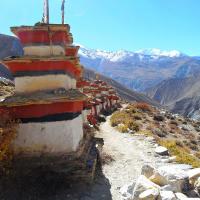
Leave a Reply Cancel reply
Your email address will not be published. Required fields are marked *

Recent Post
- Du lịch Nepal
- คุณกำลังมองหาบริษัทนำเที่ยวเนปาลอยู่ใช่ไหม?
- Porter & Guide or Porterguide
- (Imja Tse)Guide d'escalade du pic de l'île
- Porter & Guide for Annapurna Circuit Trek
- Porter and Guide for Gokyo Trek
- Nepal'de Kapıcı ve Rehber Kiralama
- Porter Guide in Lukla How to hire for Everest Trekking?
- Quanto costa Trekking in Nepal?
- Airport Pick up & Drop Cost in Kathmandu
- Local Travel & Treks agency in Kathmandu Nepal
- Porter & Guide at Thamel Kathmandu
- Porter & Guide from Dhap or Dhapre
- Nepal'de Rehber Maliyeti veya Trekking Rehberi Maliyeti
- (Imja Tse) Guida all'arrampicata Island Peak
- Guide d'escalade pour l'Island Peak
- Trekking al campo base dell'Everest (EBC)
- Trek au camp de base de l'Everest
- Guide d'ascension du Mera Peak
- Guide de trek du Kanchenjunga
- Guide de trek pour le Mustang Haut
- Guide de trek du Manaslu
- Empowering Women: The Inspiring Journey of a Female Trekking Guide in Nepal

- Everest Base Camp Trek
- Everest Base Camp Trek 9 Days
- Gokyo Lake Trek - 12 Days
- Shivalaya To Everest Base Camp Trek
- Phaplu To Everest Base Camp Trek
- Everest View Trek - 5 Days
- Tengboche Monastery Trek - 9 Days
- Solo Everest Base Camp Trek
- Everest 3 High passes Trek - 19 Days
- Everest Base Camp Via Gokyo Lakes Trek
- Everest Base Camp Trek - 12 Days
- Everest Base Camp Trek - 14 Days
- Annapurna Base Camp Trek Solo
- Tilicho Lake Via Annapurna Thorong La Pass Trek
- Mohare Danda Trek - 8 Days
- Ghorepani Poon Hill Trek - 7 Days
- Jomsom Muktinath Trek
- Annapurna Circuit Trek Solo
- Annapurna Thorong La Pass Trek With Local Trekking Guide
- Annapurna Circuit Trek - 13 Days
- Annapurna Base Camp Trek - 10 Days
- Gosaikunda Lake Trek 5/6 Days
- Tamang Heritage Trail Trek - 8 Days
- Helambu Circuit Trek - 7 Days
- Langtang Valley Trek Solo
- Langtang Gosaikunda Pass Trek - 16 Days
- Langtang Gosaikunda Short Trek
- Langtang Gosaikunda Helambu Trek
- Langtang Valley Trek - 7 Days
- Langtang Valley Trek - 8 Days
- Tsum Valley Trek - 12 Days
- Manaslu Trek - 16 Days
- Manaslu And Annapurna Circuit Trek
- Manaslu Circuit Trek - 12 Days
- Manaslu Tsum valley Trekking - 22 Days
- Nar Phu Valley Trek Solo - 10 Days
- Nar Phu Valley Trek
- Ruby Valley Ganesh Kunda Lake Trek
- Nar Phu Valley Via Annapurna circuit trek
- Local Trekking Guide Service For Upper Mustang Trek
- Upper Mustang Valley Trekking
- Upper Mustang Trek
- Changu Narayan Nagarkot Day Hiking Trip
- Nagarkot Sunrise View Tour From kathmandu
- Local Culture Tour In Nepal
- Kathmandu Valley Sightseeing Tour
- Volunteer Tour In Nepal
- Mera Peak Climbing
- Paldor Peak Climbing
- Tent Peak Climbing
- Island Peak Climbing
- Yala Peak Climbing
- Best Season
- Acute Mountain Sickness
- Nepal At Glance
- Frequently Asked Questions
- Trekking Equipment
- Travel Insurance
- Nepal Visa Information
- How To Book
- Terms And Conditions
- Booking And Payment
- Privacy Policy
- Why Himalayan Local Guide
- Legal Documents
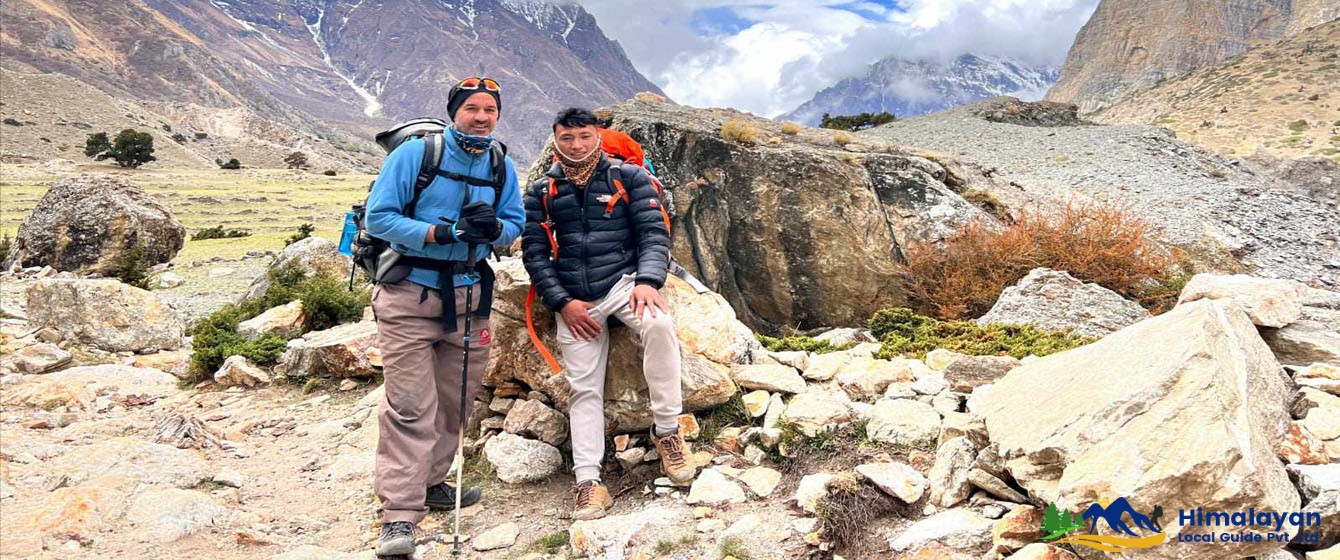
- Cost Inc/Exc
- Departure Date
- Map / Video
- Useful Info
- Wilderness Region Trekking
Nar Phu Valley Trek - 10 Days
Duration 10 Days
Cost per Person US$ 990
- No. Of Person Per Person
- 2 - 5 $1030
- 10 & Above $990
Trip Specialist:
- Destination : Nepal
- Activity : Wilderness Region Trekking
- Duration : 10 Days
- Trip Difficulty : Moderate
- Group size : 2-20 Pax
- Accommodation : Hotel/Lodge/Tea House
- Meals included : Breakfast, Lunch & Dinner
- Transportation : Bus/Jeep/Taxi
- Trip starting point : Besishar
- Trip Ending point : Besishar
- Trip Altitude : 5320 Metres
Best season : March, April and May & September, October and November
- Discover the Annapurna's majority remote and untouched region.
- The Tibetan and Gurung culture.
- Pass the Kang La 5,306 meters.
- You may be chance; to see wild Animals like Monkeys, Mountains Goats, Himalayan Thar, Musk Deer, and numerous others.
- Perhaps the best view from Kang La passes.
- Visit the Ancient Buddhist Monastery.
- Gigantic; Perspectives on Waterfall with pine and Rhododendron forests.
- Free Airport picks up and drop-off services.
- Trekking; Equipment such as Sleeping bags and down jackets (if you do not have your own – it is rental included if you need it).
- Basic First Aid kit Medical Box.
- Nar Phu Valley Trip route map and outline Itinerary.
- (Himalayan Local Guide Pvt. Ltd) T-shirt.
- Oximeter; for checking the oxygen level at high altitudes.
Trip Overview
Embark on a journey where you discover the hidden valley gem, which leads you into one of the fascinating treks that combines the remote villages of Nar and Phu Valley situated, in the north and east close to the Annapurna. It is an Untouched and glorious journey in the Annapurna area. They are astonishing. However, villages are settled by the Tibetan refugees, and you will experience; their lifestyle during your trek.
10 - Days Nar Phu Valley Trek is a grouping of exploring the isolated towns and perspectives on brilliant white snow-covered mountains, Slopes, Rocky Mountains, narrow gorges, yaks, waterfalls, Glacial, nature, dense forests of pine and rhododendrons and high pass of Kang La 5320 meters.
Nar Phu Valley Trek was authoritatively opened for tourists in 2003 ; it leads; into the Manang Gorge and is a part of the Annapurna trail. However, this Valley is a Desert, where there can fewer of rain. Nar and Phu village is the central place, Tashi Gompa is the emphasis, and Remain Gompa is well-known. The trail is narrow and thrilling.
Trek Starting Point: Dharapani or Koto Village:
We start the journey from Dharapani or Koto village after scenic driving from the capital city of Kathmandu. We follow the Annapurna surrounds to Koto Village, Pass through the classic Chortens and mani walls, cross the suspension bridge over the Marshyadi River, and trail to Nar and Phu Valley. The trekking route is Narrow and rambling on the pine and rhododendrons forests entry opens ascending to a marvelous extension of white snowy peaks of the Annapurna ranges and Himlung Himal.
These trips have several other ancient Buddhist monasteries, villages, and nature. We will explore and have chances to observe the wildlife animals such as; Monkeys, mountain goats, Musk deer, Himalayan Thars, and snow leopards. We cross the Kang la Pass 5,320 Meters; from the top, the sky is blue, and then we can see the Wonderful perspectives on Annapurna II, Annapurna III, Annapurna Iv, Gangapurna, Tilicho Peak, Chulu Pinnacle and Pisang Top After then we hike descending to Pisang, Chame and drive back to Besishar and Kathmandu.
The Nar Phu Valley Trek: Details Itinerary & Cost in 2024/2025
Depending on the travel organization, if you choose the international travel company, they may charge approximately U$D 2000 to 3000 per person. Nepal has many local trekking companies. It might be hard to pick the most excellent trekking company in Nepal. However, we are a local guide and Porters Company. We are somewhat less expensive than others. Our services are double theirs. Our main goal is to make your dream successful in the Himalayas and your whole days in Nepal vacation. The Nar Phu Valley trek cost is U$D: 1060 per head . A Full board package of this trek includes both ways of Transportation from Kathmandu - Besishar - Kathmandu by local bus and lodging for three times meals per day.
Nar Phu Valley Permit Cost:
This trek required three types; of permits; a Special Nar Phu Valley Entry permit , an Annapurna Conservation Area (ACAP) Permit, and a Trekkers information management system (TIMS) card covering the complete Nar Phu Valley with Annapurna region:
- September – November
U$D 100 per person: week U$D 15 per person/day (beyond one week):
- December – August
U$D 75 per person: week U$D 15 per person/day (beyond one week):
- Annapurna Conservation Area Permit (ACAP) per person U$D: 30.
- TIMS card U$D: 10 per person.
Is Nar Phu Valley Trekking a Difficult Route?
This trip is Nepal’s perfect trekking destination in the Himalayas region. It is also a moderate-difficult trek. Most travelers/trekkers need good health and reasonable physical fitness is most important for this trip because you are going to more than 5000 meters in altitude if your physical fitness is very well. Then I am 99% sure. It will be able to complete these itineraries. It’s very important to drink water and get plenty of rest to let your body adjust naturally to the increased altitude. As always, your local trekking guide will take care of your adjustment and ensure; that you take pleasure in a safe and rewarding trek to the Nepal Himalayas.
Trip Itinerary
Day 01: kathmandu – besishar – dharapani (1925meters/6,315feet)..
- Breakfast, Lunch & Dinner
- Hotel/Lodge/Tea House
After breakfast, we will drive along the Kathmandu – Pokhara, Prithivi Highway to Dumre, and then we follow the narrow and paved road by the Marshyangdi River reach; to Besishar. Again we will change the jeep or bus to Dharapani. It will be long and scenic of lush green hills, rivers, colorful terraced fields, and small settlement areas. After, we will stay at Lodge.
Day 02: Dharapani – Koto Village (2605meters/8,546feet) 5/6 Hours.
Today will be a more exciting day. We will pass the beautiful village of Bagarchhap, Danaque. After, we will ascend and cross the wood bridge, again climbing uphill to ramble on the pine and rhododendron forest. Our trek will continue to reach the Timang village. This village has a chance; to see the delightful views of Mt. Manaslu, which is more than eight thousand peaks. The trail again moves by lush forest and reaches Koto Village. We will spend the overnight at Lodge.
Day 03: Koto – Meta (3235meters/10,613feet) 6/7 Hours.
After the delicious breakfast, we will check the Special Nar Phu Valley permit ACAP and TIMS Card. The trails offer delightful views of Lamjung Himal and Annapurna II. After, our journey will continue toward Meta. The trekking trails follow; along the bank of Soti Khola and through the dense forests. We will cross the few suspension bridges, ascend on the pine and rhododendron forest then reach Meta Village. We will spend a night at Lodge.
Day 04: Meta – Phu Gau (4050meters/13,287feet) 5/6 Hours.
The trekking trail goes to ascend and descends. We will cross several suspension bridges. The trail will take you to Kyang, where you will get; to see the Miscellany of the Khampa settlement. After then; you will walk along the phu Khola on a rugged trail and reach the village. You will get; to see the magnificent landscape on the way to Phu Ghau.
Day 05: Acclimatization day at Phu Ghau.
Today is our rest day at Phu Ghau. We will explore the Himlung Base Camp and spend a few hours there, observing the local culture and traditions. We will visit the ancient Buddhist Monastery. Which is listed in the 108 world's old Gompas. It's; believed to be the last monastery built by Karmapa Rinpoche. We will return to Hotel, and we will stay overnight at Lodge.
Day 06: Phu Ghau – Nar Village (4130meters/13,287feet).
After breakfast, we will start our trek. The trail descends and crosses the suspension bridges until you reach Mahendra Pul. From again will cross the suspension bridge over the Lapche River. We will ascend by numerous Stupas and reach Nar Village. From the Nar Village, if the skies are clear, then you are able to see the views of the Pisang Peak and Annapurna ranges.
Day 07: Acclimatization day at Nar Village.
Another rest day in Nar Village; Today will hike to a small hill around 500 meters, then back to the hotel, and explore the village. You will look into the daily lifestyle of the local people and culture.
Day 08: Nar Village – Kang La Pass (5320meters/17,454feet) – Nawal Village (3660meters/12,007feet) 7/8 Hours.
In the early morning, we will have breakfast. After, our journey will be going long and exciting day. The trail will ascend to Kang la Pass and from the top. We will be able; to see the delightful panoramic view of the Annapurna ranges with beautiful landscape. We will enjoy ourselves very much with nature. We will spend a few hours on the top taking pictures of mountains and landscapes. After then, we will descend to Nawal Village, where we can explore the ancient Buddhist temple and local lifestyle.
Day 09: Nawal village – Chame village (2675meters/8,776feet) 6/7 Hours.
Today we will have a very early morning breakfast. After, then, we will descend; to Ghermu, Upper Pisang, Dukur Pokhari, and Bratang and reach Chame village. Along the trail, we have a chance to explore the ancient Buddhist monastery, typical Houses, Stupa and mani walls on the way, and views of Annapurna II, Annapurna III, Annapurna Iv, Gangapurna, Pisang Peak, and Lamjung Himal, etc.
Day 10: Chame Village – Besishar – Kathmandu.
- 11/12 Hours
- Breakfast & Lucnh
After the delicious breakfast, we will catch the jeep to Besishar, pass through the beautiful villages; of Koto, Danaque, Dharapani, Chamje village, Jagat, Nadi, and Bulbule, and reach Besishar. Again we will change the Bus to Kathmandu.
Cost Includes
- International Airport Pick up and drop off by private car/van / Jeep / Hiace, depending on the Group Size.
- Transportation service from Kathmandu – Besishar by Bus.
- Chame - Besishar by sharing jeep.
- Besishar – Kathmandu by Bus.
- All Meals on a Full Board basis BLD (Italian, Chinese, Indian, Nepali, and many European delicious food); Choose by menu.
- Nar Phu Valley Special Permit .
- ACAP (Annapurna Conservation Area Project) Permit.
- TIMS Card (Trekking Information Management System).
- HLG team, Professional, strong, and Government trained English speaking Guide.
- Himalayan experienced and honest porters during the trek (2 Clients for 1 Porter).
- Tea House, Home Stay or Guest House) During the Trek.
- Assistant Guide. For group 5 or above.
- Approval of Certificate. After the successful trekking.
- Supplementary; energy bars, crackers, Cookies, Halls, etc.
- Fruits like; Apples, Oranges, Blackberries, etc.
- First Aid kit box. (Guide will Carry it during the trekking).
Cost Excludes
- Cold and Hards drinks, such as beer, mineral water, cock, Fanta, Whisky, etc.
- Coffe & Tea.
- Private: expenses Such As laundry, telephone, WIFI, Hot Shower, Shopping, etc.
- Your International airfare.
- Nepal visa fee. (15 Days -25 U$D, 30 Days — 40U$D and 90 Days — 100 U$D.
- Hotel in Kathmandu and Pokhara.
- Trekking Equipments.
- Travel insurance is just in case.
- Tips for Guide and porters.
Fixed Departure Dates
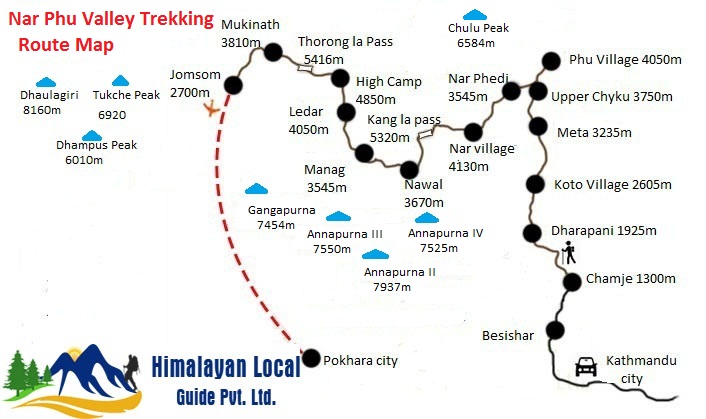
FAQ's Before Travel
How difficult is the Nar Phu Valley Trek?
It is a moderate trek. It’s needed the number 10 to 12 days.
What is the accommodation during the Trek?
It is a Guest House/homestay with comfortable rooms.
What types of entry permits are required; for Nar Phu Valley?
You. Needed three types of entry permits
- ACAP Permit.
- Nar Phu Valley Permit.
Is Nar Phu Valley a restricted trekking area in the Nepal Region?
Yes, it is a restricted; trekking area in the Nepal Region.
Do I need a Guide for Nar Phu Valley region trekking?
You must take a guide mandatory. We will provide you expert trekking guide and Porter team.
Useful Information
Foods during the nar phu valley:.
During the trek to Nar Phu Valley, your food will be arranged at the Guest House or homestay. All through your trip, you will stop along the villages for a lunch break breakfast, and dinner, which we will take at the guest house, where we are staying. The Tea houses offer a variety of meal options to select from the menu. However, they will provide basic Tibetan & Nepalese foods. It also offers the special Nepali Dal Bhat, a set dish with rice, curry, vegetables, papad, lentil soup, pickles, etc.
Along the journey, you will obtain European, Chinese, and Italian, Indian foods as well. You can choose from the Menu: Pasta, Noodles, Pizzas, Macaroni, fried potatoes, Thukpa, Muesli, Oat Porridge, Pancake, Spaghetti, and many other delightful treats available at a lodge along the trek.
Teahouse Lodging in Nar Phu Valley Region:
The Guest House facilities on the way to the Nar Phu Valley trek are just basic and limited to a homestay. A Tea house is a famous form of accommodation while trekking in Nepal. It is a varied lodging option that culminates with the design of a homestay and a new lodge style. The community of people living along the trekking route in Nar Phu Valley has custom-made their homes into a lodge or Homestays. A Guest house room can accommodate; a kitchen, dining hall, bathroom, shower room, and small shop built into the lodge. You can enjoy it with a warm log fire in the dining hall area. Along the route, you will get a basic bed, pillows, and cover. You can take a sleeping bag from your home or rental in Kathmandu.
When is the best time to explore the Nar Phu Valley region?
We manage the Nar Phu Valley in the entire season, but if you are planning this trek and you do not have an idea of, the best season to learn about this valley, we would like to recommend; you following best season:
- March – April till May (Spring Season): You will see beautiful weather with delightful mountain views as well warm temperatures.
- June – July till August (Summer/Monsoon Season): This summertime in Nepal is a rainy season, but the Nar Phu Valley area is a rain shadow region. It’s still good for trekking.
- September – October till November (spring season): This time will be clear weather and warm temperatures. It will be good for trekking.
- December – January till February (Winter Season): Winter is the coldest season in Nepal. It will be very difficult for Nepal trekking because of the heavy snow along the journey. If no snow, you will be able to trek in Nepal.
The main Symptoms of altitude sickness:
- Difficulty sleeping
- Lightheadedness
- Loss of appetite
- Difficult to breath
Preventive measures:
- Do not drink alcoholic beverages in high elevation.
- Keep yourself hydrated.
- Do the Acclimatize low altitude to a high and back to sleep at the low.
- Do not achieve more than 500 meters in a day.
- Do not walk very fast at high altitudes.
- Walk slowly on the high elevations and keep walking.
- Do not walk alone on the way.
- Inform your guide as soon as; possible if you have any high altitude sickness.
- Drink very much boiled water.
- Take garlic soup and Ginger tea; it is high altitude sickness medicine.
Necessary documents For Nar Phu Valley:
- Insurance paper.
- Passport-sized Photos.
- Tims Card (Trekking Information Management System Card.
- Special Nar Phu Valley Permits.
- ACAP (Annapurna Conservation Area Permit) Entry Permits.
TREKKING EQUIPMENT LIST FOR NAR PHU VALLEY REGION:
Body Clothing:
- Sleeping Bag
- Down Jacket
- Three pairs of trekking T-shirts
- Long-sleeved shirts
- Thermal Shirt for Colder place
- Fleece Jacket
- Warm wool Sweaters
- Waterproof and windproof Jacket
- Cotton Trekking pants with folding
- Waterproof and windproof pants
Head and Face:
- Wool or fleece hat
- Sunscreen 50
- Face wipes and towel
List of Footwear:
- Trekking Boats
- ¾ Paris Preferably, Cotton Socks
- One pair of extra Sport Shoes
Necessary Gears:
- Gaiters just in case snow
- Gloves and Thick Gloves
- Big rucksack above the 40 L
- Waterproof Bag Cover
- Trekking Pole (if you needed)
- Laundry Soap
- Toilet papers
- Water pearls
- Bottle for drinking water
- Pen and Note Book
- Copy and Tourist Guide Book
- Battery charger
- Memory card
- Cell Phone and Charger
- Money Wallet
- Altimeters and Playing card
First aid Kid:
- Cotton bandages
- Paracetamol
- Painkillers
- Loperamide to Control diarrhea (just in case).
- Water purified tablets
- Elastic bandages
- Thermometer
- Moleskin and sling.
Trip Gallery
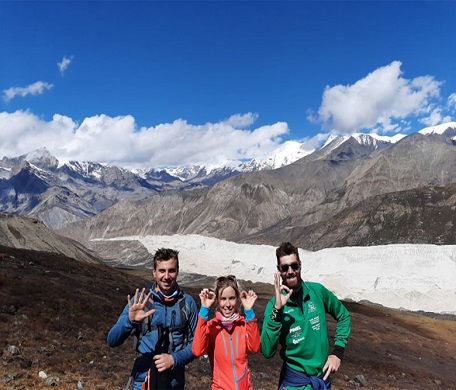
Trip Review

My wife and I decide last minute to go to Nepal.I personally went there twice as a solo trekker,so we didn't want to be in a group .I found Citra agency by chance while browsing .I text him through WhatsApp and straight away I had a good feeling.He customed us a trek according to our available time,took care of permis and everything...We did the Nar and Phu valley trek .It was mind blowing,Bashanta our guide was so nice and helpful, always discreet when needed,just a very nice person.We are definitely coming back next year . I highly recommend this agency,honest and very good price

Himalayan Local Guide was really helpful and professional,they helped with all the permits before we came to Kathmandu,so on arrival all permits was issued.Guide we hade on the trip Emmanuel was top notch 👌,the trip was just perfect.Warmly recommend to use them if u want have a spotless trip and experience during your trip.
Many thanks to you guys for this trip and see you next time.
You May Also Like
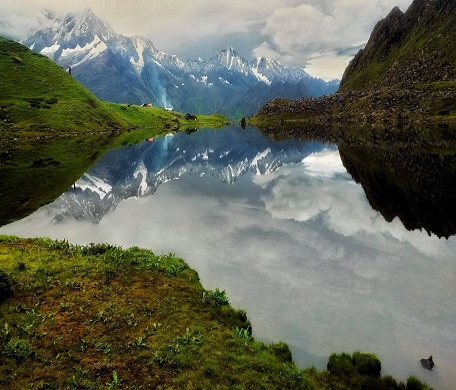

Ruby Valley Ganesh Kunda...
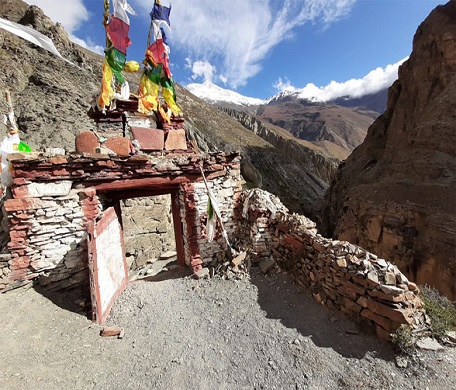
Nar Phu Valley Trek Solo
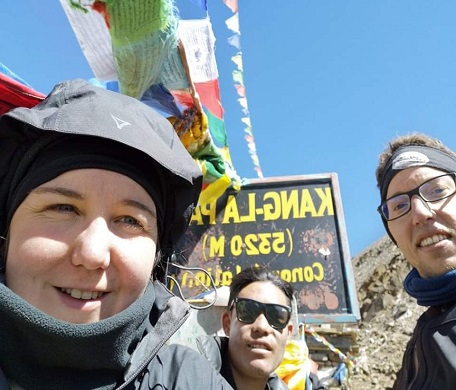
Nar Phu Valley Via Annapu...
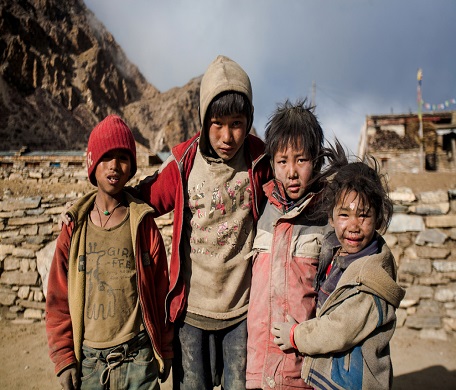
Local Trekking Guide Serv...
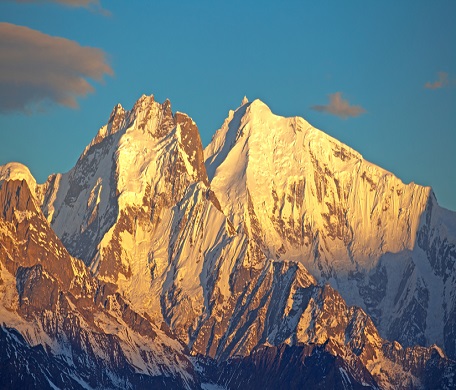
Ganesh Himal Trek - 10 Da...
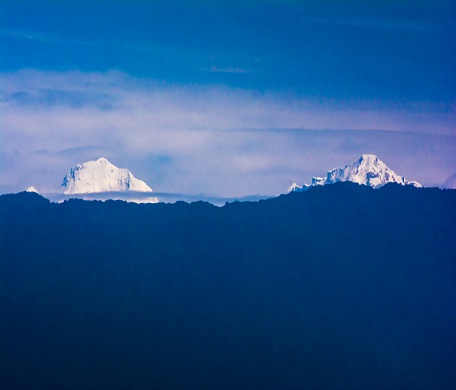
Ruby Valley Home Stay Tre...
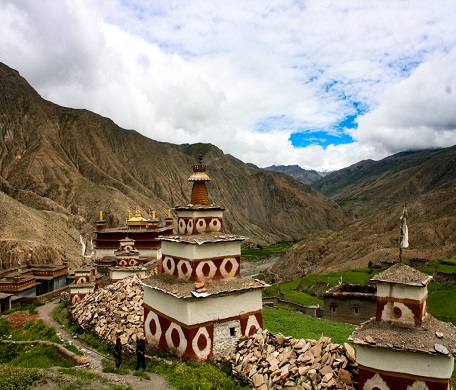
Upper Dolpo Trek
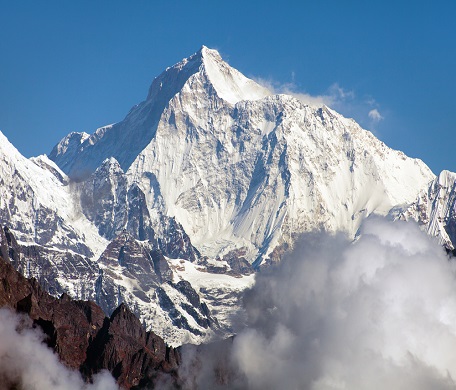
Makalu Base Camp Trek
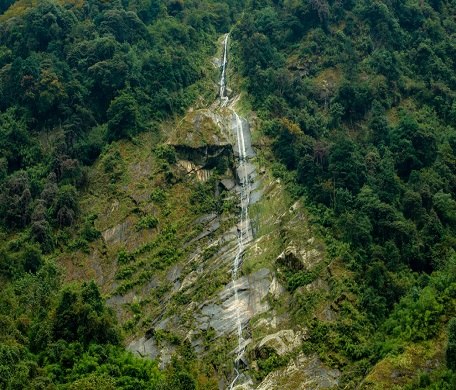
Indigenous People Trail T...
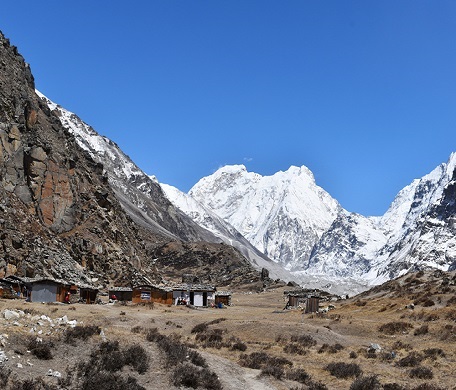
Kanchenjunga Circuit Trek
Quick links, useful links, booking information, about company.
- Company Profile
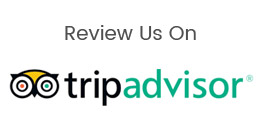
Address: Sorekhutte, Kathmandu
Phone: +9779818141334
E-mail: [email protected]
Associated with Following Company
Follow us on folloiwng links, payment options.

© Copyright 2024 Himalayan Local Guide. All rights reserved. | Developed by : Web Design In Nepal
Quick Inquiry

- Destination
- Nepal Trekking
- 20 Best Nepal off the beaten track
- Nar Phu Valley Trek
- Duration 15 Days / 14 Nights
- Price from $1199 / person
- Difficulty Level Strenuous
- Max Altitude 5416 Meters
Nar Phu Valley Trek is a fantastic trip to the wild and lost valley of Nar Phu offering off the beaten track wilderness experience in Annapurna region. Nar and Phu villages are situated off the Around Annapurna main trekking trial en-route to Manang is surrounded by Pisang Peak to south, Kangla Pass to the west, Kangru Himal east and Damodar Himal to the norht. The villages are situated at the altitude of 4110 meter. Being nestled inside the valley it is less windy but the lands are dry and rugged. Perhaps late Prof. David Snellgrove, a renowned Tibetologist, is the first westerner to have visited these villages in his Himalayan Pilgrimage. Their spoken dialect is different from Manang and Tibetan. Most of the houses are two-story with the entrance from the top. There are three Buddhist monasteries. Phu is located at the upper end of the valley. As in high mountain area people of the Nar Phu descends to warm region from December to February. People of Nar have closer relationship to Manang. Unlike people from Manang they do not trade widely, rather concentrate to nearby areas in the south. The Gurungs of Lamjung use the lamas of Nar Phu as they believe they are expert therefore they had great influence.
Nar and Phu villages were lost around 1960 at the advent of Khampas (Tibetan warrior) until 1975. Khampas made their actual presence from 1964 and lasted until they were driven out of Nepal entirely. They wages insurgency operation in Tibet after Dalai Lama escaped to India. The valley was opened to foreigners with special permit from 2003. Since then the lost village was opened to the outside world. The Khampas were powerful than the local so they dominated the villages. Actually the valley was a secure place for them. Though it is in close proximity to Lamjung in the south yet for central administration it is beyond their outlook post. In many aspects Manang dominated every aspects of Nar Phu though at later stage Lamjung exerted their influence as people of Nar Phu detested superiority exhibited by Manang. That is also one reason for the oblivion condition that isolated them from the rest and deprived of the development benefits happening around them. They have not been able to get out of the social clutch and the valley that surrounded them.
Occasional visitors to Nar and Phu villages were climbers. They go to climb Himlung Himal (7126m) to the east on the border to Tibet of Phu and Kanguru (6981m) east of Nar. French expedition to Kanguru in 2005 had met a big climbing disaster due to avalanche that happened near Meta. In 2009 another climbing disaster happened at Himlung due to unexpected avalanche. Technically both peaks are challenging than most trekking peaks.Nar Phu Valley is also approached from North West from Mustang through the high pass at Teri La Pass (5595m) Trek and Saribung La. These are not regular trekking route but used by the people of Nar and Phu and some wilderness trekking lovers. However, climbers liked to cross this pass after climbing Saribung peak (6327m). Most trekkers visiting Nar Phu liked to cross Kang la (5306m) to reach Manang via Ngawal and Braga on the other side of the valley. Other interesting places to combine with Nar Phu Trek are Tilicho Lake (4920m) Mesokanto La pass, and climb trekking peaks like Chulu West, Chulu East and Chulu Central. Pisang peak (6091), a training peak of Nepal Mountaineering Association, is also very popular. Our original version itinerary of Nar Phu Valley Trek goes through famous Thorong La Pass and ends the trek at Jomsom.
Kind of Accommodation and cost in Nar Phu Valley
Now Nar Phu Valley is possible as teahouse trek and home stay trek and does not need trekkers to camp. One gets to indulge in the local culture, traditional houses and lives of the warm people who make the treks more enjoyable. Accommodation is not an issue in Nar Phu Valley. The trails are usually unfilled or less crowded and new and improved tea houses are opening up all the time. No earthquake damage at all. The cost of a room on twin sharing basis usually ranges from NPR 500 – 800 (USD 5 – 10). The price goes high as you walk higher. Please do not expect luxury but comfortable enough for remote and cultural discover keens.
Guide and Porter Cost
Whereas many of the famous treks in Nepal do not have strict requirements for hiring licensed guide yet, all the controlled and restricted trekking areas in Nepal is mandatory that foreign trekkers must be accompanied by registered guide as per state law. The cost of a guide is USD 30 – 40 a day depending on the quality, level of education, experience of guide and season. Porter hire costs USD 20 a day. The cost covers wages, accommodation, food of the guide and porter. Some companies also offer fresh guides and they can act as Guide cum Porter (PcG) he carries some 10-13kg for you and simply guides you. Hiring a guide cum porter will cost USD 25 per day.
We recommend you take an experienced licensed guide as Nar Phu is adventurous and high altitude area, if something goes wrong; you really need a good guide with all the technical knowledge for safety that can handle crisis. The training and experience of a licensed professional guide can make your trekking more fun and enjoyable.
Transportation Cost Nar Phu Valley Trek
As Nar Phu Valley is located on the north of famous Annapurna Circuit and Throng La; the road access made it easier and local buses to besisahar from Kathmandu and connecting local jeeps to Syange/Jagat/Taal/ Dharapani or even to Koto and futher up to Manang is available. However, only Kathmandu to Besisahar has proper smooth road and it is dirt and unsealed bumpy road between Besisahar to Koto – Manang and the monsoon rain may affect the road if you are travelling in rainy season. You have choice to take Local bus/jeep or rent a luxury 4WD private jeep from Kathmandu. A local bus will cost around USD 5 – 6 per person to Besisahar and USD 25-30 per person to Koto and private jeep to Koto from Kathmandu will cost USD 400 - 450. If you are traveling in a group, the cost can be shared by all and would cost cheaper. And the same for vice versa. If you are cambining this trek with Throng La or Mesokanto La Pass via Tilicho Lake and ending the trip at Jomsom, there are flights/buses available from Jomsom to Pokhara. Even direct night bus to Kathmandu is available from Jomsom that is much cheaper and can be arranged on the spot. Jomsom - Pokhara flight cost USD 160 per person Jomsom - Pokhara local bus fare NPR 1700 - 1900 per person. Pokhara - Kathmandu flight USD 100 - 106.00 per person. Pokhara - Kathmandu by toursit bus USD 10 - 25 per person ( a private car / jeep can be arranged if you ask)
How much does it cost for meals?
As we mentioned earlier, Nar Phu valley is a remote and rural area all the goods are carried by mules, horses and human muscles which makes it expensive. As the elevation increases, the price of food increases and the menu choices decrease as it gets harder to transport more goods to remote places. The cost of each meal is approximate NPR 400 - 700 but it might vary according to your choice of food, the number of meals, and appetite. Approximately USD 20 - 25 should be enough for a day simple meals and tea/coffee. You will enjoy every bite, every sip after a hard day’s trek and the hard work of the men and mules required carrying them to such elevations. Every single piece of food feels worth every penny for the relief and joy.
Drinks Cost Bottle of beer: NPR 500 – 700 (USD 4.5 – 7) Bottle of water/soda: NPR 50 – 400 (USD 0.5 – USD 4)
Nar Phu Trek Permit
As Nar Phu is a protected area, the government requires different permits to support to preserve of the area, limit the number of tourists and control the borders with Tibet. These permits are required exclusively for Annapurna conservation areas. For the months of September to November, the rate per person is USD 100 for one week and if you are visiting between the months of December to August, the cost is USD 75 for one week per person. Beyond one week; it costs USD 15 / 10 per day per person. In addition; you need ACAP (Annapurna conservation area permit). The cost is NPR 3000 (USD 30). And if you are combining this trek with Annapurna Circuit, you will need TIMS Card that costs NPR 2000.
Cost for other extra expenses
As the altitude increases, everything becomes more expensive due to the effort and cost of transporting goods there. It is the same for all high elevation treks to the mountains in Nepal. Here is a list of things you might want to indulge in during the trek and their prices.
Charging Devices
You will need to charge your electronic devices like camera, phones, iPods and others as you spent days in the mountains. The cost is usually a few dollars but in the long run it will cost you more to charge many things. The cost is higher to support the local hydropower stations and there are no electricity everywhere but solar power. If you want to avoid this cost, you might want to carry a solar-powered battery charger or a portable power bank of your own. This ensures that you get to enjoy the beautiful sceneries and fun experiences and share them with the world all the time. And you should know the battery how long does it last after charging till the next.
Hot Shower Each day of the trek is a exhausting experience and you may want to take a hot shower and get fresh all the time. However, in the higher places showers or baths are not possible due to the cold and the cost. While some lodges might have proper bathrooms others provide only pails of water for your bath. These will cost you a few dollars every time but they will not feel like a proper bath. Instead, it is a good idea to carry wet wipes and a small towel to freshen up in the morning as well as before bed.
Tiping and donations
If you like the services of the places you visit or the people you meet in the trails, you might want to tip them and tipping culture quite common in Nepal. It is usually a good idea to tip your guides and porters for their hard work if they make your trip fun, safe, and enjoyable. Various places in the high altitudes like the monasteries, stupas and schools will expect some form of a donation from the tourists for the improvement of their infrastructures. You might want to keep aside a few dollars if you feel like contributing to such good causes. Trekking to the mountains of Nepal is one of the most adventurous trips you could ever enjoy. As you take in the majestic beauty of the mountains and green landscape, the warm welcome of the friendly people and the thrills of the trails, you will get an experience worth every penny you spend. However, it is a good idea to avoid being overcharged for things that you get for reasonable prices.
How much does it cost for the inclusive package?
The amount you pay for the same trek depends on the travel agency you choose. If you pick an international agency, they may charge you around USD 2200 – 3200 per person while as we are a local company our customized cost is 750 per person on twin sharing basis with breakfasts. Some agencies charge for their brands and the safety and convenience, local companies provide equally satisfying services. It is your choice to pick the agency according to your budget and travel plans though booking through local agency is your direct contribution supporting locals.
How long is Nar Phu Valley Trek?
Nar Phu Valley Trek will be 12 – 18 Days. You have option whether start it from Bulbule or Jagat in lower place to make your body fitter and stronger if you are beginner or moderate trekker. Some very experienced trekkers start their trek from Koto which is already at the elevation of 2600 meter above sea level that makes the itinerary short but it is NOT recommended for not used to trekkers considering high altitude sickness. You have choice to combine this trek with Annapurna Circuit, Tilicho Lake with Nar Phu Valley, or cross over Teri La Pass and enter in the Mystique Upper Mustang.
- Nar Phu Valley Trek will bring you through daring Kang La and Thorong La passes offering dramatic Himalayan Panorama.
- Explore lost valley of Nar and Phu, Manang, Ngawal village and the old monasteries in Phu village.
- Hike ancient salt trade routes, ascending the Marshyangdi and trek through the beautiful Manang village and the pilgrimage town of Muktinath.
- Discover the world’s deepest gorge - the Kaligandaki, and take a scenic mountain flight from Jomsom.
- Finally enjoy the sunrise lake city of Pokhara at the end of trip.
Our Nar Phu Valley Trek itinerary is only for guidelines. We can customize the itinerary and tour cost according to your requirements and the time you have.
Day 01: Kathmandu to Jagat Drive (1300m), 8-9 hours
We begin our journey at early dawn as we have a long drive ahead of us. We head-start right after breakfast and leave Kathmandu around 7 am in the morning. We see picturesque views of Nepali countryside, lush greeneries, rivers, villages, farms and mountain vistas en route throughout the drive. After 8-10 hours of drive we reach Jagat via Besishahar. Drive up to Besishahar will most likely be smooth owing to black-topped roads whereas after Besishahar, the roads get dusty and coarse but the scenic view from our windowpane is more than compensating for the bumpy ride. Overnight in Jagat.
- Lunch & dinner
- Trekking Lodge
- 11300 Meter
Day 02: Trek to Dharapani (1,960m) 7-8 hours
After breakfast, we leisurely start our trek today. The trail from Jagat descends until it reaches the river and then continues through a lush forest. Further ascent leads to sharp-edged cliff facing the riverbank. En route, Chyamje comes into picture amidst the glorious backdrop of towering Annapurna mountain ranges. After crossing a suspension bridge, we climb steeply towards the slippery and physically challenging path to Sattale. On treading along a succession of rock-strewn trails, we descend to a grassy riverbank that leads to Tal. As we walk away from Tal, the path becomes rugged and winding. Then we approach steep forested village of Karte. Meandering along the waterfalls and cliffs, we finally reach Dharapani after crossing a suspension bridge. Overnight in lodge at Dharapani.
- Breakfast, Lunch & Dinner
Day 03: Trek to Koto (2,610m), 5-6 hours
We head to Bagarchhap which takes about one hour going through pine and fir forests. We can visit the white washed monastery in this village. Then we continue our trek till Danaque which takes about an hour. The trail is steeply ascending up to Timang. We have a good view of Mt. Manaslu and Peak 29 from here. Now the trail continues through pine forests again till Latamarang which takes about one and half hour. We break for lunch here and again resume through forests whereby we have a short glimpse of Annapurna II. Finally we arrive in Koto village. Overnight in lodge at Koto.
Day 04: Trek to Meta (3,560m), 7-8 hours
In the morning, we register our restricted area permit at the Police Check Post. Then we trek through the River bank of Soti Khola again through wonderful pine forests, streams and suspension and reach Dharamsala. We have our packed lunch on the way. We then continue the trek through forests and ascend steeply towards Meta village. Finally we arrive on the Tibetan Plateau where we have a very good view of Annapurna II and Lamjung Himal. Overnight in Meta.
Day 05: Trek to Phu Gaon (4,250m), 7-8 hours
Today, it is planned as acclimatization day whereby we are recommended to rest and get acclimatized with the altitude. As we are in the Lost/Hidden Valley, we can explore the culture, natural diversity, and religious practices of the local people. Besides this, we can trace out how people make their survival depending on agriculture, animal breeding and seasonal migrations in such remote location or in the hidden valley. It is also the day for us to explore the Tashi Lakhang Monastery – the old Buddhist Monastery listed out of the 108 world’s great Buddhist Monasteries; it is supposed to be the last monastery constructed by Karmapa Rinpoche. Apart from exploring the cultural avenues of the lost valley, the valley also offers us a great view of Himlung Himal and other snow peaks in the region. Overnight in lodge or homestay at Phu Gaon.
- Phu Village
Day 06: Trek to Nar Phedi (3500m), 5 hours
The trail descends passing many streams and suspension bridges until Mahendra Pul which takes about 5 hours. We pass the high suspension bridge 80m over the Gorge of Lapche River. We have lunch in Mahendra Pul. Many people continue to Nar which 2 hours from Mahendra Pul. We stay at monastic school at Nar Phedi. There is no lodge no village at this place.
Day 07: Trek to Nar (4110m), 2 hours
It is a very short day today, the trail steeply ascends passing many Buddhist stupas until Nar Village which takes about 2 hours. We find several Buddhist Monasteries here to visit coupled with the glorious vistas of Pisang Peak and other small peaks. Overnight in lodge at Nar.
Day 08: Trek to Ngwal (3,660m) via Kang La Pass (5,320m), 7-8 hours
Today is daring day with long day hike of 7-8 hours so we get up early in the morning and head to Ngawal via Kangla Pass (5320m). From the pass we can enjoy the view of Annapurna massif. We further trek down to Ngwal from there. Overnight in lodge at Ngawal.
Day 09: Trek to Manang (3540m), 6 - 7 hours walk.
The weather gets warmer and the greener landscape as you go down more than 2000m from the pass. Set off early for the last few hours of trekking to reach Manang where most of the trekkers hiking to Annapurna circuit halt for acclimatisation. The trail is wide and pleasing. Stop for a quick snack in the village then walk to Manang
Day 10: Rest day in Manang
It is plan for an extra day if you need to rest your body or you can post some photos and stay update with your loved ones as there is internet (Wi Fi) services. You have choice to hike Ice Lake that offers stunning view of giant Annapurnas.
Day 11: Trek to Leddar
Today you walk to Leddar at the altitude of 4230 meter that is some 700 meter elevation gain. As we expect you are already acclimatized from Nar Phu and kang La pass you don't altitude proble,. overnight in Leddar.
Day 12: Trek to Thorong Phedi (4600m)
It is short walk of some 4 hours to Phedi from Leddar, alternatively you can trek to high camp that makes you have short climb next day to Thorong la pass (5416m). However you need to consult with your guide whether you stop at Phedi or High camp for the night. Also most importantly you need to see how well you can go.
- Phedi or High Camp
Day 13: Trek to Muktinath (3800m)
Trek to Muktinath via dramatic Thorong la Pass that is 5416 meter high from the sea level. Capture some memories at the pass then head down to Muktinath. Now you can celebrate your trek as you make it successful of the trek.
Day 14: Trek to Jomsom (2700m)
It is short trek of 4 hours to Jomsom. You can walk via Kagbeni village or alternatively via Lupra Village that can be long day.
Day 15: Fly to Pokhara
Take the flight of 25 minutes to Pokhara - the lake city. it is a good place to rest and relax your legs after that big hike.
- Hotel Mount View
What's Included
- Jomsom - Pokhara by flight with airport taxes.
- One night deluxe room in one of the best tourist standard hotels in Pokhara with buffet breakfast.
- A certified local Nar Phu Valley Trekking guide.
- 1 Sharing trekking porter for two trekkers (weight limit 25/kg / porter)
- Local sharing transportation to and from trekking.
- Trekking lodge and home stay accommodation on twin sharing basis.
- Meals: Breakfasts, Lunches and Dinners during the trek.
- Guide and porters fee with all their expenses in trek.
- All necessary Nar Phu Valley trekking Permits.
- Office service charge, government tax and vat etc.
- Insurance and trekking gear for guide and porters.
What's Excluded
- Accommodation, meals and transfers in Kathmandu.
- Guided tour and monuments entrance fees in cities.
- Bar drinks, beverages such as coke, fanta, mineral water, laundry service, toiletries.
- Personal nature expenses, hot shower, hot water, internet and phone calls.
- Personal travel insurance and trekking gear.
- Hiring horse/pony or extra porter if necessary.
- Rescue operation charge in case of emergency.
- Gratitude and tips for your guide and porter.
Availabilities
Useful information.
Nar Phu Valley Trek can be personalized as per your requirements that meet your time frame, financial status and places of interests to include in the itinerary. The trip cost we have offered here is on minimum group size of two travelers basis. No single supplement is cost is required. The cost will be according to Deluxe, Standard, Budget and as per group size. This trek also can be combined with Tilicho Lake, Mesokanto Pass (5200m), Teri La Pass and Saring Pass Trek, extreme High Passes treks linking to the Upper Mustang. Nar Phu Valley Trek requires restricted area permit which costs US$ 90 per week per person and December - August US$ 75 per week per person or equivalent convertible foreign currency. In addition, ACAP Permit is mandatory that cost NPR. 2000.00 Per person. You must trek with a licensed trekking guide and arranged with a government registered trekking agency. Please kindly send us your details for tailor made program. See you in Nepal!
Nar Phu Valley Trek in July
We did Nar Phu trip in July though it is not a really good time to trek but we have off time in July. We found it awesome! The trip takes you from jungle to alpine zone that are all completely spectacular. We went during summer season but did not [...]
Review of Nar Phu Valley Trek
We had such an amazing experience on the Nar Phu Valley trek. Could not fault Wilderness Excursion Company or our guide and porter! Every single person involved in our trip was incredibly caring, helpful, welcoming, and accommodating. A truly memorable experience and would highly Wilderness Excursion anyone doing Nar Phu [...]
Send an Inquiry
We are associated.
Nar Phu Valley Trek in 2024: Itinerary, Map, Permit, and Cost
- January 3, 2023
- Nar Phu Valley
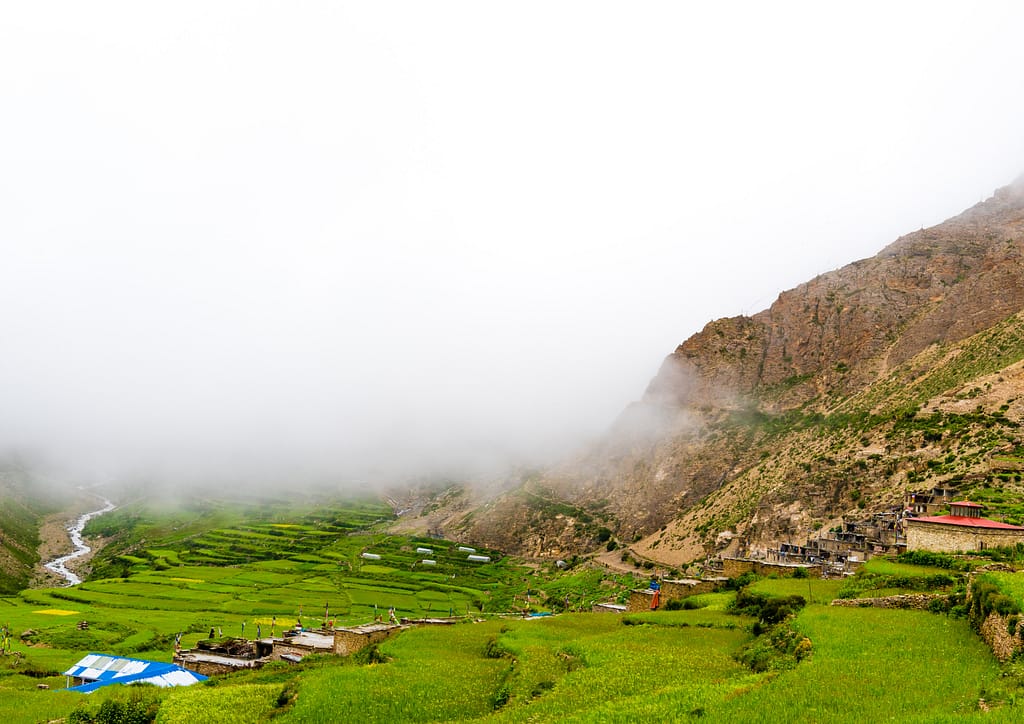
Trekking in Nepal has always been an awesome idea. From experiencing its natural beauty to getting acquainted with its culture and people, Nepal offers everything that you ever wished for as a traveller. The country is famous for several adventurous activities, trekking being one of them. When it comes to trekking, there are hundreds of trekking destinations that you can choose from. We have listed the Nar Phu Valley trek in this blog.
If you are fond of trekking to high altitudes, Nar Phu is surely one of your destinations. The valley sits at an altitude of 4,250 meters above sea level and is a perfect place to view the Annapurna mountain range. Similarly, the culture you get to see along the routes and the people you meet will be life-long and memorable.
Are you planning a trip to the Nar Phu Valley Trek in 2024? Here is all the information you need about the itinerary, map, permit, and cost of the trek.
You may also like:
- Tilicho lake Trek Ultimate Guide
- Mardi HimalTrek: A Comprehensive guide
- Annapurna Sanctuary: A trekkers Ultimate Guide
- Annapurna Circuit: A Trekkers Paradise
Overview of the Nar Phu Valley Trek
The Nar Phu Valley Trek is an adventure that takes you through the heart of the Himalayas and is only open to a limited number of people each year. This trek is for the experienced hiker who wants to explore an untouched region of Nepal that’s full of natural beauty and cultural wonders.
The journey starts in Kathmandu, where the guide will brief you on the journey. You’ll then ride to Besi Sahar and, from Besi Sahar to the village of Koto, located in the Annapurna Conservation Area . From there, it’s all uphill as you make your way to the village of Nar Phu.
During your trek, you’ll explore ancient monasteries, witness stunning landscapes, and meet the friendly locals who call this region home. The trek ends with a descent back to Kathmandu.
For more information on the Nar Phu Valley Trek, please see below.
Permit Requirements and Costs

To trek in the Nar Phu Valley, you will need two permits . They are:
- Annapurna Conservation Area Permit (ACAP)
- Restricted Area Permit ( RAP)
The ACAP permit costs NPR 2,000 per person. The RAP costs $100 per person every week from September to November and $75 per person every week from December to August.
The trek can be completed in six days, but it’s best to allow for an extra day in case of bad weather or other unforeseen delays. This will also allow for more time to explore the valley. The cost of your trek will vary depending on your group size, the type of accommodation you choose, and whether you hire a guide or porter.
What to Expect on the Trek
The Nar Phu Valley trek is moderate to difficult and takes approximately 10 days. The trail winds through the pristine and beautiful Himalayas and offers stunning views of the Annapurna, Dhaulagiri, and Machhapuchhre ranges. Along the way, you will pass through ethnic villages and cross high passes and glacial rivers.
You can expect to be challenged both physically and mentally, but the breathtaking scenery and sense of accomplishment upon reaching the end of the trek will be well worth it.
Essential Tips for Planning Your Trek
To make your Nar Phu Valley trek a reality, it’s important to plan carefully . Here are some essential tips to make the experience even more enjoyable.
It’s always a good idea to book flights and accommodation in advance as the valley is quite remote and not many hotels are available. This will also help you save money.
Before you start your trek, it’s important to research the terrain and weather conditions, as this will help you prepare for any unexpected events or situations.
Don’t underestimate the altitude.
Altitude sickness can affect anyone trekking in high-altitude areas like the Nar Phu Valley. So be sure to take appropriate precautions and be aware of the signs of altitude sickness .
Get insurance
Getting travel insurance is essential when travelling abroad as it provides financial protection in case something goes wrong. Make sure you check what is covered by your policy before leaving home.
Pack Your Bags: What to Bring on the Nar Phu Valley Trek

Now that you know your packing list for the trek , let’s talk about what you should bring individually. Your luggage should include proper footwear, outdoor clothing, a solid backpack, and a good sleeping bag.
When it comes to the shoes, pick something that’s comfortable and has a good grip. You’ll be walking on rocky terrain with slippery pebbles, so make sure you keep your balance and do not slip.
It is important to keep your body temperature regulated while walking in different altitudes and temperatures. So, for your outdoor clothing choices, stick with layers of breathable fabrics like wool or synthetic fabrics. Don’t forget hats, gloves, and scarves too!
A solid backpack is essential. Also, make sure you get one with adjustable straps, waterproof exterior pockets, and an internal frame for better comfort. Last but not least, a sleeping bag will also come in handy during cold nights on the mountainside.
Nar Phu Valley Trek Itinerary
Your trek will start in Kathmandu, where you’ll be driven to BesiSahar , a 6-hour drive away. From there, you’ll be walking on trails that have been used for centuries by locals and traders.
Your first stop will be Tilije village, and then up to Meta, where you’ll get your first close-up views of Manaslu and the Himalayas. Then, you’ll trek up the Nar Phu Valley until you reach Koto, a high-altitude village with traditional Tibetan houses.
You’ll spend two days acclimatizing here before continuing further into the valley until you reach the remote Nar Phu village. Spend some time exploring this unique destination, and if weather permits, try to get close-up views of Annapurna II and Manaslu from the Kang La pass. Finally, follow the Marsyangdi River until Nayapool, where your trek ends.
Here is the step-by-step process and stops you will encounter on your trek to Nar Phu Valley.
Kathmandu to Besisahar, Lamjung
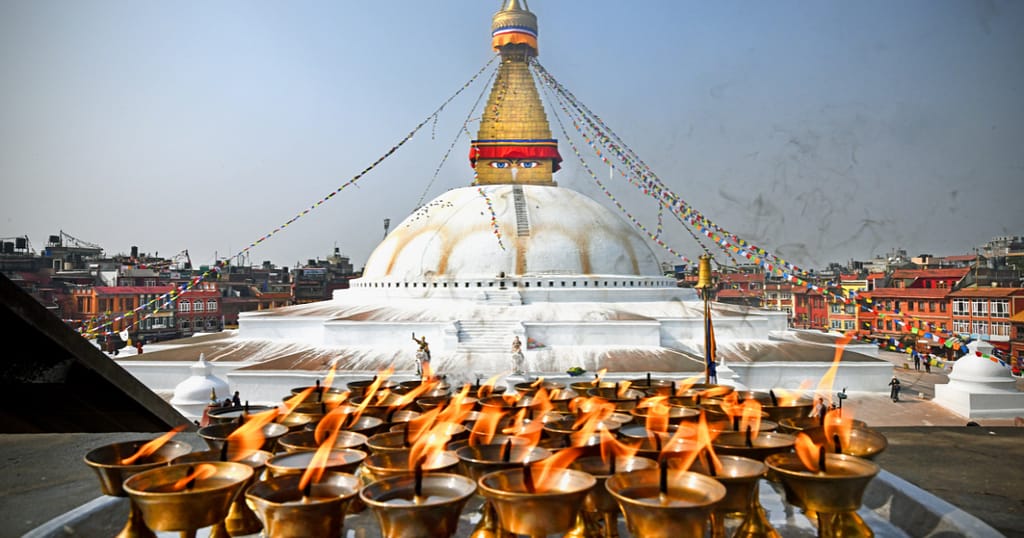
To reach Besisahar from Kathmandu, it takes around 6 to 7 hours of driving – you will be on a 175-kilometer drive from the capital city of Nepal.
Don’t get upset if you don’t like long travel in a vehicle. On the way, you will be welcomed by the majestic views of Annapurna, Dhaulagiri, and Machhapuchhre mountains as you ride across the banks of the Trisuli and Marshyangdi rivers.
Besisahar To Dharapani/Koto
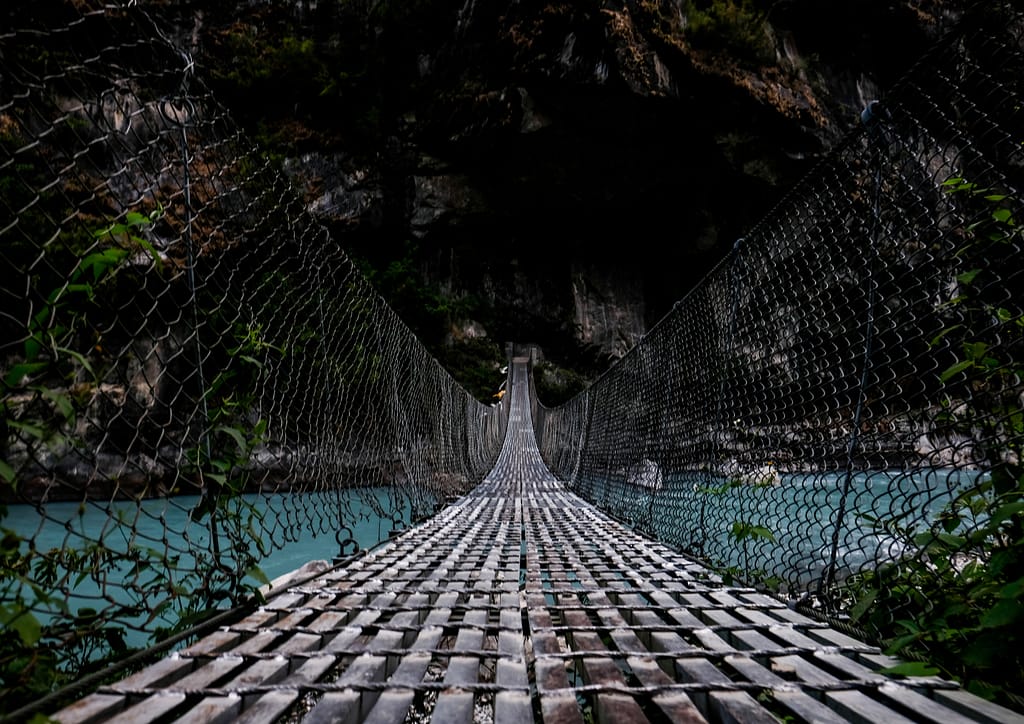
The next day, you will start your trip in a vehicle to Koto. You will travel on a seasonal road for 6 hours from Besisahar to reach your destination.
On the way to Koto, you will be welcomed by the beautiful Chamche (Bung) waterfall and Octopus Waterfall. Similarly, the majestic Manaslu and Lamjung Himal will always be in sight, keeping your journey calm and thoughtful.
To reach Koto, you will be passing across Jagat, Tal, Dharapani, Timing, Thanchok, and other spots. You will have to obtain a permit to start your hike ahead.
Koto To Meta Trek
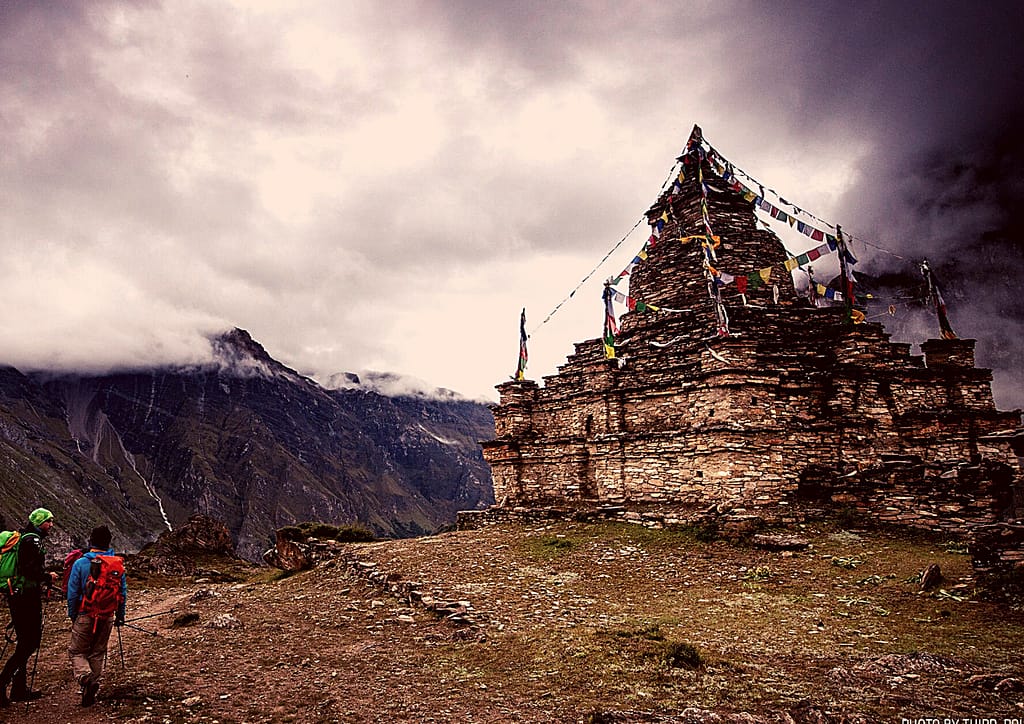
Once you obtain the trekking permit in Koto, your next destination is Meta. Be assured that your hike will be a worthy one since you will be on the verge of relishing a once-in-a-lifetime experience as you pass through the suspension bridge over the Marshyangdi River. In addition, the cinematic views of Annapurna II and Lamjung Himal make your trip fruitful.
Be sure that you are in good physical condition since your hike will be on rocky terrain. There are several tea houses in Chomche where you can have your meal and stay overnight in Meta.
Phu Gaun Trek
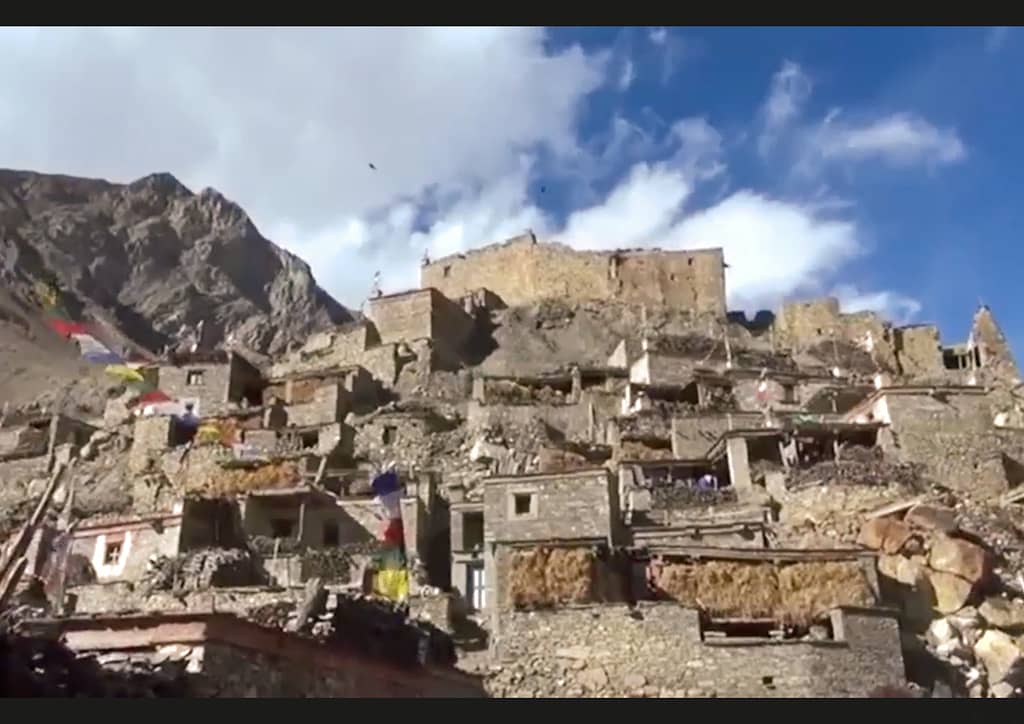
The next morning, you will be on a new mission, and that is to reach Phu Gaun. From Meta, it takes around 8 to 9 hours to reach Phu Gaun. The important thing you must be aware of is that there is a split way to Nar and Phu, and you should be getting on the trail to Phu Gaun – don’t be confused. You will be passing across the traditional villages of Chyakku and Kyang, from where you can see the majestic view of Pisang Peak. Similarly, your trail goes around the bank of Phu River, and after a few hours, you will reach the gate of Phu Village, where you can stay overnight having a cozy meal.
Phu Gaun to Nar Phedi
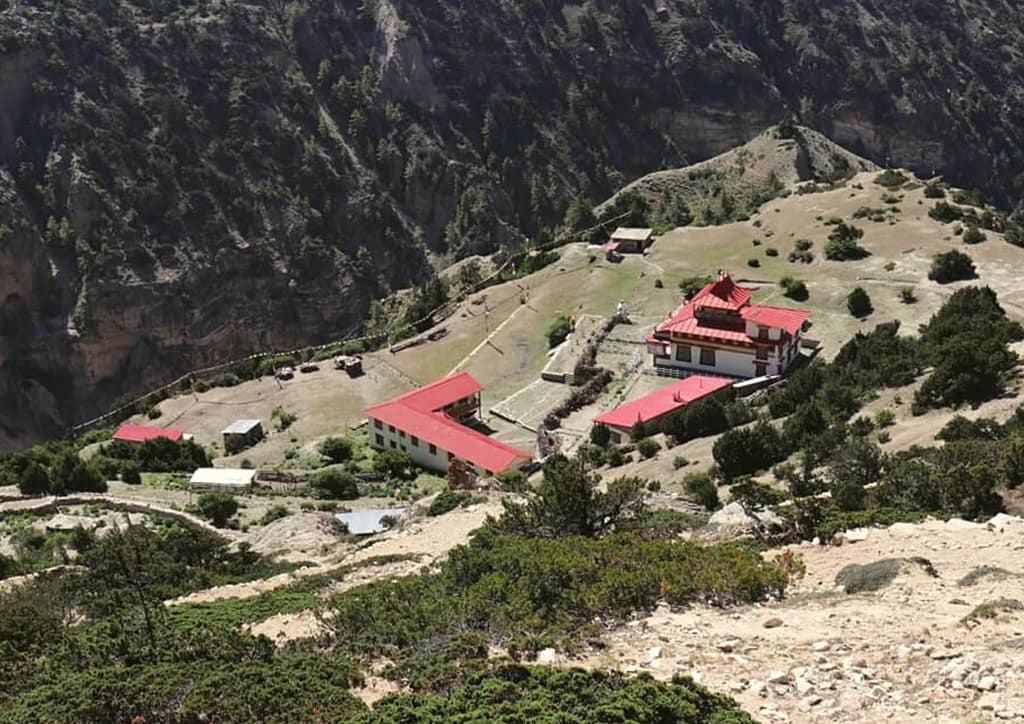
One thing that you should remember is that you need to get back to the same split way that leads to Nar and Phu for your next hike.
You will head towards Nar and cross the Nar Khola. In addition, there is a historical Mahendrapul, after which you will reach Satek Monastery. You will stay overnight there at the monastery with the ambience of Buddhist culture amongst the monks.
Trek To Nar Gaun

After you stay overnight at Satek Monastery, your next stop is Nar Gau. It takes around 2 hours to hike from Nar Phedi to the gate of Nar-Gaun. You will pass across a rugged uphill path that features a cinematic view of Pisang Peak and Kanguru Peak.
Similarly, the traditional village of Nar and the Buddhist monasteries along the way will be a soothing experience that you will relinquish in this hike.
You can stay at Nar Gaun overnight, where you can enjoy cozy local meals, including Dal-Bhaat and Dhindo.
Ngawal Valley Trek
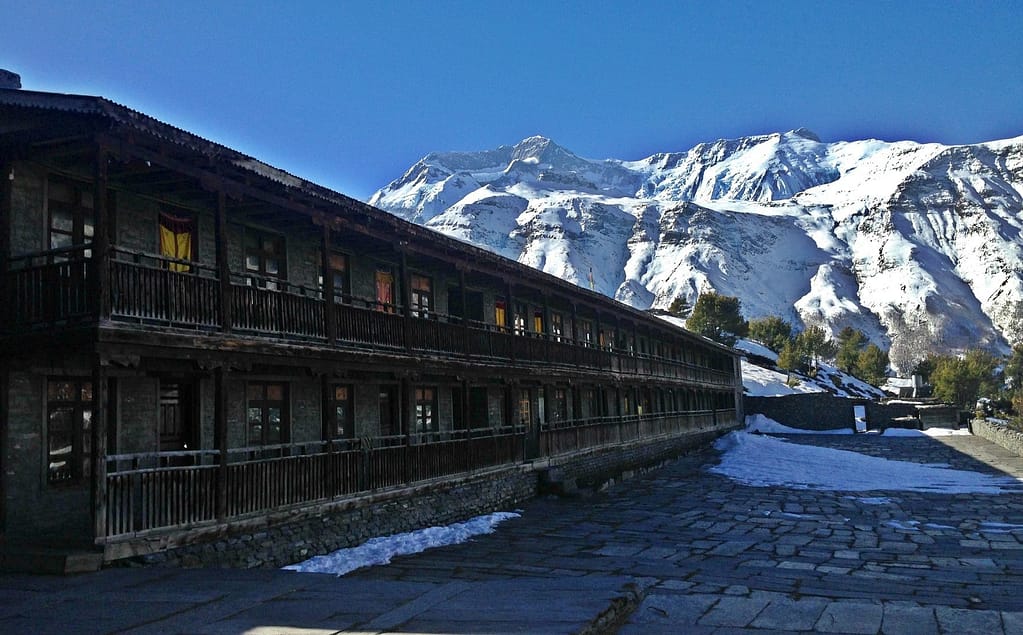
Your next destination is Ngawal Valley. Once you wake up the next morning, you will be heading towards Ngawal Valley. The way is uphill and rugged, so be sure to use your hiking boots and other gear.
The trek takes around two and a half hours and takes you up to Kangla Phedi. Likewise, in the journey, you will pass across some spots like Ghatte Khola—mountains like Annapurna II and IV, Kanguru Himal, and Lumjung Himal will always be in your sight to make your journey fruitful.
From Kangla Pass, you can see the range of Annapurna mountains, and from there, you will be walking downhill to reach Manang Valley. After that, you will join the trail of Annapurna Circuit, and you will stay around Ngawal village.
Trek To Pisang

It’s the second phase of you getting back from the Nar Phu trek. It will take a few hours to reach Pisang Valley from Ngawal Valley. As mentioned above, you will be passing across the beautiful lake Pisang.
Back To Besisahar And Kathmandu
You can return to Besisahar by vehicle and stay at a hotel once you reach there. After you stay overnight in Besisahar, you will be heading back to Kathmandu.

Nar Phu Valley Trek Map
Having a map of the Nar Phu Valley Trek is highly recommended. A few key things to be aware of when looking at the map of the Nar Phu Valley are:
The topography and lay of the land
You will want to familiarize yourself with the location of areas such as villages, guesthouses, passes, and water sources.
The distances between villages and waypoints
This will give you an idea of how far you can expect to walk each day.
Places to rest and take shelter
Having knowledge of where the nearest places are for an overnight stay or a quick rest stop can come in handy if you get caught in bad weather or need a break from walking.
Highlighted trails and routes
When viewing the map, you should be able to pick out which trails are used for trekking and which ones are not.
Understanding these things clearly before embarking on your Nar Phu Valley trek will help you be much better prepared and have fewer worries while exploring this beautiful part of Nepal.
Accommodation Facilities During Nar Phu Valley Trek
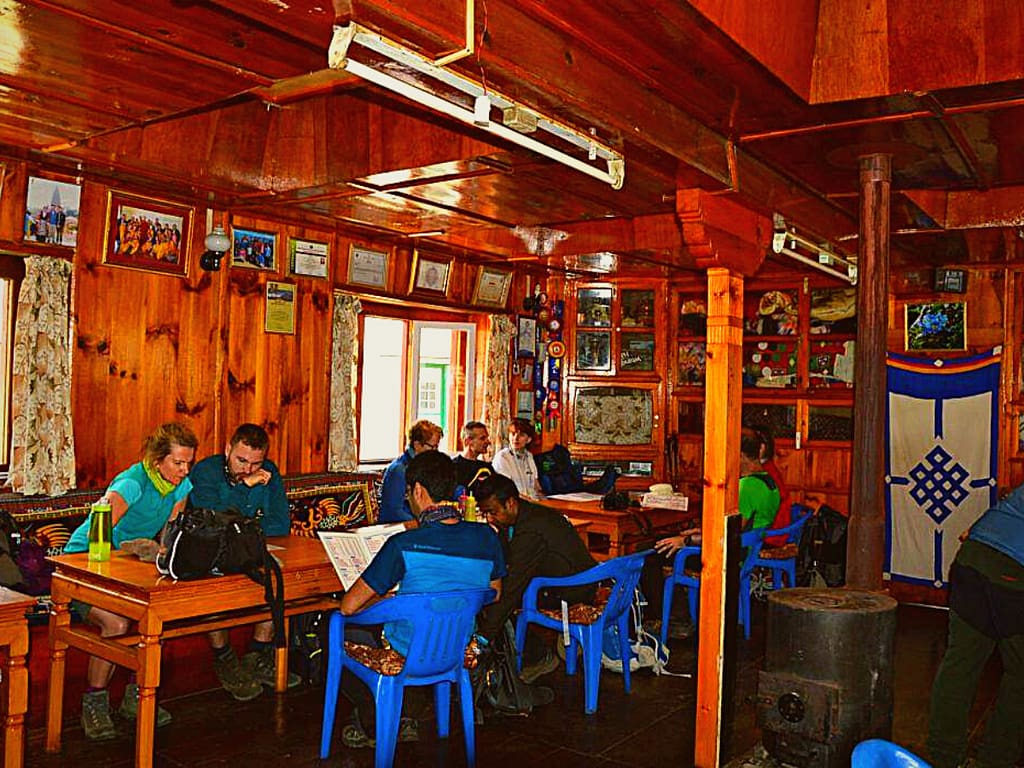
Before you can embark on your Nar Phu Valley Trek, you will need to plan for the accommodation facilities available during this trek. The accommodation will depend on your itinerary and budget, so you will need to make sure that you have a clear idea of both before you decide.
During the Nar Phu Valley Trek, you have a variety of accommodation options. You can choose from basic tea houses with shared bedroom and bathroom facilities, homestay with local families, or camping under the stars.
The teahouses offer basic amenities and usually run on a first-come-first-served basis unless alternative bookings have been made in advance. Camping is another great option if you are willing to rough it for a few days in exchange for some incredible views and experiences.
Whichever option you choose, research thoroughly and plan ahead to make the most of your Nar Phu Valley Trek experience!
Gears And Equipment Required For Nar Phu Valley Trek
While doing the Nar Phu Valley trek, you must carry a few essential gear and equipment. Firstly, you will need good-quality hiking shoes that provide good grip and comfort. Make sure that they are waterproof and comfortable to walk in.
Secondly, you will need walking sticks, which will help you to keep your balance and walk comfortably throughout the trek.
Thirdly, it is important to have a good-quality backpack with a 40L—50L capacity and an adjustable hip belt; this will help you carry your stuff with ease.
Fourthly, do not forget to carry a raincoat or poncho, as the weather can be unpredictable.
Lastly, it is essential to carry your first aid kit along with necessary medicines like Diamox, which helps prevent altitude sickness.
Physical Requirements To Reach Nar Phu Valley
The Nar Phu Valley is a remote area in the Annapurna region of Nepal. Hence, it requires a high level of physical fitness and endurance to reach. The trek to Nar Phu involves several days of hiking at high altitudes, often over rough and rugged terrain. You will need to be able to walk for long periods and also carry a backpack with your gear.
Excellent physical condition is required before embarking on this trek, as the hike’s high altitude and rugged nature can be a challenge for those who are not used to it. You should be able to walk for at least 6-7 hours per day and carry a backpack weighing up to 20kg. You should also be able to handle uneven terrain, such as rocky paths and steep inclines.
In addition to physical fitness, it is important to have a good level of mental and emotional resilience for this trek. The Nar Phu Valley is a remote and isolated region, and you will be spending several days in the wilderness without access to modern amenities.
It is important to be able to cope with the isolation and challenge of the environment and to have the mental and emotional strength to deal with any unexpected situations that may arise.
Overall, it is important to be in good physical and mental condition before embarking on the Nar Phu Valley trek. It is advisable to train and prepare yourself before the trek and consult with a healthcare professional to ensure that you are fit and healthy enough to undertake this challenging adventure.
Transportation Facilities During Nar Phu Valley Trek
Now, let’s discuss the transportation facilities during your Nar Phu Valley Trek. It is essential to know that there are no direct buses connecting Kathmandu to Nar Phu and returning. Planning and booking your trip in advance is key to a successful trek.
You can hire a jeep service from Kathmandu to reach the starting point of your trek. If you have enough money, you can even take a flight from Kathmandu to Jomsom Airport. Public buses also ply between Kathmandu and Besishahar, the base of your trek. From here, private jeeps are available to reach nearby villages like Deng, Chame, Koto, etc. These places will serve as pitstops during your trek.
Hitchhiking is also an option, but please consider whether it’s safe for you. During peak seasons, these routes get crowded, so you may have difficulty getting a ride back after your trek.
If you’re looking for an epic trekking experience, look no further than the Nar Phu Valley Trek. With jaw-dropping scenery and plenty of challenging terrain, this trek is perfect for experienced hikers. Be sure to consult the itinerary map and permit requirements before embarking on your trek. Also, be sure to budget appropriately for this once-in-a-lifetime experience.
FAQs About the Nar Phu Valley Trek
You’re probably wondering what kind of paperwork and permits you’ll need to complete your Nar Phu Valley Trek in 2024. Luckily, the process is relatively straightforward!
Do I Need A Permit For Nar Phu Valley Trek ?
First up, you’ll need to apply for an Annapurna Conservation Area Project (ACAP) permit. This permit costs NPR 2000 per person, and is simple to obtain through a local trekking agency or online. You may also have to pay a ACA fee, depending on what part of the trail you plan to explore.
Next, you should consider acquiring a Trekkers Information Management System (TIMS) card. The card is meant to facilitate the registration of trekkers in each district they visit during the trekking. And it can cost around NPR 1000 per person.
Do I Need Insurance For Nar Phu Valley Trek?
You may also want to consult a travel insurance provider prior to departure—just in case anything goes wrong on the trails! Once all the necessary paperwork is taken care of, you’re ready for the adventure of a lifetime.
Where is Nar Phu Valley?
Nar Phu Valley is located in the remote villages of Nar and Phu. It sits near Chame in the Annapurna Circuit.
In Nar Phu Valley, you can learn about the local lifestyles and culture of Khampas (Tibetan refugees).
Being a travel and trekking guide for over a decade, I decided to expand my passion for a travel to be a tour organizer and build my team of travel experts. What's best about my passion is that I get to spend a considerable amount of time every single day with the legendary climbers and mountain lovers from all around the worlds. There's no greater achievement for me than having a set of regular friends around who always have stories of their great feat or their special encounters with the locals in the mountains to share.
Leave a Reply Cancel Reply
Your email address will not be published. Required fields are marked *
Name *
Email *
Add Comment
Save my name, email, and website in this browser for the next time I comment.
Whatsapp/Signal/Telegram 24/7: +9779849697919

Nar phu valley trek
NTH » Nar phu valley trek
- Trek Duration 12 Days + –
- Accomodations Tea House Trek
- Max Altitude 5320 Meters
- Trekkers Numbers 1-18 but Flexible
- Best Time of Year Spring and Autumn
- Trek Difficulty Strenuous
- Price: 800 or + – Quick Inquiry
Overview of the Nar Phu Valley Trek

Table of contents
- 1. Nar phu trek facts
- 2. Narphu trek highlights
- 3. Narphu valley trek map
- 3. Narphu valley trek itinerary
- 5. Include in cost
- 6. Exclude in cost
- 7. Narphu valley trek faq
Nar Phu trek facts

Narphu trek highlights
- Trekking through the most isolated regions of the Nepal
- Great view from the Koto of Mt. Lamjung and Mt Manaslu
- Trekking through the deep george of the River valley with the green forest and white snow capped mountains.
- Mountain terrains around the Meta and great scenery of Mt Annapurna II.
- Some very old monasteries as well as some new monasteries to observe in the trek.
- Local languages, people, cultures as well as lifestyles of the local peoples. You will see yak hurdles around the trails of the Phu and Nar.
- Stunning view of Mt Himlung and other mountains ranges from the Phu Villages.
- Thousands of the Mani walls and Chorten around the trails.
- Adventure pass to Kang la which takes about 11 hours to arrive in Ngwal.
- Stunning view of Annapurna II, Annapurna III, Annapurna IV, Gangapurna, Tilicho peak from Kang la pass 5320 Meters

- Nar Phu Valley trek fixed departure: Nepal Trek Hub can offer you This Nar phu trekking any time of the year. You should manage your time in your appropriate time. But Keep things on your mind that you have to be at least 2 people to go to Nar phu valley trek. Due to Nepal Government Law to obtain permit at least 2 people group is needed. When we get the inquiry of single people we try to find the people who can share the permit. We try with out best however, We can not give you guarantee that we always find people, but we try. If you are 2 person we easily can make your own plan on your dates and wish. we can specially tailor your holiday to make it lifetime memorable.
- Nar Phu valley trek gear list/ Equipment: Nepal Trek Hub suggest you the list of gear for trekking on the time of guest corresponding. You can prepare yourself with base of these suggestion. If you can not complete gear/equipment or could not manage due to time we are here to help you. You can get gear in Kathmandu, buy or rental both are possible
- Rucksack/Duffel bag: Transporting your daily luggage while you are on trek, you should bring a rucksack or duffel bag with you. This will be carried out by our teams porter. Please bring the rain cover to protect rain or dust. Usually porter don’t have protection cover for bag
- Transportation: Kathmandu to Besisahar there is local bus service. There are two types of bus, one is Micro Bus another is Big Bus. There are local jeep to Koto or you can reserve the jeep. Finding a sharing jeep is quite difficult but sometimes you can get that as well. After you arrive the chame you need again take the jeep to besisahar or you can keep trek continue to Annapurna circuit. From Muktinath you can take the jeep or Bus to Tatopani . Tatopani to ghorepani you can do trek or keep travelling on bus or jeep to Pokhara.

Nar Phu trek preparation
This is a quite challenging and remote trek, you need to do some planning before you come to trek. There are so many components which can be vital for the successful of trek. There are some certain thing you need to think about it, What do should you need to prepare? What information should you need to obtain? We hope this page will help you to get all the answer. if not please give us a Question
Step-1: Determine how many days will you do trek?
At the the first stage of your Nar phu trek preparation, you need to calculate your time duration, how many days trek you can do as per your time frame? Do you only want to do Nar phu trek or Annapurna circuit also. how many days in Kathmandu and pokhara. You need to spent at least one day in Kathmandu before you start your trek because of Permit work. The immigration office only issue the permit after validation and seeing your original passport. One day it takes generally or even during the day you can start and stay at Arughat by Jeep
Step-2: Know more about Nar phu trek
- Trek Grade: This is quite challenging type of trek, you need to know more about your trek grade, get some information regarding Nepal trek grade
- AMS: Altitude Mountain Sickness is always concern who do the trek in mountain. This can be very dangerous if people doesn’t care. There are two types of AMS. Ultimately they impacts very badly on human body. Before it get’s worst you need to be careful. Get More Information About altitude mountain sickness, This Trek has a a lot of chances of Altitude mountain sickness. Read about the Altitude mountain sickness for more information and be prepare for your trip
- Nepal Visa: Most of us have a question to get the Nepal visa. It is very simple to get visa. If your city does have a Nepal embassy would be very easier for you. if not you can get here in Nepal as well. If you need more information regarding Nepal Visa Please go through Nepal Immigration official website Nepal Immigration or you can also go through our website Nepal Tourist Visa Page
- Gear list This trek requires a good gear list, You need to bring gear to do trek with very easily. The gears plays a very vital role for successful of your trek. Please try to get all gear from your country which makes you easier. insufficient gear you may also find in Kathmandu as well. If you are willing to hire a sleeping bag or other stuff, you can hire in Kathmandu, We will help you to hire the stuff without deposit in shop. Get some information Nepal trek packing list to prepare yourself
Nar Phu valley trek map
Nar phu valley trek itinerary.
On arrival at Tribhuvan International airport, you’ll be pick up then transfer to the hotel together. We talk about trekking and preparation for the trekking, such as a buying and renting the stuff for trekking
We do sightseeing in Kathmandu. There is a place like Pashupatinath where you can see Hindu culture. Another spot is Kathmandu durbar square, where you can see the history of Nepal. Boudhanath and Swaymbhunath is Buddhist pilgrimage site. we do sightseeing there as well. all this mentioned place are UNESCO World Heritage sites. At the same time today your permits for the trekking would be ready for tomorrow. If you like to stay just free you cal also do like that. This day if for permit work. After we finish the permit work you can drive to Besisahar as well.
Trek staff will come to pick up you at your hotel, then you together go to buspark to get the bus to Besisahar . The besisahar is 135 KM from Kathmandu. On the way to besisahar you can see the Trisuli and Marshyandri River . Marshyandri river is from Annapurna circuit and from Nar Phu as well. When you arrive to Besisahar, you change the bus and take the Jeep to go Koto . Driving through tha deep valley a long with Marshyandri river is amazing experience. You can see trekkers doing trek to Annapurna circuit and some village like Syange , Jagat , Chamje , Tal , Dharapani , Danakyou , Timag on the way Overnight at Koto
Start the day early today, as there is quite long distance to walk. Cross the river Marshyandri to enter the Nar Phu valleys . Walking trail passes through beautiful pine forest,and narrow trail of the river often side by side. As the trail climb higer the trees level becomes thinner. As we near from the Meta there is a climbing part which is quite difficult.
Walking from meta to phu village, we can see some chorten a long the way. There are numerous chorten. As we leave the Meta near the trail we separate, we can see monastery and deep Georges on colorful land. Chyaku is next village where we can reach crossing the suspension bridge often. We continue to Keep climbing and reach Kyang. Before Kyang you can see the excellent views of the Annapurna and Pisang Peak and Annapurna II. Rocky trail appears after we pass the phu khola which might takes about 3 hours. colourful chortens appears. Continue walking across a small glacial stream to a larger glacier stream with a half bridge. From here it takes about 1 and half hour to reach phu village, Himlung Himal and other snow peaks is clearly visible from this village.
Phu Village is located in High altitude. As we should cross the Kang la pass it is better to acclimatize and explore the village around here. Phu is an interesting village, and a day here you can well spent. If you are challenge seekers you can hike up to Himlung Base camp. We can see some blue ship around the village far while hike and if we go to himlung base camp we can see more blue ship
Trail descends passing many streams and suspension bridges until Mahendra Pul. there is long and high suspension bridge which can be reach by 4 hours walking from Phu. Gorge of Lapche River is very deep to see. We can do lunch here. After lunch the trails ascends passing many Buddhist stupas and chorten. As you climb higher more beautiful mountain peaks are visible. It takes about 2 hours to get Nar villag, on the way you can see yak pasture.
Second scheduled rest day for the acclimatization. You will be exploring Nar village nearby there. As you can also hike up to Kang la phedi as well. this is also beautiful village to relax and see the mountain view.
Today is the longest day of Hike, as you start early in the morning around 4 o clock you may be on the top around 10:00. this is totally more exhausted trail but very beautiful. When you arrive near the Kang la phedi you spent a lot of energy. From river the trail climb up so you will have less energy which is the toughest part of the journey. As you reach the Kang la pass you will see the stunning view of Annapurna range. The kangla pass is very narrow and steep cliff with very less area. You go down further 3 Hours to get Ngwal
As we walk the lower elevation today, you can see the wide range of Annapurna mountain including Annapurna II, III, IV, Gangapurna, Tilicho and many other peak. Overnight at Pisang
Today we drive to Kathmandu. First we take the jeep to Beisahar then Bus to Kathmandu
- Day 12:Back to your own country
Nar Phu Valley trek cost includes
- Airport Pick up and drop service
- 3 night’s twin sharing on tourist standard hotel accommodation in Kathmandu
- Meals on full board: Breakfast, Lunch and Dinner each day during the trekking days
- tea house basis trekking accommodation while on trekking days
- Fully escorted trek with fluent English speaking license holder local guide and each 2 guest 1 Porter basis
- ACCAP Permits
- Narphu special control region permit
- First Aid Box
- TIMS Permit
- Domestic airport pick up and drop off itinerary
- Food and accommodation and salary of Nepali trekking staffs
Cost excludes
- Any meal in Kathmandu
- Any kinds of battery charges, wifi charge, laundry service, phone calls and hot shower during the trekking.
- Personal trekking equipment and Clothing.
- Personal nature expenses, any drinks and bar bills.(tea, coffe, water, beer, alcohol, wine)
- Your travel insurance (it is mandatory in case of emergency).
- Any donation and monuments entrance fees.
- Tips for the crew (Note : TIPS is not compulsory but highly expected)
- Any other things which are not mentioned above
Narphu valley trek FAQ
Below we have presence some Narphu valley trek faq, This faq might be helpful to answer your some question, If you still have question let’s us know by email Ask Question
Which is the best time to Narphu valley trek?p
Without any doubts, September to November are the first best season to trek. The second best season is March – April to trek in Nepal. Because this both season the weather is very nice and clear. You can see the magnificent view of Mountain.
how many days is Nar phu valley trek?
Generally we have made 12 days plan from arrival to departure, if you want to do Annapurna circuit as well the trek will be longer.
What kind of accommodation in Nar phu trek?
There are very basic tea houses along the route. They provide a basic room for guest. For hot shower, they provide a bucket hot shower to the guest by charging some money or some place they do have a bathroom with solar.
Is there wifi on Nar Phu trek?
There is no WIFI available everywhere. But in some place they have installed but very slow wifi you can use to connect with your family and friends
Is there enough hotels in Nar Phu valley trek?
There are very less hotels around the route. If there is high season getting a room might be problem sometime. But don’t worry we manage everything accordingly
What is the drinking water on Nar Phu Valley trek?
Yes, There is a availability of Mineral water, every tea houses. It is always not good to drink the mineral water, first it is quite costly to traveler, secondly it is damaging the Eco-system, the water company using a lot of plastic bottles. In a mountain mineral water bottle are a real threat to the environment. We can use the water purifier or water purification tablet and become a responsible traveler
What is the maximum elevation of Nar Phu Valley trek?
kang la pass 5,643 meter is the maximum elevation that you need to reach. This is quite tough day for the trekkers because of long distance and continuously climb
what permit for Nar Phu trek?
Annapurna Conservation Area Project permit and Special permit for Nar phu trek. Nar phu Restricted area project permit for 1 week is about 75$ per week person.
Can I do trek with child
If the child can walk for 6-7 hours, then you can trek with child too. otherwise you need to extend your trek days
Standard price
Per Pax: (2 Person min)
Read Our Review

Read Our Review on TripAdvisor, We are Ranked 256/1400
Read Our Review on TrustPilot
Read Our Review on Google My Business
No of People : 1 2 3 4 5 6 7 8 9 10 11 12 13 14 15 16 17 18 19 20
Trek Information
- Best time to visit Nepal
- Nepal trek permit and fees
- Nepal trek packing list
- Altitude mountain sickness
- Nepal trek grade
- Tims card nepal
- nepal tourist visa
- Frequently asked question
- Responsible tourism
Why with us
Emphasis on the personal and customize itinerary, You can design your own personal tailored made holiday
Team of local expert guides, customer-focused, grassroots foundation with in-depth knowledge of Nepal.
Pay a fair salary to our team of reliable and experienced people
Guarantee of best value for money, best price and no hidden costs are implicit
Care for each of you individually, providing uncompromising service just for you.
Sensative about environment, we encourage our client’s to avoid mineral water, instead of this drink the own purified water and use chlorine tablet
Nepal Trek Hub has a 90% repeated customer, check our tripadvisior page
Why you like this?
Venture into a remote part of Nepal that few travelers get to see
you can enjoy the great views of Annapurna II, Himlung Himal, Gangapurna, Tilicho Peak and many other mountains
Observe the Tibetan culture and lifestyle of the area
Visit the renowned Tashi Lhakhang Gompa
Witness a Tibetan-derived culture, with unique and colorful prayer stones and monasteries

- You are here:
- Destination
- Trekking in Nepal
- Wilderness Treks
Nar Phu Valley Trek - 16 Days
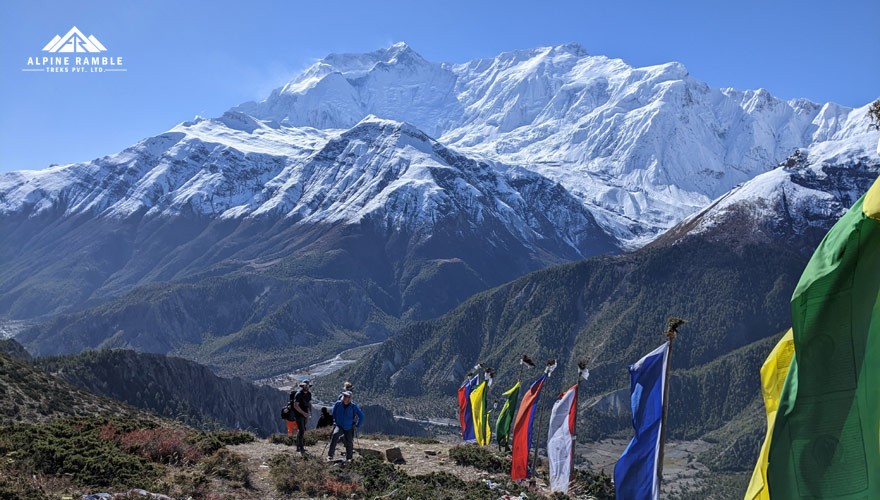
narphu nepal
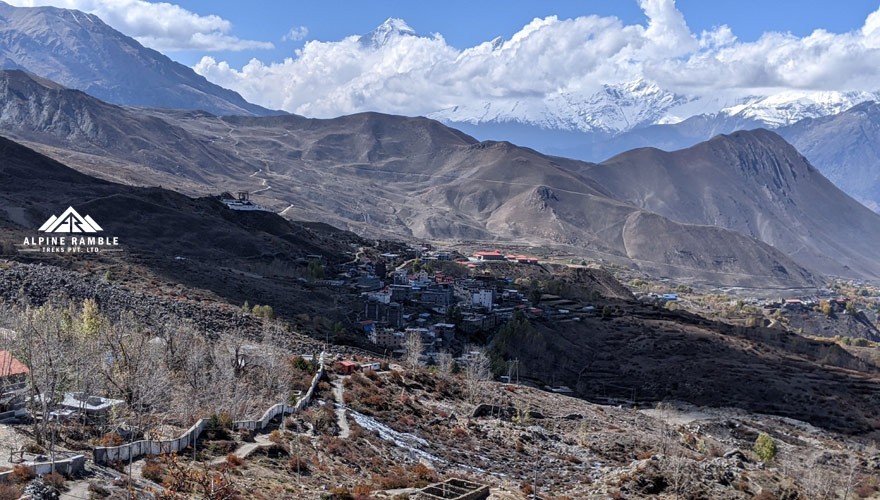
narphu trip
- Trip Duration 16 Days
- Difficulty Level Moderate - Strenuous
- Best Season March- May / Sep-Nov
- Max Altitude 4080 m
Nar Phu Valley Trek: Discover Nepal's Hidden Gem
Embark on an extraordinary journey through the captivating Narphu Valley, nestled amidst the grandeur of the Annapurna Region in Nepal. This unique trekking experience offers intrepid adventurers a chance to explore unparalleled natural beauty and delve into the rich cultural heritage of this remote region.
As you traverse the rugged terrain of Narphu Valley, you will be greeted by awe-inspiring vistas of snow-capped peaks, pristine glaciers, and tranquil alpine meadows. This unspoiled pocket of the Himalayas is a true paradise for those seeking solace in a serene and untouched environment.
Unlike the more popular trekking routes of Nepal, Narphu Valley remains relatively unexplored, adding to the allure and mystique of the adventure. The remote location of the valley has preserved its Tibetan-influenced culture, offering visitors a rare opportunity to witness traditional ways of life that have endured for centuries.
Beginning your ascent from the enchanting village of Jagat, located in the Annapurna Conservation Area, you will gradually make your way through picturesque forests, hidden valleys, and charming villages. This off-the-beaten-path trail will lead you to the heart of Narphu Valley, where you will be greeted by warm hospitality and genuine smiles from the local inhabitants.
Trekking through this secluded region, you will encounter ancient Buddhist monasteries, adorned with prayer flags fluttering in the wind, and prayer wheels spinning rhythmically. The cultural immersion continues as you engage with the affable locals, eager to share their traditions, folklore, and spirituality. Their art, handicrafts, and distinct attire reflect a vibrant tapestry of their heritage, adding an exceptional dimension to your journey.
The Narphu Valley Trek demands physical endurance, as you traverse high mountain passes, including the challenging Kang La Pass at an elevation of 5,322 meters. However, the rewards are immeasurable as you stand atop these lofty vantage points, surrounded by a panoramic vista of majestic peaks and glacial valleys—an awe-inspiring sight that will forever be imprinted in your memory.
In the evenings, as daylight fades, you will retire to cozy teahouses and lodges, nestled amidst breathtaking natural beauty. Here, you can relish hearty meals and share tales with fellow adventurers, forging lasting connections amidst the serenity of the Himalayas.
In conclusion, the Narphu Valley Trek offers intrepid explorers a chance to embark on an extraordinary journey through Nepal's hidden gem. Immerse yourself in its pristine landscapes, uncover its vibrant culture, and challenge your limits amidst the solitary grandeur of the Himalayas. Prepare to be captivated by an experience that will leave an indelible mark upon your soul.
Free- Benefits
- Free Airport transportationS
- Trekking equipment (DOWN JACKET, SLEEPING BAG)
- Duffle bag for helper/porter
- Souvenir: Trekking route map/browser and printed ART's hiking T-shirt, etc!
- An Oximeter to measure your Oxygen and Pulse during the trip
- WOKI TOKI - for communications in the mountain!
Detailed Itinerary
Day 1: arrival in kathmandu.
Upon your arrival in Kathmandu, our representatives will meet you at the airport and transfer you to your hotel. You will have the rest of the day to relax and explore the vibrant city.
Day 2: Kathmandu Sightseeing (1400m)
We will spend the day exploring the historical and cultural landmarks of Kathmandu. This includes visits to UNESCO World Heritage Sites such as Pashupatinath Temple, Boudhanath Stupa, Swayambhunath Temple, and Kathmandu Durbar Square.
Day 3: Drive from Kathmandu to Besisahar (760m) and to Chamje (1430m) - Distance: approximately 220km (8-10 hours drive)
We start our journey towards the beautiful Narphu Valley. The drive takes us through scenic landscapes, terraced fields, and quaint villages. We reach Chamje, a small village located at the confluence of the Marsyangdi and Dudh Khola rivers, where we will spend the night.
Day 4: Trek from Chamje to Dharapani (1860m) - Distance: approximately 14km (6-7 hours trek)
Our trek begins as we cross a suspension bridge and follow a steep trail uphill toward Seattle. We continue through dense forests and cross several small villages before reaching Dharapani, a traditional Gurung village.
Day 5: Trek from Dharapani to Koto (2600m) - Distance: approximately 9km (5-6 hours trek)
We continue our ascent through beautiful forests and scenic landscapes. Along the way, we encounter stunning views of Mt. Manaslu and other peaks. We finally reach Koto, a picturesque village located at the entrance of the Narphu Valley.
Day 6: Trek from Koto to Dharmasala (3230m) - Distance: approximately 14km (7-8 hours trek)
Our trek takes us through narrow gorges and dense forests as we enter the Narphu Valley. We follow the Phu River, passing scenic landscapes and traditional settlements, before reaching Dharmasala, a basic lodge where we spend the night.
Day 7: Trek from Dharmasala to Kyang (3840m) - Distance: approximately 12km (6-7 hours trek)
Today, we trek along the Tibetan-influenced culture of the Narphu Valley. We cross suspension bridges, ascend steep trails, and enjoy panoramic views of the surrounding snow-capped peaks. We reach Kyang, a small village with an ancient monastery, where we stay overnight.
Day 8: Rest and Acclimatization Day in Kyang
To acclimatize to the high altitude, we take a day to rest and explore Kyang. We can visit the ancient monastery and immerse ourselves in the unique culture and traditions of the local community.
Day 9: Trek from Kyang to Phu Gaon (4080m) - Distance: approximately 12km (6-7 hours trek)
Our trek continues as we head toward the remote village of Phu Gaon. We pass through picturesque landscapes, encounter yak herders, and enjoy the stunning natural beauty of the Narphu Valley. In Phu Gaon, we experience the traditional lifestyle of the local Bhote people.
Day 10: Exploration Day in Phu Gaon
We spend the day exploring Phu Gaon and its surroundings. We can visit the Tashi Lakhang Monastery, which is believed to be the last monastery constructed by Karmapa Rinpoche. We immerse ourselves in the rich Tibetan Buddhist culture of Phu Gaon.
Day 11: Trek from Phu Gaon to Nar Phedi (3490m) - Distance: approximately 10km (5-6 hours trek)
Leaving Phu Gaon, we descend towards Nar Phedi, following the Phu River. We traverse through yak pastures, cross suspension bridges, and witness the unique beauty of the Narphu Valley. Nar Phedi is our resting point for the night.
Day 12: Trek from Nar Phedi to Nar Village (4110m) - Distance: approximately 8km (4-5 hours trek)
We continue our trek to the beautiful Nar Village. The trail offers breathtaking views of the surrounding peaks and glaciers. Upon reaching Nar Village, we can explore the village and interact with the locals to learn about their culture and way of life.
Day 13: Exploration Day in Nar Village
We spend a day in Nar Village, exploring the local culture, traditions, and lifestyle. We can visit the ancient Buddhist monasteries, stroll through the village, and enjoy the serene atmosphere of this remote Himalayan settlement.
Day 14: Trek from Nar Village to Ngawal (3660m) via Kang La Pass (5322m) - Distance: approximately 15km (7-8 hours trek)
Today, we embark on a challenging trek, crossing the high-altitude Kang La Pass. The pass offers exceptional panoramic views of the Annapurna and Gangapurna mountain ranges. We descend towards Ngawal, a beautiful village known for its Buddhist monasteries and traditional architecture.
Day 15: Trek from Ngawal to Pisang (3200m) - Distance: approximately 7km (3-4 hours trek)
Our trail gradually descends through pine forests and terraced fields, leading us to Pisang. We pass charming villages and enjoy stunning views of the Annapurna range. In Pisang, we can explore the village and interact with the local community.
Day 16: Trek from Pisang to Jagat (1300m) - Distance: approximately 18km (7-8 hours trek)
We continue our descent towards Jagat, following a scenic trail along the Marsyangdi River. We pass through beautiful landscapes, terraced fields, and small villages before reaching Jagat, where we spend the night.
Day 17: Drive from Jagat to Kathmandu - Distance: approximately 200km (8-10 hours drive)
After breakfast, we drive back to Kathmandu, enjoying the picturesque views along the way. Upon reaching Kathmandu, you will be transferred to your hotel. In the evening, you can explore the bustling streets of Thamel or celebrate the successful completion of your Narphu Valley Trek.
Please note that this detailed itinerary is subject to change due to weather conditions, group pace, and other factors. Our experienced trekking guide will ensure the best possible experience while considering the safety and comfort of all participants.
- vivid Mountain Scenery from the day to start
- Extraordinary Views of Annapurna, Dhaulagiri, Manaslu, etc.
- Pass the highest pass of Kanga-La 5,545 meters
- Visit beautiful Temples, Monasteries & local Villages
- Walkthrough the World's Most Famous Himalayan region
- Enjoy the sound of Rivers, Waterfalls & Valleys
Trip inclusion
- Cost Includes
- Cost Excludes
- International and domestic Airport pick-up and drop by private car.
- Three meals a day (Breakfast, Lunch, and Dinner/ the main course) during the trek in the Himalaya.
- An experienced and Knowledgeable English-speaking Govt. registered trekking guide.
- All Food, Accommodation, Insurance, and transportation for the guide.
- All the ground transports
- Annapurna conservation area permit
- TIMS card (Trekking Information Management System)
- Trekking equipment such as the Sleeping bag, down jacket, etc. on return basic
- Trekking lodge (Tea House) throughout the trek.
- Nar Phu valley restricted area permits fee.
- Assistant guide group size of more than 6 people above in a group.
- Seasonal fresh fruits desert every day
- Appreciation of certificate after the successful trek
- Farewell Dinner at a typical Nepalese restaurant with traditional music and dance
- Souvenir: Trekking route map/browser and printed ART company T-shirt
- Compressive first aid box.
- Emergency rescue operation assistance in arranging in case of complex health condition (funded by travel insurance)
- All government, Local taxes/ vat and official Expenses
- Nepal entry visa fees (you can easily issue the visa on arrival at Tribhuwan International Airport, Kathmandu). $25 USD for 15 days Visa.
- Extra accommodation and meals behind schedule (Foods and accommodations before or after the trek)
- Extra drinks as alcoholic & non-alcoholic such as Fanta, Coca-cola, sprite, water, beer, etc.
- Additional cost by out of management control due to the landscape, weather condition, illness, change of government policies, strikes, and physical condition, etc.
- Personal expenses such as snacks, laundry, telephone, WIFI, hot shower, etc at tea houses on a trek.
- Travel insurance which has to cover emergency rescue evacuation from the high-altitude
- Personal trekking equipment for this trek
- Tips for guide and staffs (Tipping is expected- recommended by our mountain culture)
- Any other expenses that are not mentioned in the Price Include section of this trek
Food on Trek
Common Breakfast options - Tibetan Breads (a fried bread in oil, it’s also named by Gurung bread in Annapurna area), Chapati with Cheese (dry bread- a local wheat bread), Oatmeal, French toast with jam, honey and peanut butter, Corn Flakes, Hashed brown, fried, Scrambles and boiled eggs, pancakes, porridge with milk, Muesli, Vegetable items and any kind of hot drinks are available except espresso, Americano
Common Lunch options – different verity of Thukpa (noodle soup), Dahl and Bhat (Nepalese local meal), Momos ( dumplings), Tibetan / chapatti bread, Macroni, Spaghetti, Sherpa Stew, a verity of soups, steaks, potatoes items, Sandwiches, Pizza, rice with curry, spring rolls, burgers and Pizza, yak steak and desserts items.
Common Dinner options - Momos (dumplings) different verity of Thukpa (noodle soup), Dahl and Bhat (Nepalese local meal), Tibetan / chapatti bread, Macroni, Spaghetti, Sherpa Stew, a verity of soups, steaks, potatoes items, Sandwiches, Pizza, rice with curry, spring rolls, Raman soups, burgers and Pizza, yak steak, desserts items, hot and cold drinks are available on the menus on tea house, the menu’s selected meals are fresh and healthy with hygienic specialists by the mountain for the mountain trekkers.
Water on trek
The water on a trek is available at every trekking lodges or shopping shops along the way, buying a regular bottle of mineral water costs 1-3 USD per litter. Annapurna region has plenty of water sources to get the water as you can also refill the water from the random taps or water source, refilling waters from any of those sources is potable but it will be fine to drink with a Lifetraw or using the water purification pills – at least 2-4 L water per day is recommended to drink that keeps you hydrated.
Best Time to do Nar Phu Trek
Spring (Pre-monsoon) – Spring includes Feb, March, April, and May, the weather in this month is largely stable and dry with a moderate climate. This time of the year is fairly perfect for trekking in the Annapurna region offers a crystal clear view of the mountains and sceneries every day, the Temperature can reach up to 15- 20 degrees Celsius in the daytime and the temperature at the nighttime can drop down to - 8/12 degrees Celsius. The spring welcomes thousands of flora and vegetation that make the trek more beautiful and enjoyable in Nepal.
Autumn (Post monsoon)- Autumn is another great season for trekking on Annapurna Base Camp, Autumn includes the months of September, October, November, and December. During the autumn, the temperatures should be rated as between 14-20 degrees in the daytime, and nighttime can decrease to -5/10 degrees Celsius, it’s great for trekking.
Safety and Satisfactions
SAFETY IS OUR TOP PRIORITY- NOTHING IS MORE IMPORTANT THAN THE SAFETY AND HEALTH OF OUR CLIENTS AND EMPLOYEES.
This trek is a guided trip and you will be accompanied by one of the experienced and friendly trekking guides/ Sherpa who originally come from the mountain (same region) of Nepal, the guide will be carrying all the essentials equipment with a first aid kit for safety reasons; we would like you to take some of your own personal mediation on this trek. However, in emergency cases, if our clients have any trouble with mountain sickness or any unforeseen circumstances then we will always be standing by to send a rescue helicopter to bring our clients back to lower places or Kathmandu.
Passport and Visa
If you are traveling to Nepal you need to have a visa to enter Nepal. However, the arrival visa is available at Tribhuvan International Airport, Kathmandu's where you can simply get On Arrival Visa” and you must enter Nepal within six months from the visa issued date. Your total stay is counted starting from the day you enter Nepal.
Travel Insurance
In Safety reasons, Travel insurance is mandatory for trekkers in participating in any trek and tour programs on the mountains. Getting travel insurance, especially while traveling in the mountain areas is like security on which you can rely and enjoy your trip without any worries. We highly recommend getting good compressive travel insurance that covers things like emergency helicopter rescue, medical evacuations expense it will be assisted protection tour to cover personal injury, injury, repatriation expenses, and any kind of illness will be covered. Having good travel insurance will not only guarantee you peace of mind while you travel with us but also provide you with complete coverage for anything things that may go wrong.
Packing lists
- A few pairs of Thermal tops
- Fleece jacket/pullover
- Windcheater - waterproof shell jacket one pair
- Down jacket -( It will be provided by the company if you do not have your own)
- Comfortable Fleece/wool trousers
- Trekking pants- at least 2 pairs
- Mittens/woolen gloves
- Warm Hiking socks
- Trekking sue with spare laces
- Pair of flip flop
- Underwears & Swiming costume
- Hiking Cotton trousers/t-shirts
- Sun hat/scarf
- Sleeping bag -( It will be provided by the company if you do not have your own)
- Trekking poles (Not 100%)
- Day bag above 40 L
- 1 set- Headlamp
- Small lock for the day backpack
- Reusable water bottles- 2 letters
- Water purification tablets/ electric light
- Toiletries (wet tissue, quick-drying towel, toilet paper, moisturizers, lip balms, sunscreens, sanitary pads, hand sanitizer, nail clipper, small mirror, toothpaste & brush, etc)
- Rain poncho
- Basic personal first aid kit
Last-minute booking
The last-minute booking can be made by any interested travelers a day before the trip gets started. Moreover, the payment should be made 100% if you are booking this for the last minute and the booking can be made directly through the online form or, sending us an email, messages on Whatsapp, or by calling. But, Last minute booking may not be acceptable for Bhutan and Tibet trip.
We look forward to experiencing this trip with you in the land of the mighty mountains, and the place of Lord Gautama Buddha
Do We need Travel Insurance to trek in Annapurna Trek?
Yes, travel insurance is mandatory for trekking to the Everest region. -your travel insurance must cover medical and emergency repatriation inclusive of helicopter rescue and evacuation expenses at high altitude for individual trekking members, please kindly provide us your insurance to us at the time of booking your trip or later - before your trip get started. Alpine Ramble will help and assist you to buy travel insurance for potential unforeseen events or altitude sickness during the trek.
How to avoid altitude sickness in Annapurna trek?
- Ascend Slowly
- Avoid Alcohol, Cigarettes & Tobacco
- Proper Acclimatization Rest and walk slowly
- Drink plenty of water - at least 3 liters of a day
- Eat Well and Plenty- mostly soups items like garlic, ginger, etc
- Use the Diamox as per Doctor's instructors if AMS symptoms grew
Can I choose my own departure Dates ?
Yes, you could choose to own your departure dates according to your time and schedule if the published Departure dates are not suitable for your travel plans, we will help you to customize the trip Itinerary on your own time and preferences.
Do We need any permits for our Trekking toAnnapurna?
Yes, The trekkers should have to have registered trekking permits of Annapurna Conservation area Permit and TIMS (Trekker's Management Systems) and they are all helped and provided by Alpine Ramble Trekks- it's all are included on our package program.
This is my first trek; can I make it to Annapurna circuit Trek?
Of course, yes, you can! This trekking tour can be done by anyone from 10 years young to 75 years old with a reasonably fit by physical and mental. However, this trekking tour will be guided by a highly experienced and knowledgeable guide who helps you to accomplish the trek with great help and support thoroughly.
Do our Guides and porter have Insurance for Annapurna circuit trekking?
Yes, Our Guide and Porters are all insured and they have trekking climbing insurances for trekking to any mountain in Nepal.
What is the highest point of the Annapurna circuit trek?
The Highest Point of our trek is 5416 meters (Throng La) !
Will someone come to pick me up, on arrival?
Yes, on upon arrival at Tribhuvan International airport, you’ll be received and welcomed by one of our Alpine Ramble crews and transfer to the respective hotel
Can I get the internet and shower on Annapurna Circuit trek?
Yes, almost every teahouse has Wifi offer with a little charge
Can I carry and Change my currency?
Yes, we will help you to exchange your current very easily
What is the best seasons for trekking in Annapurna region?
The best season of the year for this trek is Autumn ( Spe- Dec) and Spring ( March-May) with the clear sky and great views- the temperatures are moderate, you can also do the trek in other months as well with less crowded.
What is the booking & payment method for Annapurna region trek?
The travelers need to be paid 10% of the full trip cost in advance and remaining of the funds for trekking can be made on arrival in Kathmandu. For the booking of your trip please go through the section of " BOOK YOUR TRIP" and click there to make your reservation, it's instant booking confirmation.
Does this program includes our meals on Annapurna trekking?
Yes, Three meals of a day including breakfast, lunch, and dinner will be provided during the trek in the mountain and foods you will be eating as per menu- offers a wide verity of meals including local and western continentals.
How to avoid Altitude sickness in Annapurna Ciruit trekking?
Can i store my luggage at hotel/ office before we start trekking .
Yes, We have a safe and sound place to store where you can be easily stored your luggage at our Hotel or office.
Lolita Bizzarri - December 01, 2023
Doing the Nar Phu Valley trek was one of the most exciting experiences of my life. 17 days of trekking organised to perfection with professionalism of the highest level. Dil is attentive to any client's needs (and I am not an easy client!), helpful and empathetic: with just a few words, he understood perfectly what I was looking for. My guide Harka was equally knowledgeable and attentive to my physical and mental well-being. We hiked over 5,000 metres and everything went wonderfully well, thanks also to Harka's attention to acclimatisation. To experience this trek slowly was the best gift I could have received. Thanks to Alpine Ramble!
Charlie - January 28, 2022
What an amazing experience to meet Dil and Arpan Gurung. Dil was a fantastic organiser, Arpan was an incredible guide and together they gave me a fantastic experience in the mountains. Every day felt like a new adventure and it was incredible to meet so many different people and see so many different locations in only 10 days. Arpan was always willing to help, gave me fantastic hints and information about the local area, and I was blown away at the serenity of the places we experienced. So few tourists made the experience even more unforgettable, and I loved getting an intimate experience with the owners of every tea house we stayed at rather than simply being treated as :another tourist. I cannot wait to come back to Nepal and will definately choose Alpine Ramble again. If you want a trekking company with huge hearts and even bigger heads Dil and Arpan cannot be beat! A once in a lifetime experience!
Similar Packages
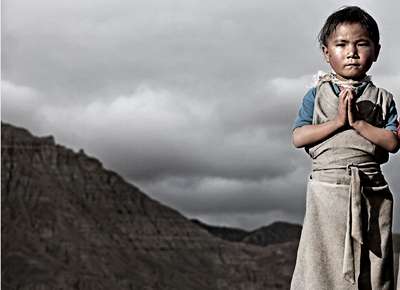
Off the Beaten Tracks in Nepal
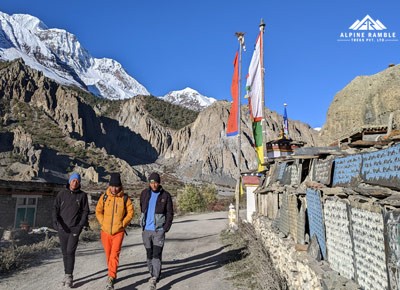
Short Nar Phu Valley Trek -12 Days
- from US$999
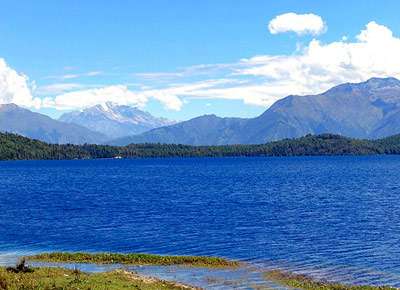
The Unique Burial of a Child of Early Scythian Time at the Cemetery of Saryg-Bulun (Tuva)
<< Previous page
Pages: 379-406
In 1988, the Tuvan Archaeological Expedition (led by M. E. Kilunovskaya and V. A. Semenov) discovered a unique burial of the early Iron Age at Saryg-Bulun in Central Tuva. There are two burial mounds of the Aldy-Bel culture dated by 7th century BC. Within the barrows, which adjoined one another, forming a figure-of-eight, there were discovered 7 burials, from which a representative collection of artifacts was recovered. Burial 5 was the most unique, it was found in a coffin made of a larch trunk, with a tightly closed lid. Due to the preservative properties of larch and lack of air access, the coffin contained a well-preserved mummy of a child with an accompanying set of grave goods. The interred individual retained the skin on his face and had a leather headdress painted with red pigment and a coat, sewn from jerboa fur. The coat was belted with a leather belt with bronze ornaments and buckles. Besides that, a leather quiver with arrows with the shafts decorated with painted ornaments, fully preserved battle pick and a bow were buried in the coffin. Unexpectedly, the full-genomic analysis, showed that the individual was female. This fact opens a new aspect in the study of the social history of the Scythian society and perhaps brings us back to the myth of the Amazons, discussed by Herodotus. Of course, this discovery is unique in its preservation for the Scythian culture of Tuva and requires careful study and conservation.
Keywords: Tuva, Early Iron Age, early Scythian period, Aldy-Bel culture, barrow, burial in the coffin, mummy, full genome sequencing, aDNA
Information about authors: Marina Kilunovskaya (Saint Petersburg, Russian Federation). Candidate of Historical Sciences. Institute for the History of Material Culture of the Russian Academy of Sciences. Dvortsovaya Emb., 18, Saint Petersburg, 191186, Russian Federation E-mail: [email protected] Vladimir Semenov (Saint Petersburg, Russian Federation). Candidate of Historical Sciences. Institute for the History of Material Culture of the Russian Academy of Sciences. Dvortsovaya Emb., 18, Saint Petersburg, 191186, Russian Federation E-mail: [email protected] Varvara Busova (Moscow, Russian Federation). (Saint Petersburg, Russian Federation). Institute for the History of Material Culture of the Russian Academy of Sciences. Dvortsovaya Emb., 18, Saint Petersburg, 191186, Russian Federation E-mail: [email protected] Kharis Mustafin (Moscow, Russian Federation). Candidate of Technical Sciences. Moscow Institute of Physics and Technology. Institutsky Lane, 9, Dolgoprudny, 141701, Moscow Oblast, Russian Federation E-mail: [email protected] Irina Alborova (Moscow, Russian Federation). Candidate of Biological Sciences. Moscow Institute of Physics and Technology. Institutsky Lane, 9, Dolgoprudny, 141701, Moscow Oblast, Russian Federation E-mail: [email protected] Alina Matzvai (Moscow, Russian Federation). Moscow Institute of Physics and Technology. Institutsky Lane, 9, Dolgoprudny, 141701, Moscow Oblast, Russian Federation E-mail: [email protected]
Shopping Cart Items: 0 Cart Total: 0,00 € place your order
Price pdf version
student - 2,75 € individual - 3,00 € institutional - 7,00 €

Copyright В© 1999-2022. Stratum Publishing House
- +977 9851042153 (Pradip)
Page not found
Sorry, the requested page is unavailable. Please try another page or link.
Go to Homepage
- About Company
- Booking Terms and Conditions
- Legal Documents
Associate Certifications
Registered with: Company Registration Office, Government of Nepal
Licensed by: Nepal Tourism Board & Department of Tourism
Member of: Company Registration Office, Government of Nepal
Member of: Trekking Agencies Association of Nepal

Affiliated with: Wilderness Excursion Pvt. Ltd.
- Yekaterinburg
- Novosibirsk
- Vladivostok

- Tours to Russia
- Practicalities
- Russia in Lists
Rusmania • Deep into Russia
Out of the Centre
Savvino-storozhevsky monastery and museum.

Zvenigorod's most famous sight is the Savvino-Storozhevsky Monastery, which was founded in 1398 by the monk Savva from the Troitse-Sergieva Lavra, at the invitation and with the support of Prince Yury Dmitrievich of Zvenigorod. Savva was later canonised as St Sabbas (Savva) of Storozhev. The monastery late flourished under the reign of Tsar Alexis, who chose the monastery as his family church and often went on pilgrimage there and made lots of donations to it. Most of the monastery’s buildings date from this time. The monastery is heavily fortified with thick walls and six towers, the most impressive of which is the Krasny Tower which also serves as the eastern entrance. The monastery was closed in 1918 and only reopened in 1995. In 1998 Patriarch Alexius II took part in a service to return the relics of St Sabbas to the monastery. Today the monastery has the status of a stauropegic monastery, which is second in status to a lavra. In addition to being a working monastery, it also holds the Zvenigorod Historical, Architectural and Art Museum.
Belfry and Neighbouring Churches

Located near the main entrance is the monastery's belfry which is perhaps the calling card of the monastery due to its uniqueness. It was built in the 1650s and the St Sergius of Radonezh’s Church was opened on the middle tier in the mid-17th century, although it was originally dedicated to the Trinity. The belfry's 35-tonne Great Bladgovestny Bell fell in 1941 and was only restored and returned in 2003. Attached to the belfry is a large refectory and the Transfiguration Church, both of which were built on the orders of Tsar Alexis in the 1650s.

To the left of the belfry is another, smaller, refectory which is attached to the Trinity Gate-Church, which was also constructed in the 1650s on the orders of Tsar Alexis who made it his own family church. The church is elaborately decorated with colourful trims and underneath the archway is a beautiful 19th century fresco.
Nativity of Virgin Mary Cathedral

The Nativity of Virgin Mary Cathedral is the oldest building in the monastery and among the oldest buildings in the Moscow Region. It was built between 1404 and 1405 during the lifetime of St Sabbas and using the funds of Prince Yury of Zvenigorod. The white-stone cathedral is a standard four-pillar design with a single golden dome. After the death of St Sabbas he was interred in the cathedral and a new altar dedicated to him was added.

Under the reign of Tsar Alexis the cathedral was decorated with frescoes by Stepan Ryazanets, some of which remain today. Tsar Alexis also presented the cathedral with a five-tier iconostasis, the top row of icons have been preserved.
Tsaritsa's Chambers

The Nativity of Virgin Mary Cathedral is located between the Tsaritsa's Chambers of the left and the Palace of Tsar Alexis on the right. The Tsaritsa's Chambers were built in the mid-17th century for the wife of Tsar Alexey - Tsaritsa Maria Ilinichna Miloskavskaya. The design of the building is influenced by the ancient Russian architectural style. Is prettier than the Tsar's chambers opposite, being red in colour with elaborately decorated window frames and entrance.

At present the Tsaritsa's Chambers houses the Zvenigorod Historical, Architectural and Art Museum. Among its displays is an accurate recreation of the interior of a noble lady's chambers including furniture, decorations and a decorated tiled oven, and an exhibition on the history of Zvenigorod and the monastery.
Palace of Tsar Alexis

The Palace of Tsar Alexis was built in the 1650s and is now one of the best surviving examples of non-religious architecture of that era. It was built especially for Tsar Alexis who often visited the monastery on religious pilgrimages. Its most striking feature is its pretty row of nine chimney spouts which resemble towers.

Plan your next trip to Russia
Ready-to-book tours.
Your holiday in Russia starts here. Choose and book your tour to Russia.
REQUEST A CUSTOMISED TRIP
Looking for something unique? Create the trip of your dreams with the help of our experts.

IMAGES
VIDEO
COMMENTS
Nar Phu Valley is situated in the Himalayan rain shadow, making it a great destination for monsoon trek. Nar Phu Valley Trek Permits & Required Documents. Anyone traveling to Nar Phu Valley must have two different types of permits. Since the Valley is part of the restricted area, you must be accompanied by a licensed guide in a group of at ...
This untouched valley was open to trekking only in 2002. It has since held the status of a restricted area, requiring a special permit to trek. An interested trekker needs to obtain two Nar Phu Valley Trek permits; Nar Phu Valley Restricted Area Permit (RAP) and Annapurna Conservation Area Project Permit (ACAP).
This permit is the main procedure to access the Nar Phu Valley which can only be obtained through immigration office in kathmandu. But this can be depend on the season like: September -November : USD 100 Per Person for seven days. Note: USD 15 per additional day. December -August : USD 75 per person for seven days.
Nar Phu Valley is a remote area trek of the restricted region and it is mandatory to have at least two trekkers to obtain a special permit with a registered guide (mandatory). This makes trekking in the Nar Phu Valley a safe destination, your guide will communicate with the locals arrange lodges, and lead you through the trail.
The Nar Phu Valley trek is a stunning and less-traveled route in the Annapurna region of Nepal. The distance of the trek can vary depending on the specific itinerary chosen and any side trips taken along the way. Typically, the Nar Phu Valley trek covers around 75-80 kilometers (around 47-50 miles) in total, taking about 10-12 days to complete.
Nar Phu Valley Restricted Area Permit. 7 Days (Sep-November) USD 100. Nar Phu Valley Restricted Area Permit. 7 Days (Dec-August) USD 75. ACAP (Annapurna Conservation Area Permit) Unlimited (Single entry) NPR 3,000.
Due to the Nar Phu valley trek's route through the Annapurna conservation area, which stretches above Manang, an Annapurna Conservation Area Project (ACAP) permit is required. The fee is necessary to build trails and save the local animals and flora in the Annapurna region. The cost for SAARC nationals is Rs. 1000 ($10 approximately) per person.
Nar Phu Valley Trek is one of the important restricted areas of Nepal located in the Manang district which is rich in natural and cultural beauty. This valley is wild and unexplored, located north of Annapurna Mountain, and opened for trekkers around the world in 2003. Nar Phu valley is inhabited by Tibetan Buddhist ethnic people so it offers rich Medieval Tibetan culture and festivals.
Permit Requirements and Costs. To trek in the Nar Phu Valley, you will need two permits. They are: The ACAP permit costs NPR 2,000 per person. And the RAP cost $100 per person every week on the month of September to November and $75 per person every week on the month of December to August.
Where to get Trekking Nar Phu Valley Trek Permit? Nar Phu Valley Trek Restricted Special Trekking Permit is submitted by an Agency and issued by Immigration in Kathmandu. And ACAP Permit is issued by NTB. What kind of documents required for Permit? 1)Original Passport of Trekkers(Nepal Visa Valid)
Nar Phu Valley Permit Cost: This trek required three types; of permits; a Special Nar Phu Valley Entry permit, an Annapurna Conservation Area (ACAP) Permit, and a Trekkers information management system (TIMS) card covering the complete Nar Phu Valley with Annapurna region: September - November
Overview. Nar Phu with Annapurna Circuit Trek -17 Days; it's an exhilarating journey in the Annapurna region that pursues the wild and innovative area located on the north side of Nepal, A delightful journey to the untouched and gorgeous valley offers a mesmerizing landscape of Annapurna massif, combining high peak and pass Knog- La (5200m), remote villages of Nar and Phu, narrow canyons ...
The Nar Phu Valley is a restricted area, so you'll need a Restricted Area Permit (RAP) to trek there. The cost of RAP permits is $90 per person for seven days This permit is issued by the Department of Immigration in Kathmandu through a registered trekking agency and be accompanied by a licensed guide to obtain the RAP for Nar Phu Valley.
In addition, the ACAP Permit is mandatory and costs NPR. 2000.00 Per person. All international trekkers must trek with a licensed guide and trekking must be arranged with a government-registered trekking agency as per Nepal Government Law. We organize budget trips to Nar Phu Valley at the most competitive price and offer you a tailor-made ...
Nar Phu Valley Trek requires restricted area permit which costs US$ 90 per week per person and December - August US$ 75 per week per person or equivalent convertible foreign currency. In addition, ACAP Permit is mandatory that cost NPR. 2000.00 Per person. You must trek with a licensed trekking guide and arranged with a government registered ...
For more information on the Nar Phu Valley Trek, please see below. Permit Requirements and Costs. To trek in the Nar Phu Valley, you will need two permits. They are: Annapurna Conservation Area Permit (ACAP) Restricted Area Permit (RAP) The ACAP permit costs NPR 2,000 per person. The RAP costs $100 per person every week from September to ...
Nar Phu valley trek is unique, wild and remote trek of Annapurna region. Often people calls it Nar Phu trek for easiness. This is also known as a hidden gem of Annapurna. There are two villages popular in this region. Nar a big village before Kang la pass and Phu village in front of Himlung mountain. Very fewer people do Nar Phu valley trekking ...
Day 11: Trek from Phu Gaon to Nar Phedi (3490m) - Distance: approximately 10km (5-6 hours trek) Leaving Phu Gaon, we descend towards Nar Phedi, following the Phu River. We traverse through yak pastures, cross suspension bridges, and witness the unique beauty of the Narphu Valley. Nar Phedi is our resting point for the night.
Welcome to the 628DirtRooster website where you can find video links to Randy McCaffrey's (AKA DirtRooster) YouTube videos, community support and other resources for the Hobby Beekeepers and the official 628DirtRooster online store where you can find 628DirtRooster hats and shirts, local Mississippi honey and whole lot more!
Burial 5 was the most unique, it was found in a coffin made of a larch trunk, with a tightly closed lid. Due to the preservative properties of larch and lack of air access, the coffin contained a well-preserved mummy of a child with an accompanying set of grave goods. The interred individual retained the skin on his face and had a leather ...
Meals (breakfast, lunch and dinner) with Tea and coffee and hot water during the trek. All local ground transportation to and from trekking. Nar Phu Valley Restricted Area permits (USD 100/7 days). Annapurna Conservation Area permit and all necessary permits. Salary, meals and accommodation of your guide and porters.
Zvenigorod's most famous sight is the Savvino-Storozhevsky Monastery, which was founded in 1398 by the monk Savva from the Troitse-Sergieva Lavra, at the invitation and with the support of Prince Yury Dmitrievich of Zvenigorod. Savva was later canonised as St Sabbas (Savva) of Storozhev. The monastery late flourished under the reign of Tsar ...
Dmitriy V. Mikheev, Karina A. Telyants, Elena N. Klochkova, Olga V. Ledneva; Affiliations Dmitriy V. Mikheev